





























Inspire+ NZ Artisan Awards season is always a highlight. Every year, we’re reminded how far local brands can go when passion meets perseverance. Many of these journeys begin in home kitchens, on family farms, or at weekend farmers’ markets, where ideas are tested, refined, and brought to life.
The product that might have started in a recycled jar or hand-stamped paper bag is now beautifully branded, supermarket or foodservice ready, and, in many cases, making its way onto the global stage.
What’s most inspiring is that the journey doesn’t end at the shelf or in the restaurant kitchen. The best brands never stand still. They adapt, rethink,
and ask what comes next. That could mean reformatting for foodservice, exploring aged care, scaling into convenience channels, or tapping into new consumer trends.
This year, we’re proud to return as innovation judges at Anuga where packaging continues to be one of the most talked-about aspects of product design. It's not just about visual appeal. It's about mouthfeel, function, and fit, how a product is used, stored, and experienced. From the shape of a bottle to how easily it pours, great packaging strikes a balance between beauty and practicality.
Across this year’s Artisan entries, we’re seeing brands thinking bigger, asking smarter questions, and designing for the
real world. Taste and concept remain essential, but so does usability.
Innovation isn’t a moment. It’s a mindset. The brands that keep asking how they can do better are the ones that thrive, grow, and make a lasting impression. n

















The Food and Grocery Council is an industry association for grocery suppliers providing members networking, events, industry information and strong advocacy. Contact us for information on the benefits of membership: raewyn.bleakley@fgc.org.nz
• Networking • Industry Updates
• Conference and Events
• Education and Training
• Advocacy and Law Reform
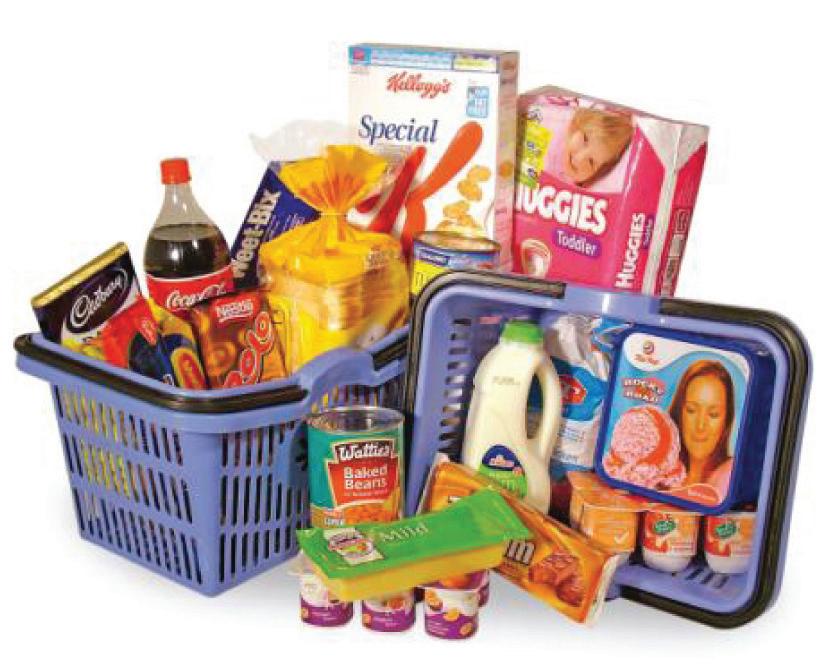
PUBLISHER Tania Walters
EDITORIAL DIRECTOR Sarah Mitchell
EDITOR-IN-CHIEF Caitlan Mitchell
CONTENT MANAGERS Caroline Boe, Daniel Rogers
EDITORIAL ASSOCIATES Sam Francks, Jenelle Sequeira
SENIOR DESIGNER Raymund Sarmiento
GRAPHIC DESIGNER Raymund Santos
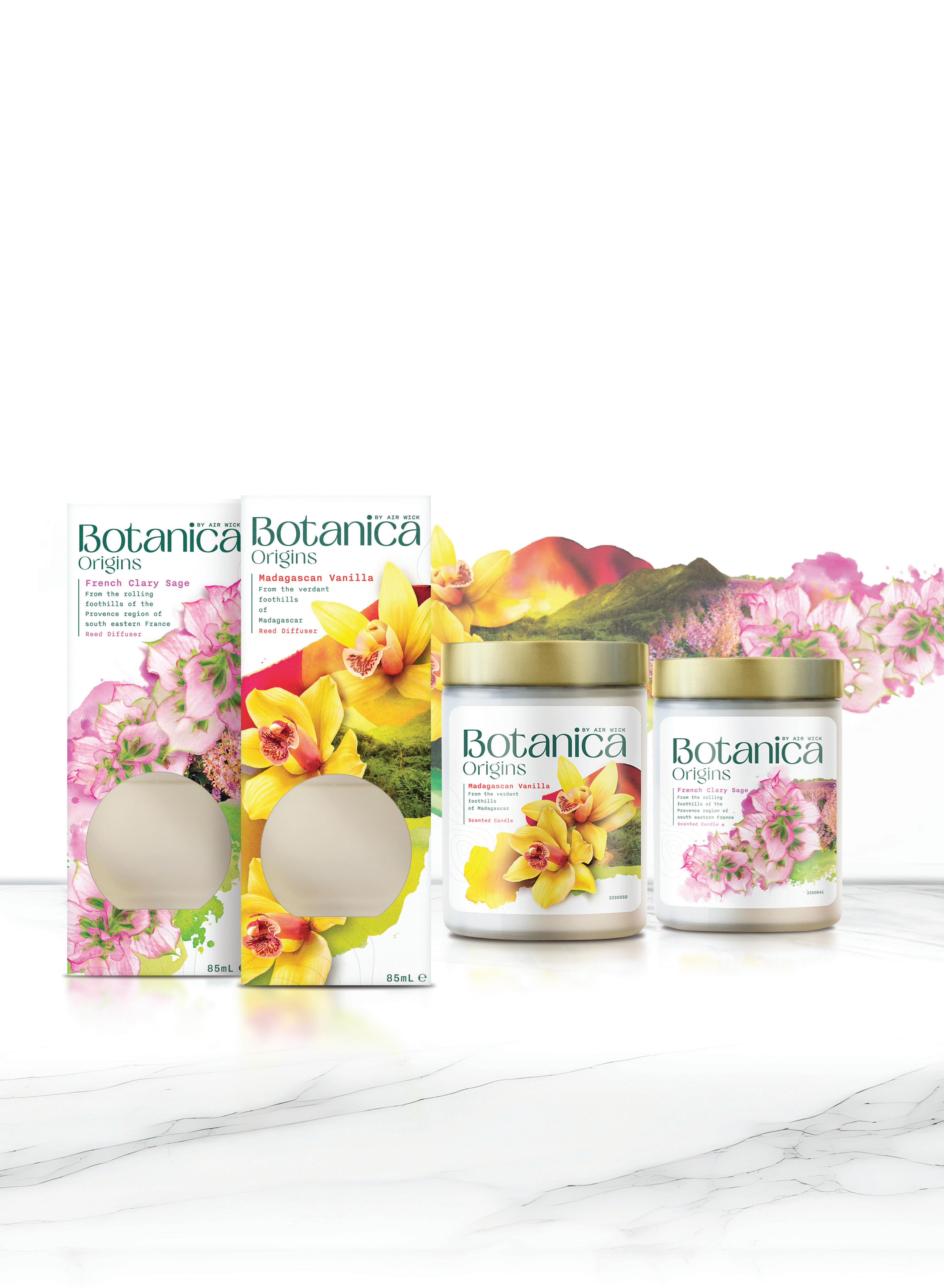
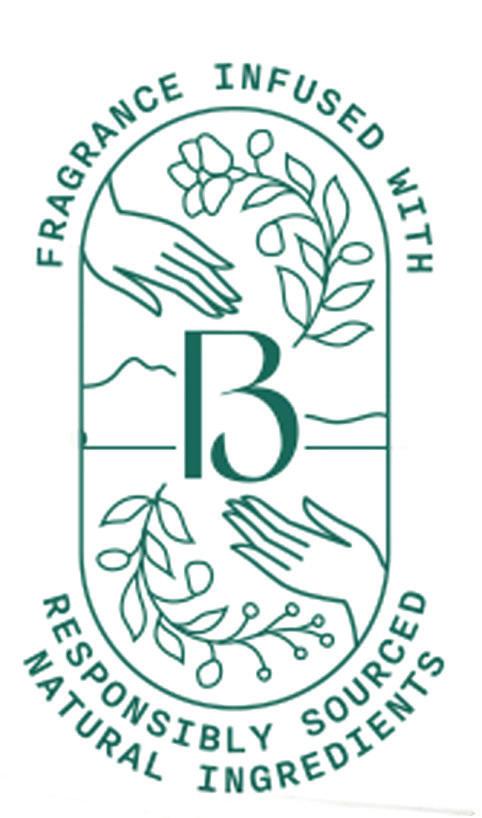
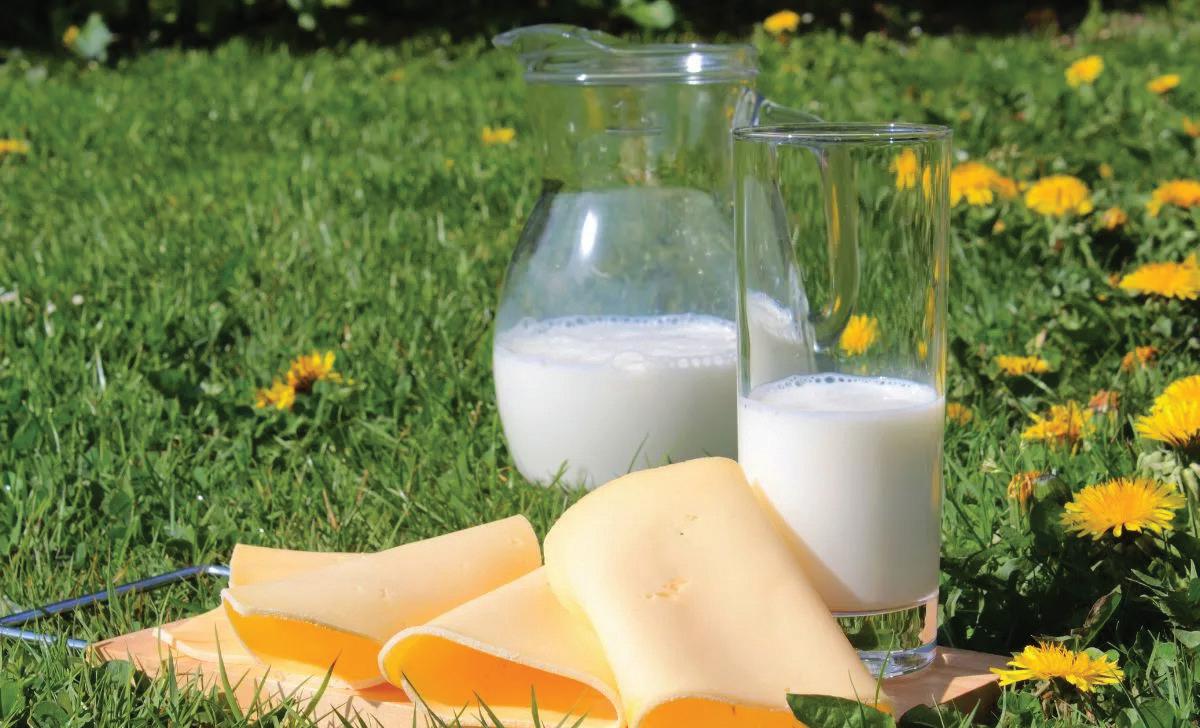
The ACCC will not oppose Lactalis BSA S.A.S. (Lactalis)’s proposed acquisition of Fonterra Co-Operative Group (Fonterra)’s businesses.
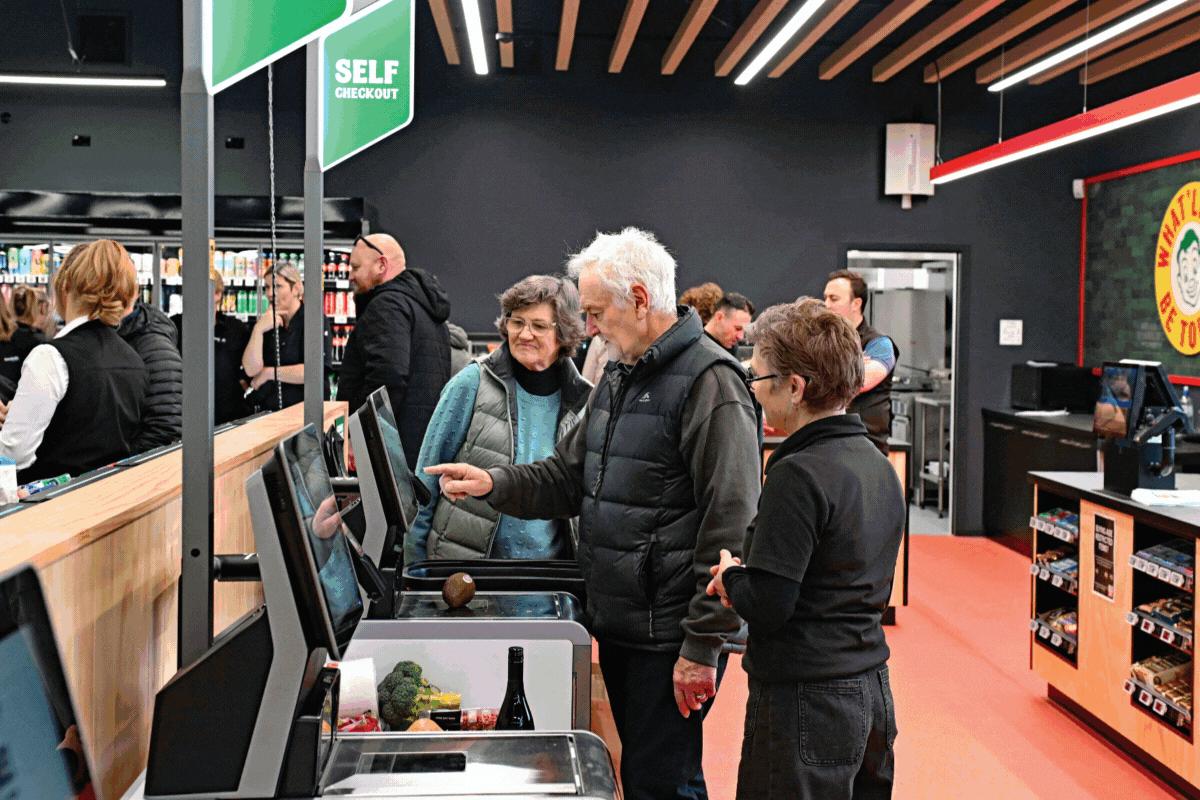
Foodstuffs South Island reaffirmed its commitment to rural communities with the opening of a contemporary new Four Square in Murchison.
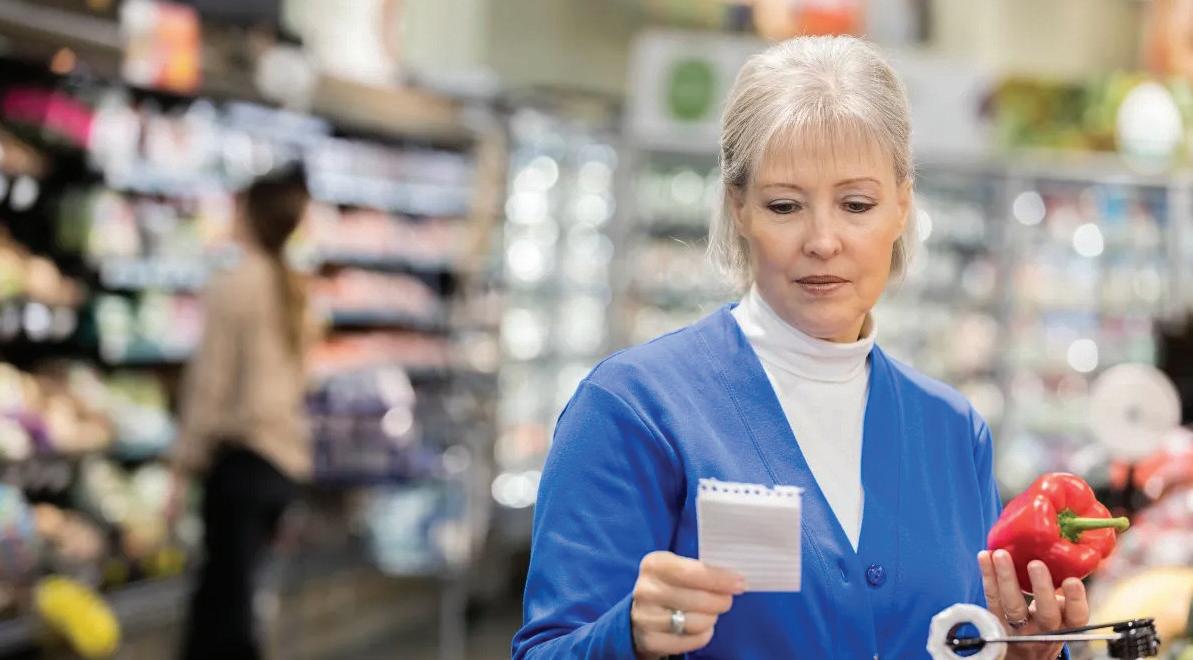
Consumer NZ has launched a new campaign, Price it right, calling on the government to crack down on misleading supermarket pricing practices.
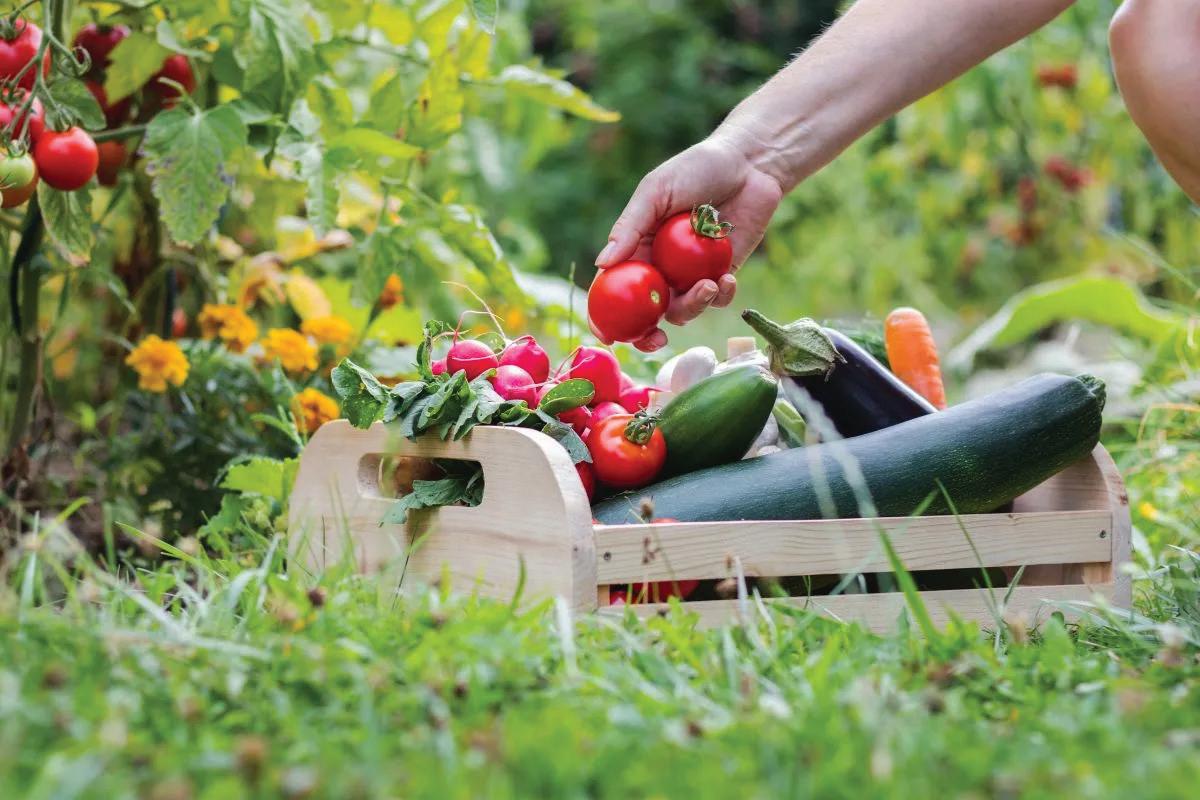
New Zealand’s high ranking as one of the world’s most self-sufficient countries is a huge source of pride for its nation’s fruit and vegetable growers

Organics Aotearoa NZ has warned that a new proposal from FSANZ would allow genetically modified foods created using new gene editing methods to enter the food system without labelling, safety checks, or traceability.

New Zealand and Malaysia have committed to boosting trade in highquality halal meat products.







The Grocery Action Group enthusiastically supported Consumer NZ’s groundbreaking initiative, the “Price it Right” campaign.

Work is underway to make the fire-damaged NW Victoria Park site safe for entry.
A comprehensive guide for the grocery, hospitality, on & off-premise drink buyers.
We turn the spotlight on the sector, looking at emerging brands, functional drinks, the rise of healthier drinks and changes to existing brands as they reformulate or resize.



The NZ-UAE Comprehensive Economic Partnership Agreement (CEPA) legislation has passed into law.

The pace of supplier cost increases to Foodstuffs supermarkets increased slightly last month.

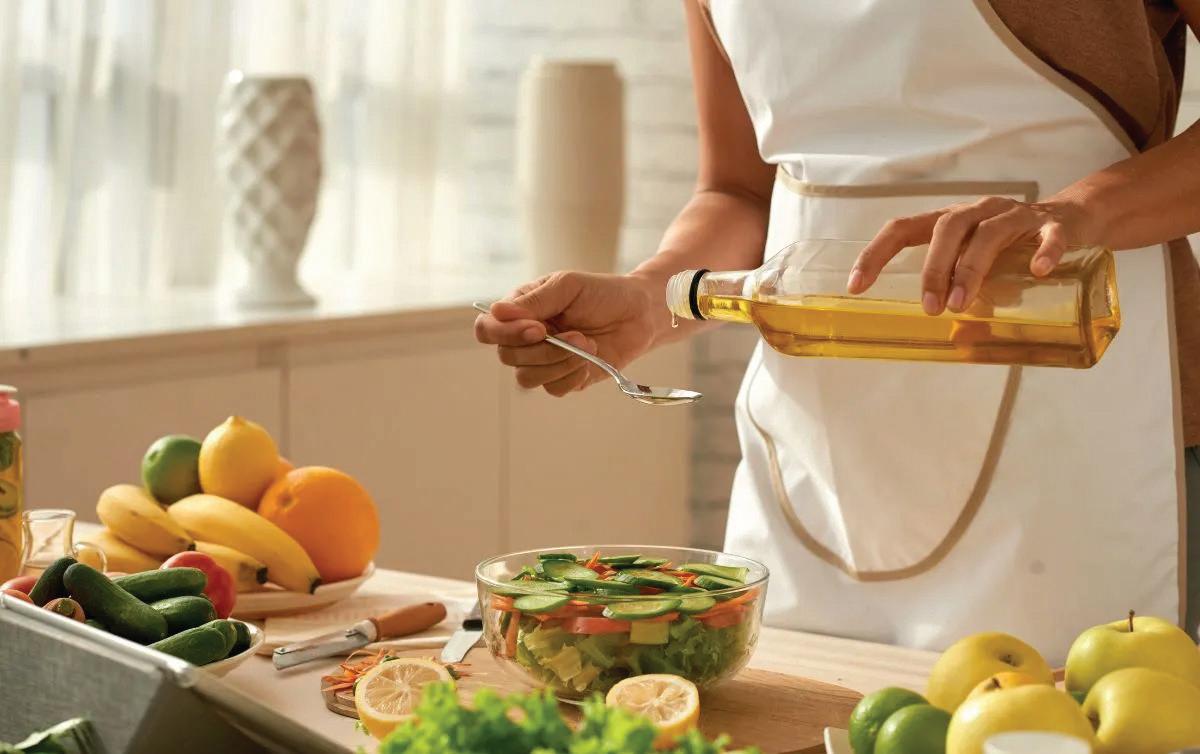
Winter weather has played a part in the latest food price inflation statistics for June, with the product cost of dairy and beef still key contributors, while olive oil prices finally fell.

The Commerce Commission has filed criminal charges in the Auckland District Court against Noel Leeming, alleging multiple breaches of the Fair Trading Act.
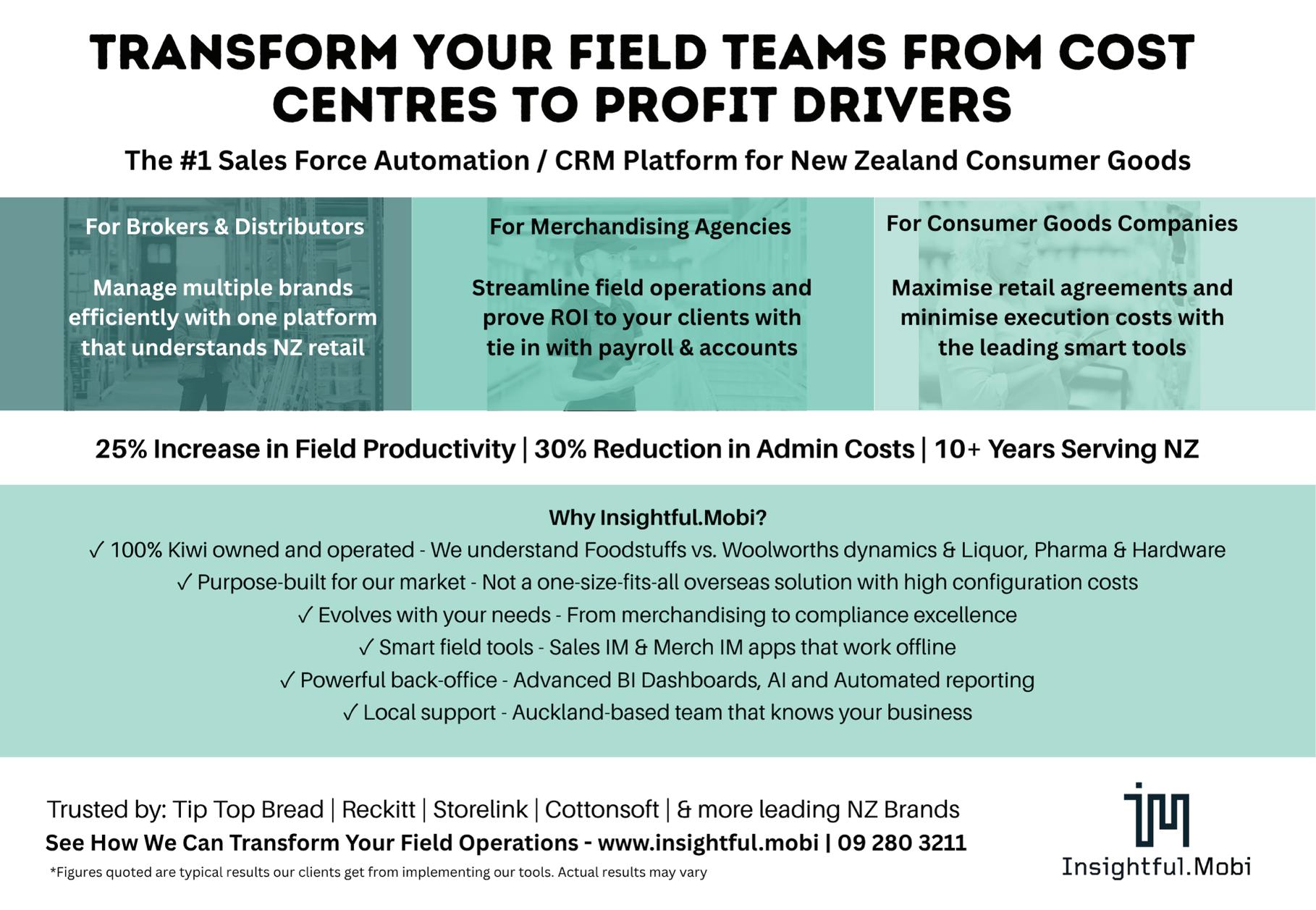

SupermarketNews acknowledges the passing of Richard Reilly, a respected and influential leader in New Zealand’s grocery industry and former senior executive and director within the Foodstuffs cooperative.
Richard’s career spanned decades of transformation across the sector.
After early leadership roles at Bond & Bond and Foodtown, he joined Foodstuffs Auckland in the early 1980s as General Manager Retail Operations. In this role together with his subsequent CEO role with Foodstuffs Wellington he played a major part in reshaping supermarket retail in New Zealand.
In 1983, Richard and Hugh Perrett undertook an in-depth study tour of leading supermarket retailers , principally across the USA and UK . This led to the introduction of the Pak’nSave format to New Zealand, a milestone that helped cement Foodstuffs' position as market leader. Pak’N Save
rapidly emerged as the country’s most competitive and dominant supermarket format , setting new standards in pricefocused retail and driving major industry rationalisation in favour of Foodstuffs.
Shortly after the introduction of Pak’NSave by Foodstuffs Auckland , Richard was appointed CEO of Foodstuffs Wellington, where he led the introduction and development of Pak’N Save in Wellington’s operating area and the consequent introduction and expansion of a new generation of a majorly upgraded New World supermarkets , also resulting from Richard’s and Hugh’s 1983 study tour to the USA and UK . Richard led Foodstuffs Wellington with distinction for
many years, while also making significant contributions at the national level. He was recognised throughout the industry as a shrewd, capable operator with extensive expertise across all aspects of the grocery business. Richard was known for his strategic insight, integrity, and the lasting impact he made on the sector.
Richard passed away peacefully on 26 June 2025. He is survived by his wife, Gillian; their children, Bruce and Janine; and grandchildren, Alex, Belinda, and Amber.
SupermarketNews extends its condolences to the Reilly family and acknowledges Richard’s enduring contribution to New Zealand’s supermarket industry. n




If you’re the owner or GM of a growing business, chances are you’re wearing too many hats. You’re approving invoices, signing off marketing, hiring staff—and still expected to lead strategy. It’s exhausting. But the real problem isn’t workload. It’s delegation.

What’s Really Going On?
I recently caught up with an owner I coach and he was telling me he was very stressed. I asked him what was causing that and he said he had too much on and couldn’t delegate things as his people were ‘too busy’ and he didn’t want to stress them out. I hear this a lot from leaders; making excuses why they don’t delegate, the issue is prioritisation. Without this the result is bottlenecks. Burnout. And ironically, slower growth.
The Fix: Delegate Like a Leader, Not a Martyr Delegation isn’t about dumping tasks. It’s about developing capability and freeing yourself to lead. If as the leader you are not freeing yourself to spend time on the future, you are missing growth opportunities.
Here’s how to do it well:
• Start with a task audit
List everything you do in a week. Circle anything that someone else *could* do with a bit of training or context. That’s your delegation shortlist.
• Match task to skill (not job title) Don’t delegate based on who’s available— delegate based on capability and stretch. Can they grow into it? Can they own the
result? If you have good people that are ‘busy’, help them to prioritise and reduce their workload on low priority areas.
• Use the “clear brief” checklist Before you delegate, ask:
- What’s the desired outcome?
- What’s the deadline?
- What are the success criteria?
- What freedom do they have to decide how?
• Support, don’t smother Be available for questions, but don’t hover. Set check-in points. Resist the urge to take over if it’s not perfect.
Key Takeaways
• If everything depends on you, your business can’t grow.
• Delegation is a leadership skill—not a luxury.
• Clarity, support, and trust are the foundations.
• Start small, and build the muscle. Your future self will thank you.
If you need support in coaching or are interested in joining a group that will challenge and grow your leadership, give me a call.
Gerry Lynch - Vistage Chair | Leadership Coach | CEO Advisor
Gerry@realleadershipnz.co.nz 021-895044

Gerry Lynch Managing Director
The Real Leadership Company




ntroducing delicious 100% plant-based caramels & chews, dairy-free and delicious


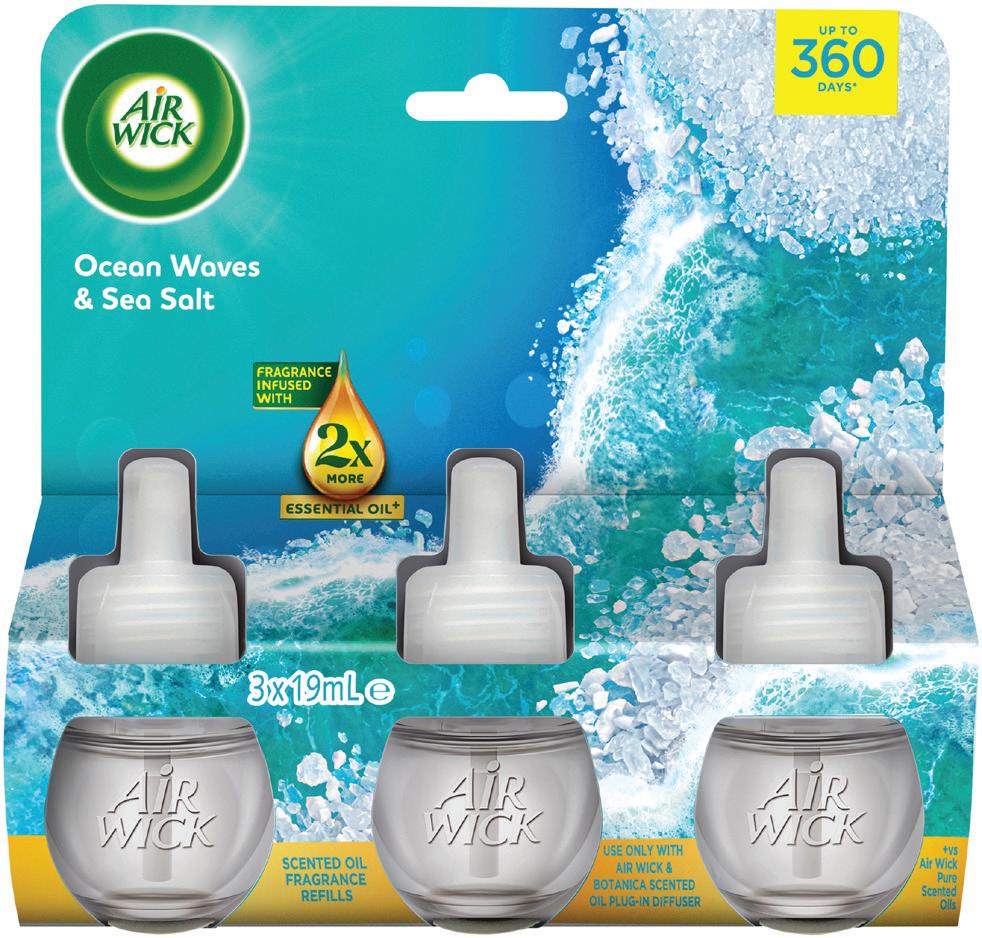

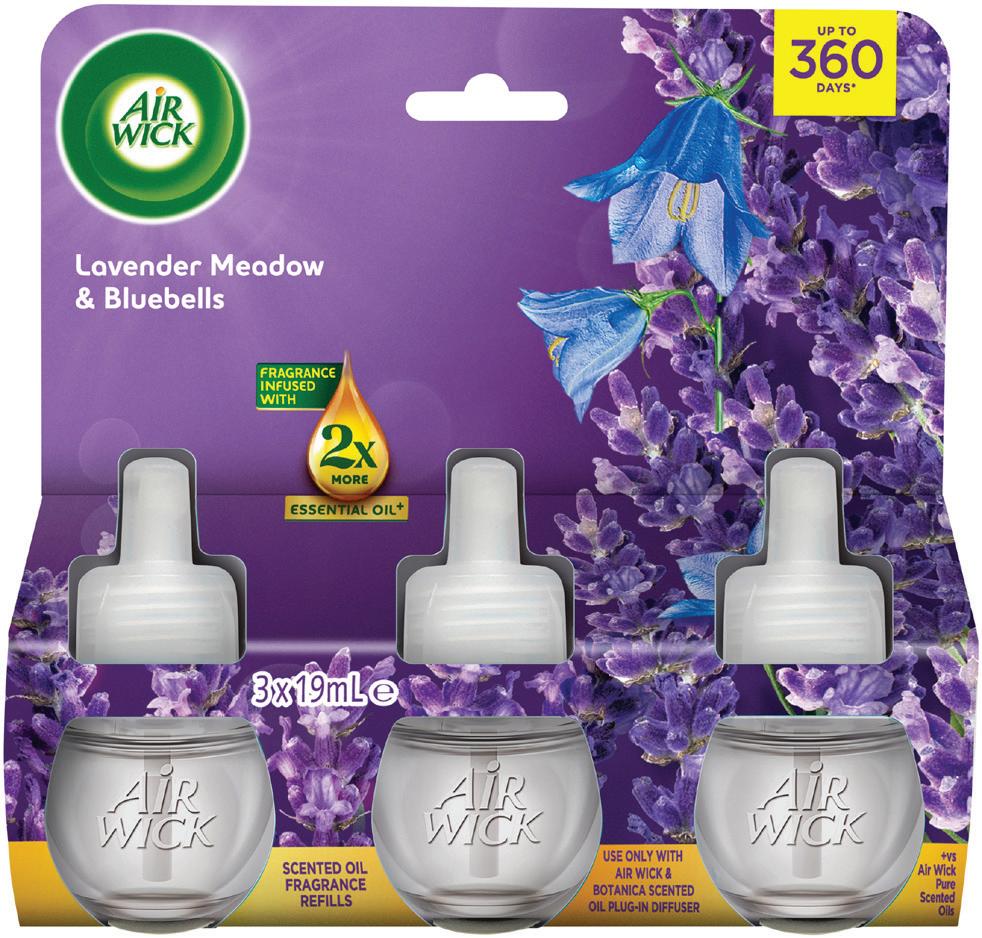
For years, Air Wick has been a familiar presence in homes across Aotearoa through its products, initiatives and brand efforts. In 2025, that connection deepens with the launch of an exciting new offering: the new Air Wick Essential Oils range – a reformulated collection infused with 2x more essential oils+








Fdeveloped to deliver an incredible scent experience, with 2x more essential oils+ and a focus on fragrance profiles that support mood and wellbeing.”

ragrance appeal is widely recognised as a key influence in purchase decisions. Research shows that a single winning fragrance can satisfy up to 45% of shoppers*, and expanding the offering across fragrance families increases conversion potential. With a curated yet diverse portfolio, the reformulated lineup is positioned to deliver strong scent performance and broaden shopper appeal.
This launch builds on Air Wick’s legacy of quality and fragrance expertise, delivering a thoughtfully crafted sensory experience for modern homes.
“Fragrance has always played a powerful role in how we feel at home,” says Vaishali Banda, Brand & Trade Strategy Manager, Aircare at Reckitt NZ. “This new range was
Building on Air Wick’s trusted scent performance, the new formulations are designed to deliver balanced aromas. Each profile is created to complement different moods – whether the desired atmosphere is calm, energised, grounded, or uplifted.
The new collection brings a fresh take to the home fragrance aisle, combining reformulated scents with a versatile line-up of aerosol-free Auto Sprays, Plug-Ins, Diffusers, and Refills to suit every style and space.
At the heart of the range are four hero scents, carefully selected for their broad appeal:
+vs Air Wick Pure Scented Oils, vs Air Wick Active Fresh
*Toluna TURF study; N=1004

• Vanilla & Sweet Almond, available in Auto Spray and Plug-in
• Ocean Waves & Sea Salt, available in Plug-in
• White Linen & Orchid, available in Auto Spray and Plug-in
• Lavender Meadow & Bluebells, available in Plug-in
Whether customers are looking to create an environment that energises, unwinds or simply feels fresh and inviting, the Air Wick Essential Oils collection is designed to make it easy to find the perfect fit.
For retailers, it represents a thoughtful evolution from a trusted brand – one that continues to meet changing consumer expectations while staying true to its roots.






Somerset Farms
Whittaker's
Whittaker’s has launched its new limited-edition Banana Caramel 250g block.
Whittaker's Banana Caramel features a rich and velvety smooth banana-infused caramel filling encased in Whittaker’s 33 percent cocoa 5 Roll Refined Creamy Milk chocolate.
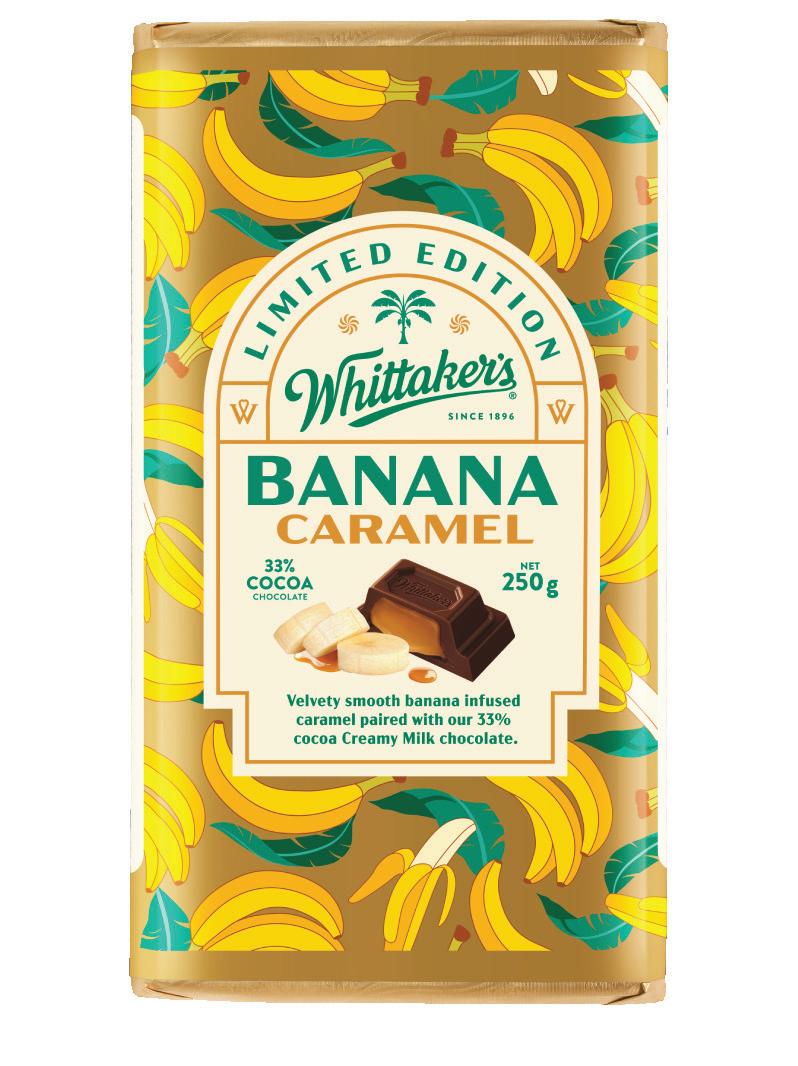
We’ve developed the Family Favourites range to meet the demands of the current economic climate in New Zealand.
Our goal is to provide everyone with high-quality, convenient, fresh vegetables that fit into today’s budget.
As grocery bills have risen, many people have returned to basics, and so have we. These products are our 'bread and butter.'
We know them inside and out, ensuring they’re
produced efficiently and sustainably. This enables us to keep costs low throughout the supply chain, delivering the best value to our customers. They’re also incredibly convenient, washed, prepped, and ready to go, saving you time in the kitchen so you can get on with what matters.
The Somerset Farms Family Favourites range is available at Woolworths NZ nationwide.
For more information, visit www.somersetfarms.co.nz
Potter Brothers
Potter Brothers has launched a bold new take on an iconic Kiwi treat with the debut of its Kiwi Chocolate Fush range, four nostalgic marshmallow fish coated in real chocolate and bursting with uniquely New Zealand flavour.
The full 35g range includes:
• Dark Peppermint – smooth dark chocolate with refreshing peppermint
• Original Raspberry – classic raspberry marshmallow in milk chocolate
• Pineapple – zingy tropical twist with our pineapple flavour
• Havana Espresso – made in
collaboration with Havana Coffee Works
Ben Potter, co-founder of Potter Brothers, said the new range is a fun and flavourforward innovation grounded in Kiwi tradition.
“We wanted to create a treat that’s playful and nostalgic, but with bold flavours and proper chocolate. Our espresso flavour with Havana is a real standout, and the peppermint in dark chocolate has already proven to be a hit.”
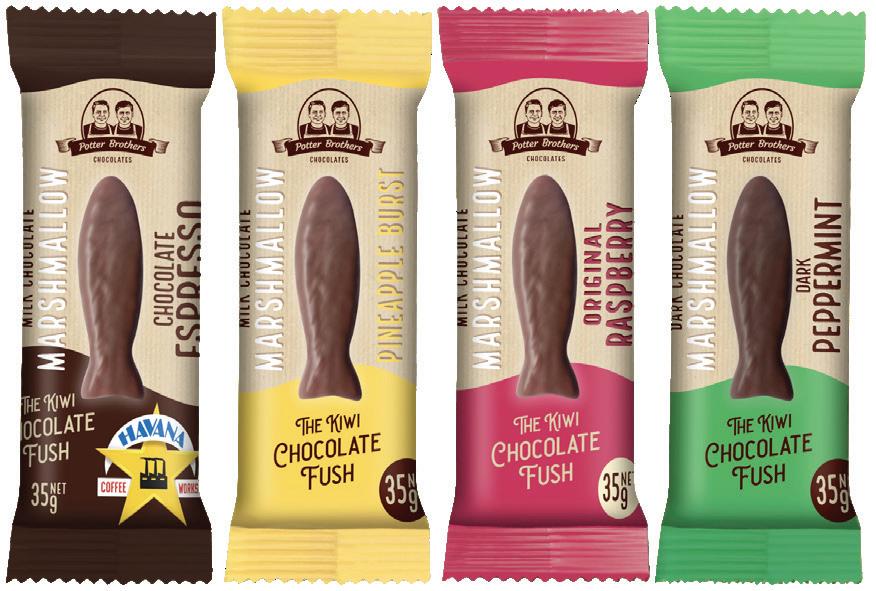
Chocolate Fush is crafted with real chocolate, fluffy marshmallow, and no palm oil. The 35g bars are rolling out to stores now.
Made in small batches at the Potter Brothers factory in Levin, each
For more information, visit https://potterbrothers.co.nz/
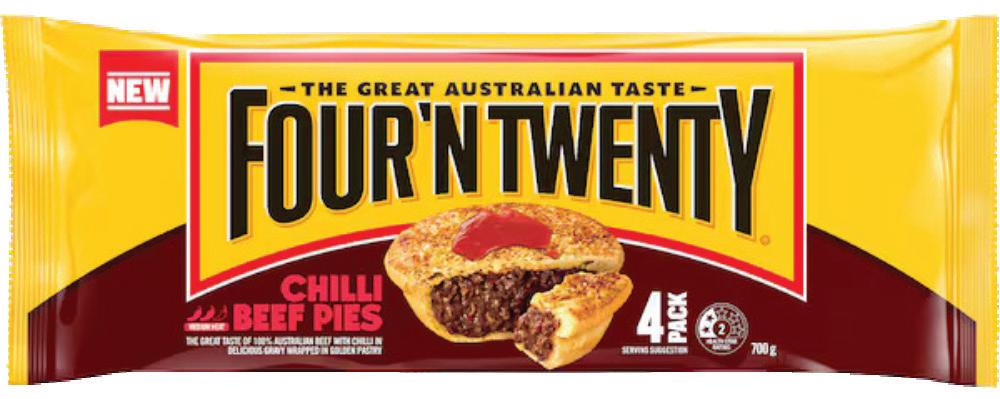
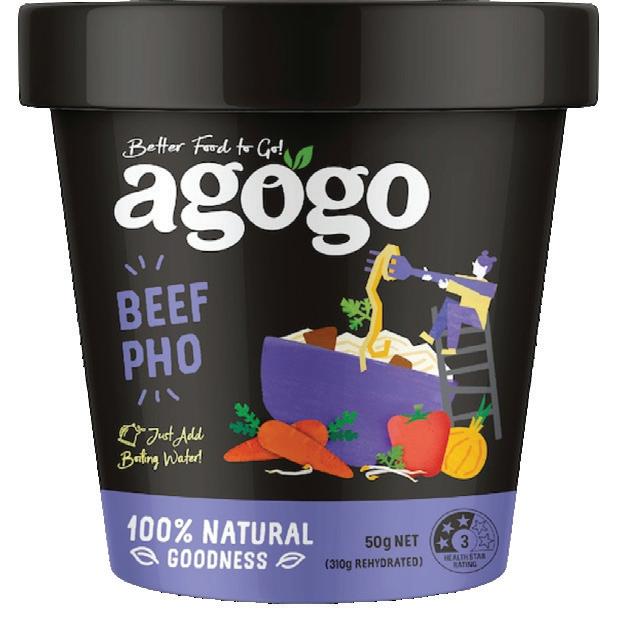
BEEF PHO
Agogo
Proudly Australian-made and owned, plentiful with rice noodles, Australian beef, carrot, capsicum and bean sprouts, simply add boiling water, and you're good to go.
Agogo Beef Pho is gluten-free and 100 percent natural with no nasties like MSG or artificial flavours.
Strength Meals Co
Looking to fuel your active life?
Get high-protein, macro-balanced meals formulated with the help of nutritionists for everyday strength.
Strength Meals Co. High
Protein Beef Cottage Pie is a homestyle cottage pie made with Australian beef and vegetables and topped with a creamy potato mash, ready in seven minutes.

Four'N Twenty
The great taste of 100 percent Australian Beef with chilli in delicious gravy wrapped in golden pastry.

Mr Chen's
Family has been at the heart of everything at Mr Chen’s since the business was formed over 40 years ago. Inspired by this Chinese classic, Mr Chen’s crispy Prawn Wontons are the perfect blend of crunchy wrapper and juicy, bouncy prawns. Find them in the freezer aisle at Woolworths.





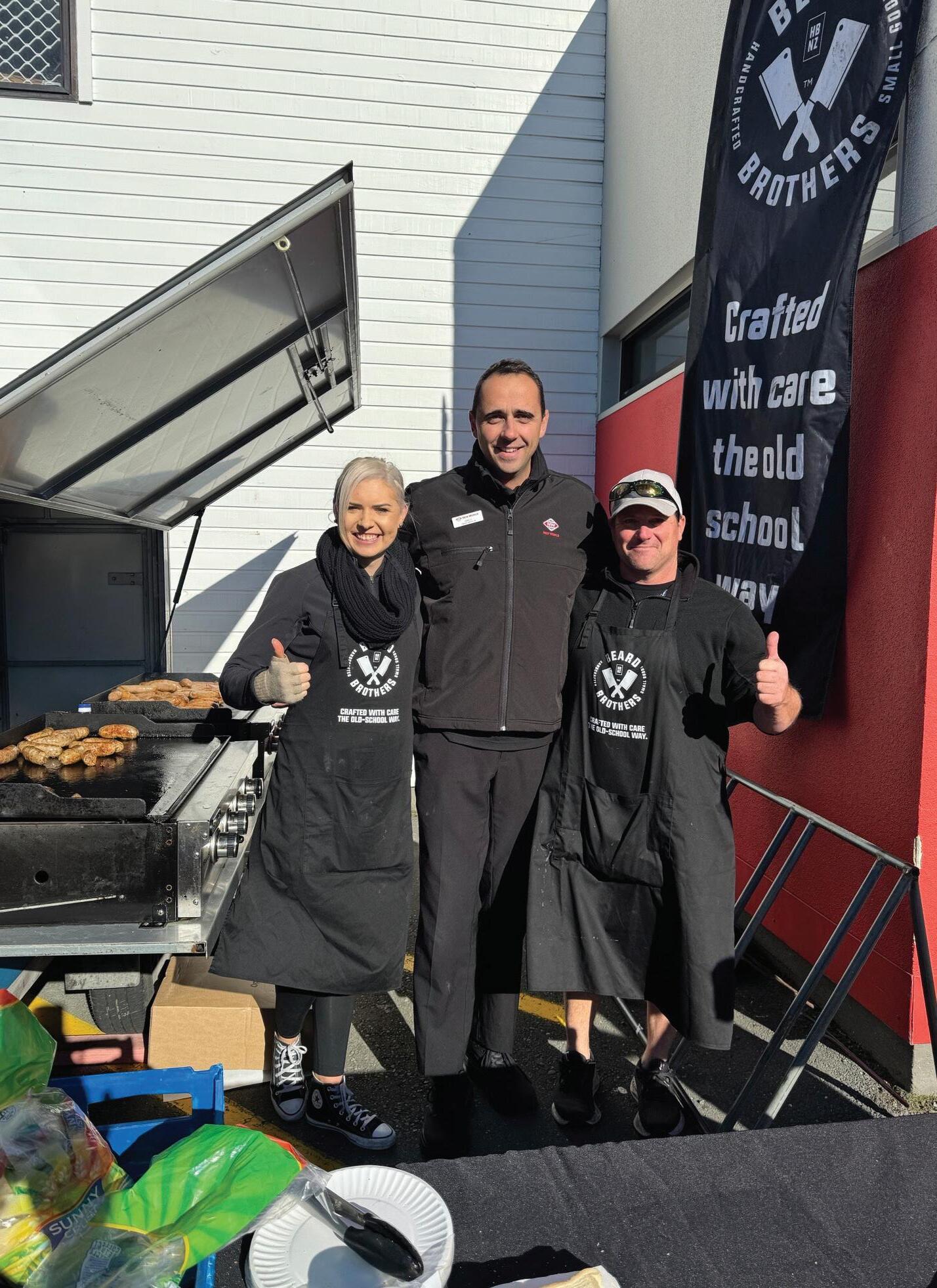
With tourism rebounding and shopping behaviours shifting back to pre-pandemic norms, Samuel Fletcher, newly appointed Owner/ Operator of New World Ohakune, has planned to steer the store into a new chapter, one that balances local loyalty with visitor appeal.
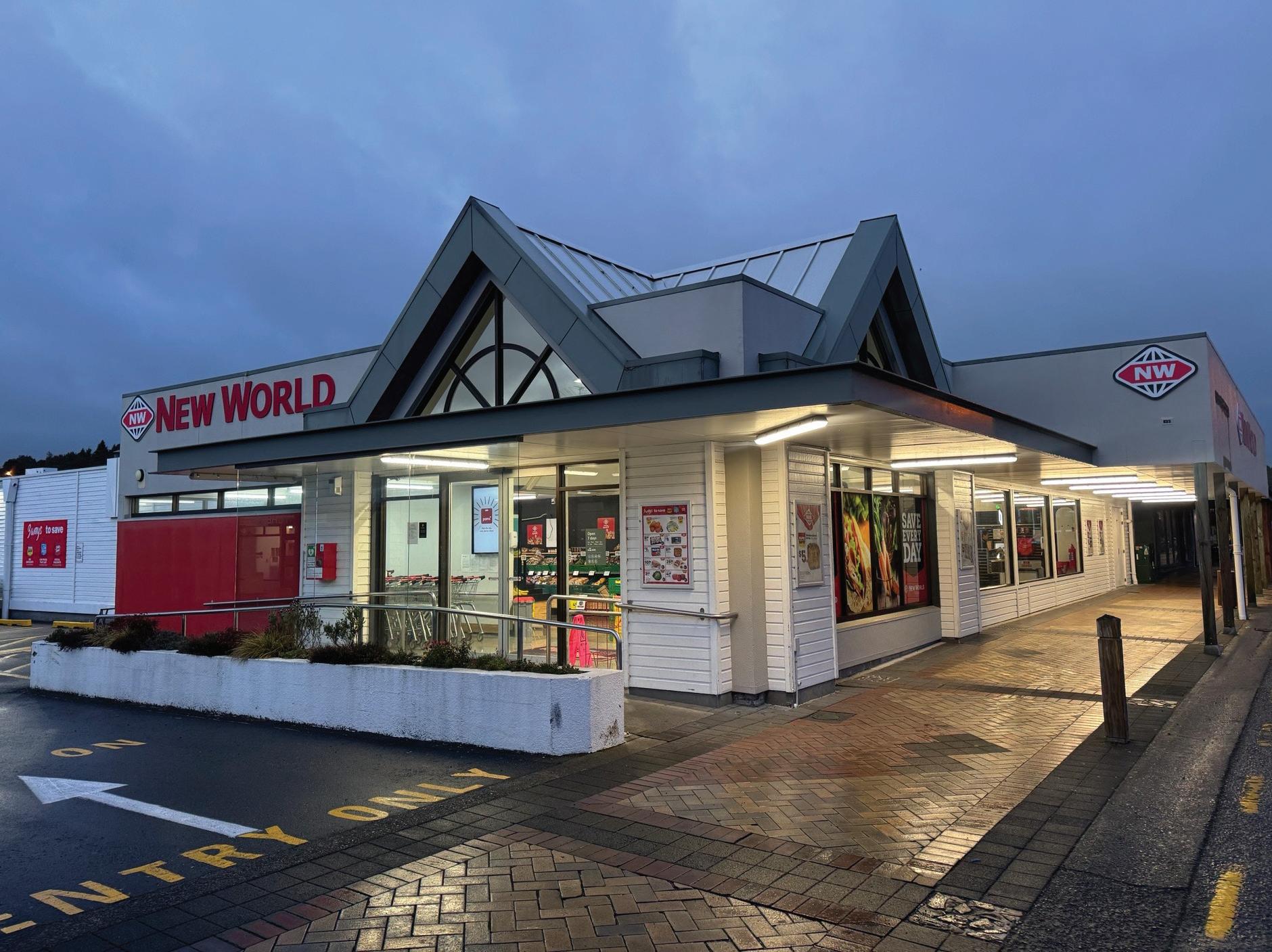
“We’re seeing customers shopping more often but spending a bit less per visit,” said Fletcher.
In response, the team has been reviewing their grab-and-go offering, examining ways to enhance it to better cater to meal inspiration and convenience.
“It’s about rethinking what we can do to give customers those quick, easy ideas for meals or occasions.”
As a holiday destination with an increasingly diverse customer base, Fletcher’s long-term vision centres on fine-tuning the store’s layout to reflect the broad mix of people coming through the doors each week.
“We’re aiming to get the right products in front of the right people - locals and tourists alike,” he said.
Recent updates in-store have already made a visual and practical impact. New chillers in the liquor and butchery departments have enhanced the customer experience, allowing the store’s offerings to be showcased more effectively. The store’s concrete floors have also been ground and polished, a detail that hasn’t gone unnoticed.
“We’ve had highly positive feedback from customers.”
A firm believer in supporting the community, Fletcher is already forming relationships with local producers and suppliers. He highlighted ongoing support for Austin at Ruapehu Brewing, whose craft beer range is stocked in-store. He shared plans to visit Ohakune produce growers to explore direct-to-store supply opportunities.
“Keeping it local is important to us, and
As a holiday destination with an increasingly diverse customer base, Fletcher’s long-term vision centres on fine-tuning the store’s layout to reflect the broad mix of people coming through the doors each week.
it’s something we’ll continue to build on.”
While he has just taken over the store, Fletcher is committed to maintaining the long-standing support that New World Ohakune has given to local community groups and initiatives.
“We’ll be continuing that support, it’s part of the store’s DNA.”
At the heart of it all is the team. Fletcher would like to thank Rama and Jenna Unka for their hard work in the store and for making the transition to new operators a seamless process.
“We’ve got a tight-knit crew here who are connected with the community.
That connection, along with a renewed focus on fresh ideas and local collaboration, is what makes New World Ohakune a standout on the Central Plateau. n




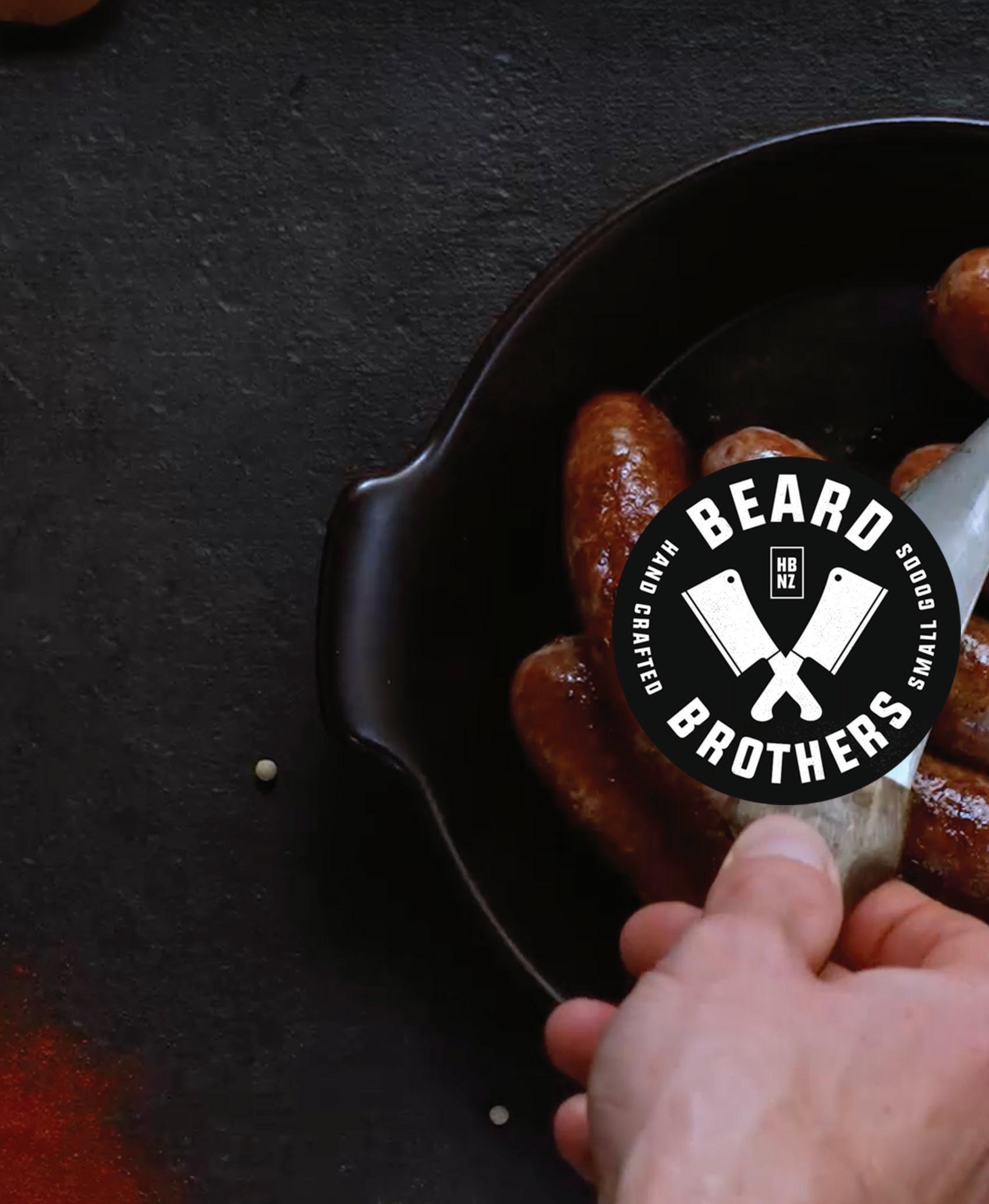
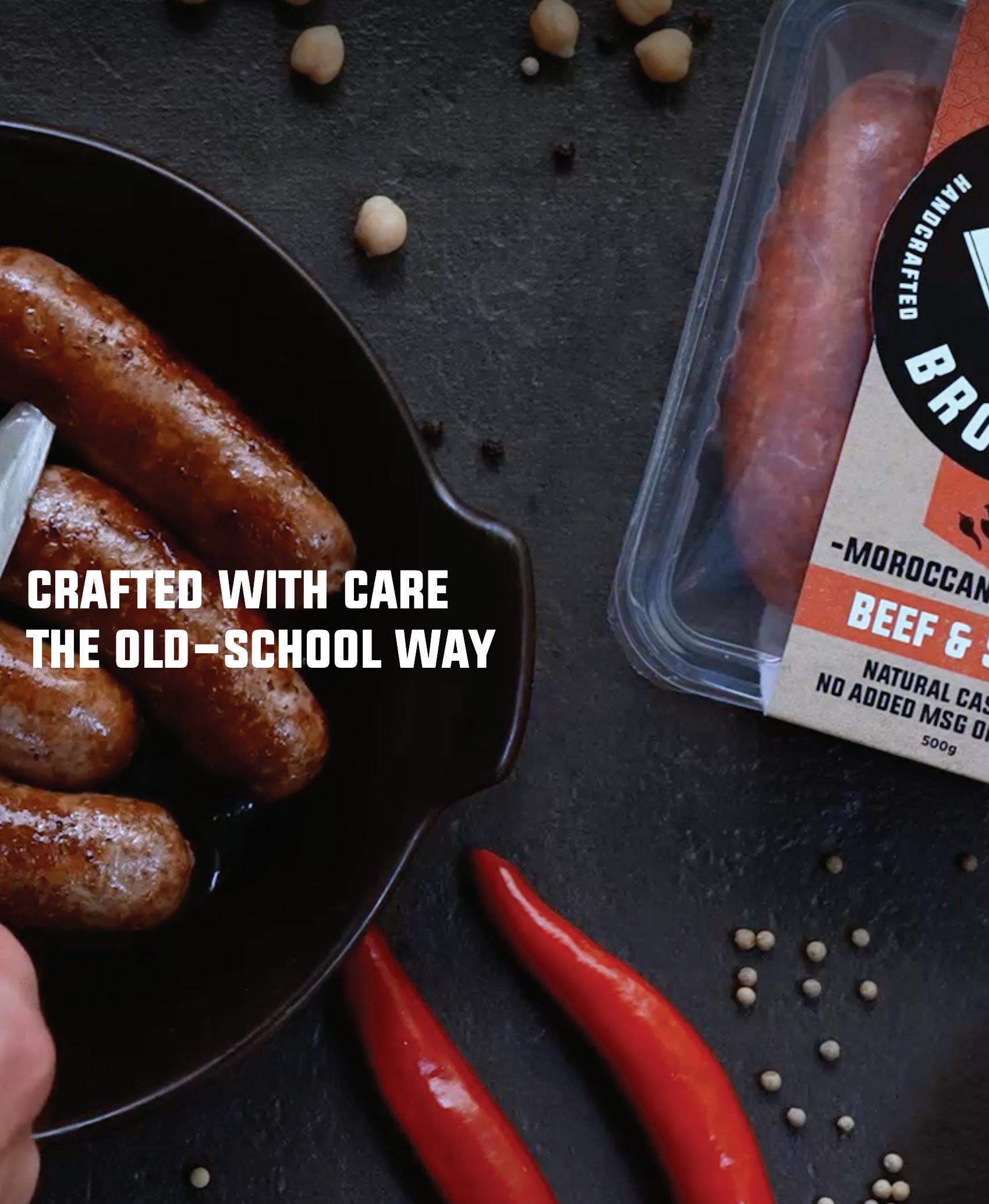
beardbrothers.co.nz
@beardbrothersnz
The days of negotiating deals with individual store buyers are largely behind us.
With Foodstuffs' move to centralised purchasing and similar shifts across New Zealand retail, the role of field sales has undergone a fundamental transformation.
Today's challenge? Ensuring perfect execution of centrally negotiated agreements while identifying opportunities to maximise your brand's presence on the shop floor. At Insightful.Mobi, we've evolved alongside this changing landscape. As a New Zealand-owned company based in Auckland, we've been operating for over 10 years, growing with our customers through every market shift. Unlike CRM vendors from the US or Europe, who often offer rigid, one-size-fits-all solutions, we've been able to pivot quickly with our clients as
the New Zealand retail environment has undergone transformation.
A Decade of Evolution with Our Customers
"Being local isn't just about geography – it's about truly understanding and responding to market changes," our team explains. "When centralised buying began reshaping retail relationships, we didn't just update our software. We reimagined it based on what our customers actually needed."
This responsiveness has built long-term partnerships. Tip Top Bread has relied on
our platform to navigate changing retail dynamics, while Wayne Miller at RB Health NZ notes: "Insightful.Mobi helped us transform our team from order-takers into execution specialists who ensure every store delivers on our centrally negotiated plans." Our platform's evolution reflects the real needs of our customers. Whether you've signed to use Foodstuffs terms or maintain independent agreements, our Sales IM and Merch IM mobile tools help you maximise those agreements while minimising execution costs through intelligent field and back-office management.

Built for New Zealand,
By New Zealanders
Over our decade-plus journey, we've seen international CRM providers struggle to adapt to New Zealand's unique market dynamics. They don't understand why Pak'nSave stores operate differently from New World, or why DunnHumby data integration is crucial for ranging decisions rather than just market analysis.
We do. Our smart tools streamline both field operations and back-office processes with features developed specifically for our market:
Field capabilities include:
• Verify promotional pricing and capture issues with geo-tagged photos
• Document planogram compliance using formats that match New Zealand retail standards
• Track display compliance against locally negotiated agreements
• Task and Survey Management
• Monitor ranging compliance using DunnHumby data
• Capture opportunities for additional product placement in stores that allow flexibility
Back-office efficiency through:
• Automated reporting that aligns with New Zealand retailer requirements
• Real-time visibility tailored to local management structures
• Integrated promotional calendar management for New Zealand retail cycles
• Streamlined claim processing that understands local trading terms
• Automated timesheet and mileage claim tracking that can work with most payrolls

Growing with Customer Needs
The real power of being local shows in how we've evolved. When DunnHumby became available, we didn't just add it as another data feed – we integrated it deeply to show field teams exactly which products should be ranged in each specific store. When promotional complexity increased, we built Dynamic In-Store Promotion Management specifically for how New Zealand retailers operate.
A leading beverage client recently shared: "International CRM providers kept trying to force us into their global templates. Insightful.Mobi actually listened and built features that work for New Zealand retail. The result? We cut execution costs by 30 percent while improving compliance."
Our decade of operation has built an unmatched understanding of the New Zealand market. We've grown alongside our customers through:
• The rise of category management
• The shift to centralised buying
• The evolution of data-driven ranging
• The transformation of field roles from selling to execution
This isn't just software development – it's a partnership. When retail dynamics shift, we pivot with our customers. When new data sources become available, we integrate them meaningfully. When field roles evolve, our tools evolve too.
Our local focus delivers tangible benefits:
• 25 percent increase in field team productivity
• 30 percent reduction in administrative costs
• Seamless integration with New Zealandspecific data sources
• Tools that match how New Zealand retailers actually operate
• Support that understands local market dynamics
After more than 10 years of growing with New Zealand's FMCG companies, we understand what works here. Whether you need better compliance tracking, smarter field tools, or systems that actually understand New Zealand retail, we're here to help you maximise your agreements while minimising costs.
Contact Insightful.Mobi today to discover why New Zealand's leading FMCG companies choose a local partner who truly understands their market.
Contact us at sales@insightful.mobi or visit insightful.mobi





During a retail leadership event I attended, Greg Foran, former President and CEO of Walmart U.S. and now CEO of Air New Zealand, was asked what problem brands should solve for retailers. His answer? Out-of-Stocks (OOS).
In New Zealand, OOS events occur in 8.5 percent of grocery store visits. When shelves are empty, customers substitute around 3.5 percent of the time, often switching to different brands or leaving without purchasing at all. This results in an annual loss of NZD 1.38 billion for stores and NZD 690 million for brands, even in stores that are merchandised.
So what's causing the issue? In most cases, it’s not a supply shortage. A staggering 70 to 75 percent of OOS events are caused by human error: poor forecasting, stock count inaccuracies, and slow replenishment. The remaining issues lie with suppliers.
At Inztore, we’re tackling the OOS challenge head-on with daily in-store scans that identify stock and distribution gaps. This real-time data fuels the actions of our 40+ national merchandising team and online sales team, who are focused on resolving issues fast, not just reporting them. This approach flips the traditional agency model on its head. We use smart data, not guesswork, to shape behaviour and strategy across our merchandising, sampling, and sales services.
• Identify low-stock or no-stock real fast
• Then resolve it as fast as humanly possible
By integrating smart tech and dynamic merchandising, our goal is to reduce response times from days to minutes, cutting replenishment inefficiencies and protecting sales.
And the same approach applies to our sales service:
• Spot NPD (new product development) and shelf space opportunities
• Offer expanded distribution and targeted promotional support
Let’s face it: the old sales call cycle, with the hope of catching the right buyer, is outdated. It's costly, time-consuming, and often delivers little in return.
That’s why Inztore is designed for small to medium brands that want visibility and results. Our bespoke software now includes AI, allowing us to surface critical insights from the massive volume of data gathered in-store, photos, notes, and digital logs, ensuring nothing is missed.
We’ve built a time- and data-driven model that helps brands:
• Detect and fix low-stock or no-stock issues
• Identify distribution opportunities across NZ
• Act with confidence using our:
- National field merchandising team
- Online sales reps ready to jump on opportunities
- In-store support when and where it’s needed
- Transparent reports that show what’s happening and what’s being done about it.
The result?
Lower operating costs. Smarter workflows. Real growth.
Founded in 2014, Inztore began as a digital-first sampling, sales, and merchandising platform. Today, our mission remains the same: to deliver a service that is Visible, Flexible, Affordable, and Local, values that matter now more than ever in a world that’s changing faster than the shelves can be restocked.


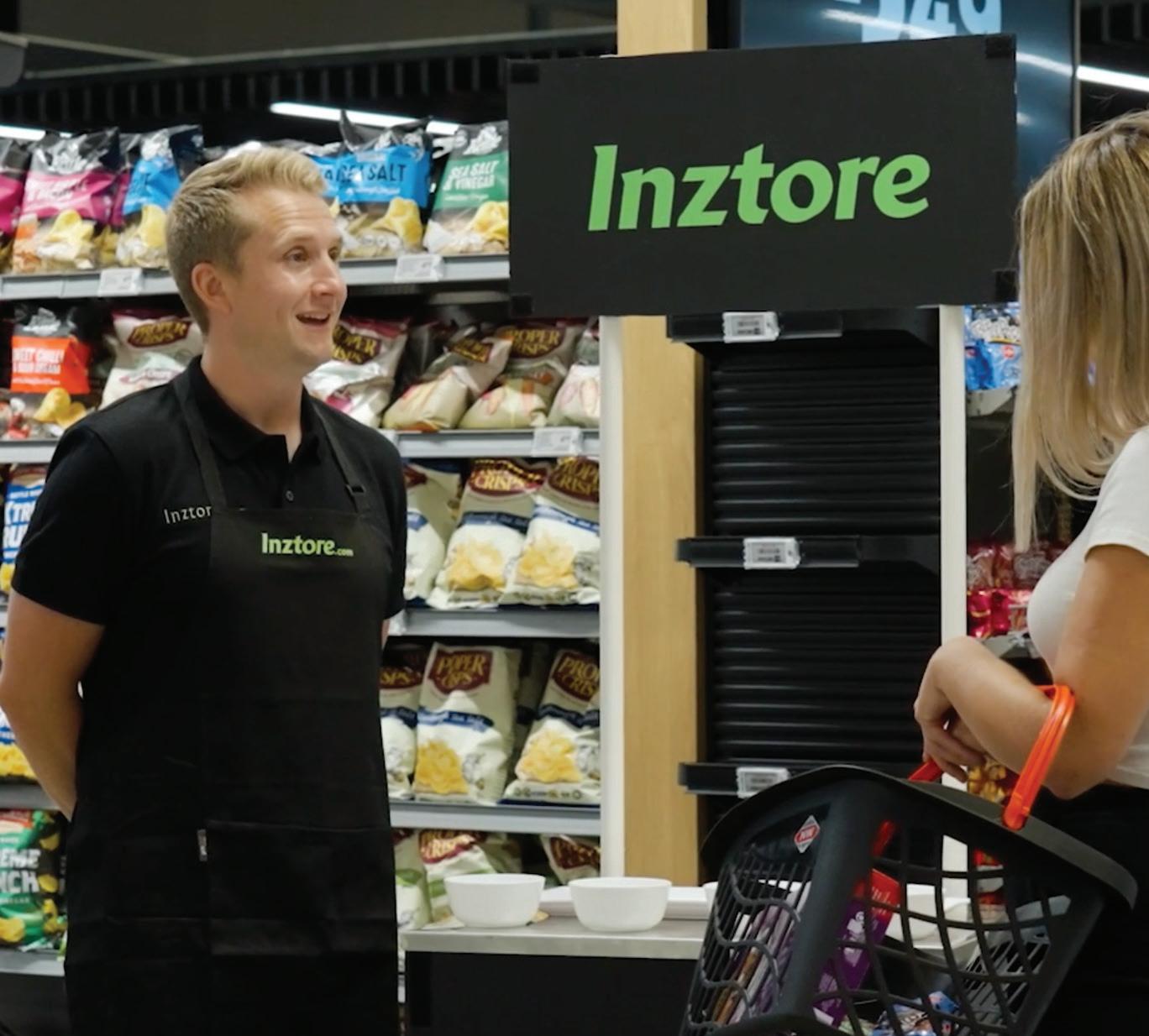
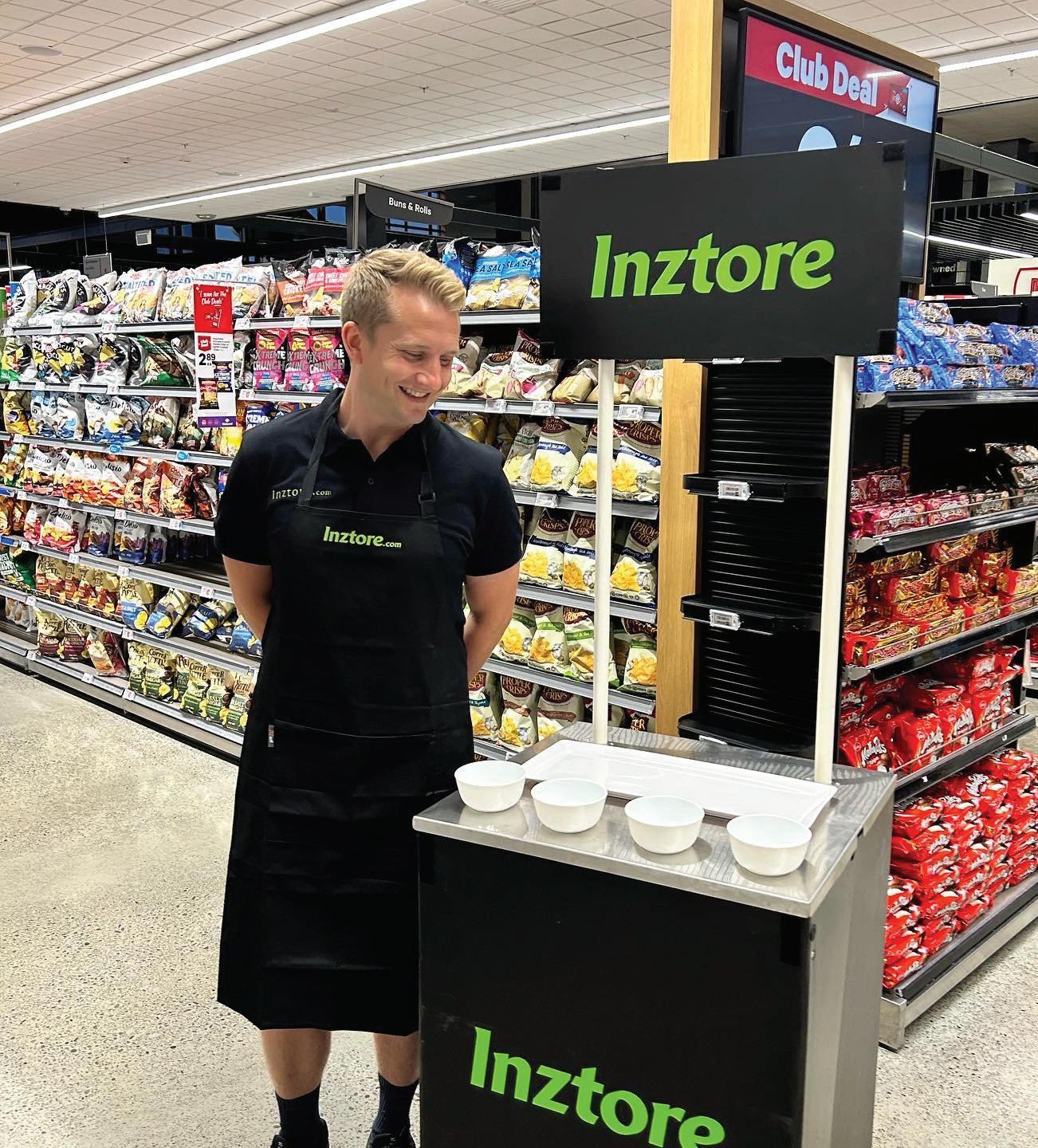
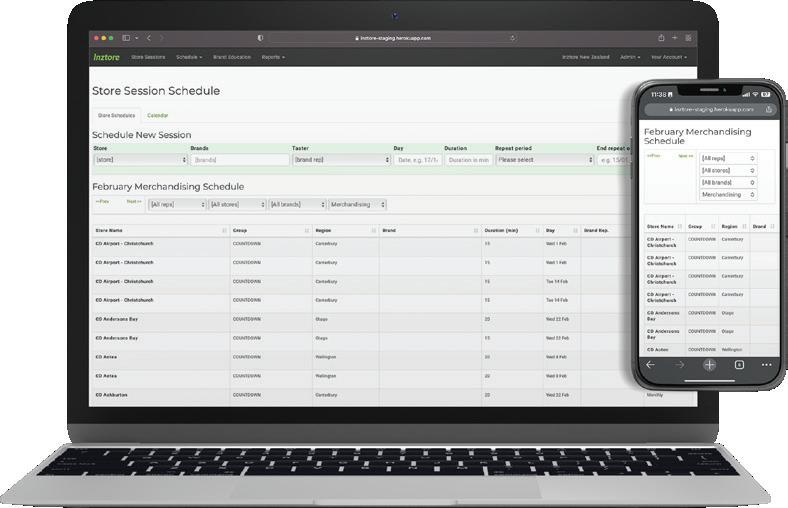


For New Zealand’s Modern Grocery Landscape

Country’s first fully integrated retail activation agency launches in-house sales team with Reckitt Essential Home Business as foundation client.
Kiwi agency, HOOP, is expanding its offering to include a nationwide sales solution for grocery and retail. HOOP is the country’s first fully in-house integrated retail activation agency, purpose-built for the realities of modern supermarket and retail trading.
Launching on the 1st of August, the agency goes live with global health and hygiene giant Reckitt Essential Home Business, the company behind Mortein and Airwick, as its foundation client.
HOOP is shaking up the traditional sales agency model with a boutique approach, offering a dedicated nationwide sales force for a limited number of carefully chosen clients.
Tailored to today’s grocery and FMCG market, the HOOP sales agency completes the company’s end-to-end retail solution, spanning outsourced sales, co-packing, logistics, POS, and in-store merchandising.
“We’re going full circle. Our clients already trust us with co-packing, logistics, and in-store merchandising - now we’re closing the loop with a sales force built for today’s data-led supermarket environment,” said Director Gavin Nixon.
“There’s a real need for this kind of focused, modern solution, especially for
suppliers moving from in-house teams or looking for more boutique agency support."
A smarter sales model for a changing landscape
New Zealand’s supermarket landscape has undergone a fundamental shift in recent years, with retailers adopting advanced analytics tools, like the Dunnhumby data platform, to drive insight-led decisions. Under new supermarket commercial models, that shift has reshaped what’s required of sales teams.
HOOP Sales Agency is built specifically for this environment. It introduces an influence-based sales model, powered by data and delivered by a national team of Territory Sales Managers trained in modern sales strategy and equipped with real-time performance tools.
“We’ve handpicked a team that’s fluent in today’s data-first environment. They’re commercial partners who know how to use data to build a business case and influence decisions at the right level.”
For multinational brands facing the complexity of managing sales teams in a small, competitive market, HOOP offers a smart alternative. The agency will work with a deliberately limited portfolio of noncompeting brands, ensuring a high level of strategic focus given to each client. Backed by a 350-strong operations workforce and 30 years in business, the agency is positioned to deliver value from day one.
Reckitt Essential Home Business signs on as foundational client
Reckitt Essential Home Business is the first client to sign on with the new agency,
with HOOP representing its portfolio across Foodstuffs stores nationwide.
“We’re excited to be the foundation client for HOOP sales agency. HOOP’s data-first, integrated approach gives us agility and the confidence that our in-store presence is aligned with today’s retail reality. It’s a strategic move for us, and the right one for the New Zealand market,” said Aaron Wilson, Country Manager, Essential Home NZ, Reckitt.
“The landscape has changed, and brands are looking for partners who can help them navigate it. We’re thrilled to have the Reckitt Essential Home Business on board, and it sets a strong foundation for what’s to come.”
Closing the loop with a fullcircle grocery solution
The launch of HOOP sales agency completes the company’s vision for a fully integrated retail services platform - the only one of its kind in New Zealand.
Alongside sales, HOOP offers a nationwide merchandising service to ensure products look their best at retail across all channels. It also manages point-of-sale materials and sample stock logistics, and operates an in-house co-packing and repacking facility for promotional bundles or compliance packaging. This end-to-end model helps clients simplify operations by working with a single trusted partner.
“In a market this size, every efficiency matters. Our new model gives clients the intelligence to know where to play and the operational firepower to execute consistently and at scale. By consolidating services with one trusted partner, brand owners gain continuity and control, with zero compromise on execution,” said Nixon. n





Self-service checkouts have continued to gain traction across Asia, driven by younger consumers looking for faster, more autonomous shopping journeys. These customers expect flexibility and choice in how they interact with the store, and retailers have responded by investing in smarter checkout technologies to match that demand.
Improving in-store process efficiency and enhancing the customer journey remained key priorities. With rising competition, tighter margins due to e-commerce, and increasing shrinkage, automation became an attractive solution.
At the same time, the challenge of attracting and retaining retail staff pushed many businesses to rethink how store teams could be better utilised.
“Retailers are enabling their team members to focus on valuable tasks and consumer service rather than standing behind a POS counter for several hours,” said Kristie Longhurst, General Manager, Retail for Australia and New Zealand at Diebold Nixdorf.
Hybrid checkout models emerged, allowing stores to keep all lanes open at all times. In New Zealand and Australia, more retailers have started replacing traditional cash offices with cash recycling modules at self-checkouts. This change not only
improves security and reduces shrinkage, but also allows store teams to shift focus toward enhancing the overall customer experience.
Diebold Nixdorf’s AI-powered Vynamic Smart Vision I Shrink Reduction solution was designed to target over 20 common causes of loss at self-checkouts. The platform detects behaviours in real-time, from unscanned items to stacked goods and walkaways, and issues on-screen alerts for the customer, along with short video clips and notifications for the store attendant.
“It’s one of the most holistic anti-shrink solutions on the market with great ability to scale.”
The technology integrates with fresh produce scanning and age verification on a single platform, and can be deployed using the store’s existing infrastructure. It’s already expanded beyond self-service to manned POS and other store formats.
Unintentional errors remain one of the most common causes of shrinkage.

Customers might leave an item in their basket, mis-scan a product, or have a child place something in the trolley without being noticed.
“It’s important not to alienate these customers. A simple message prompting them to check their last scan gives them the opportunity to correct it themselves.”
Fresh produce scanning remains a key focus area. Customers can easily select the wrong item from a lengthy list on the screen. DN Smart Vision I Fresh Produce Recognition streamlines this process by utilising cameras and algorithms to automatically identify the item, a benefit that applies to both self-checkout and manned lanes.
In pilot programmes, the impact has been clear. More than 80 percent of nudges resulted in customers correcting the error themselves, and shrink dropped by over 75 percent during live deployments.
“If a customer was actively attempting theft, the technology empowered staff with the context they needed to approach the situation effectively.”
In France, Intermarché saw a drop in

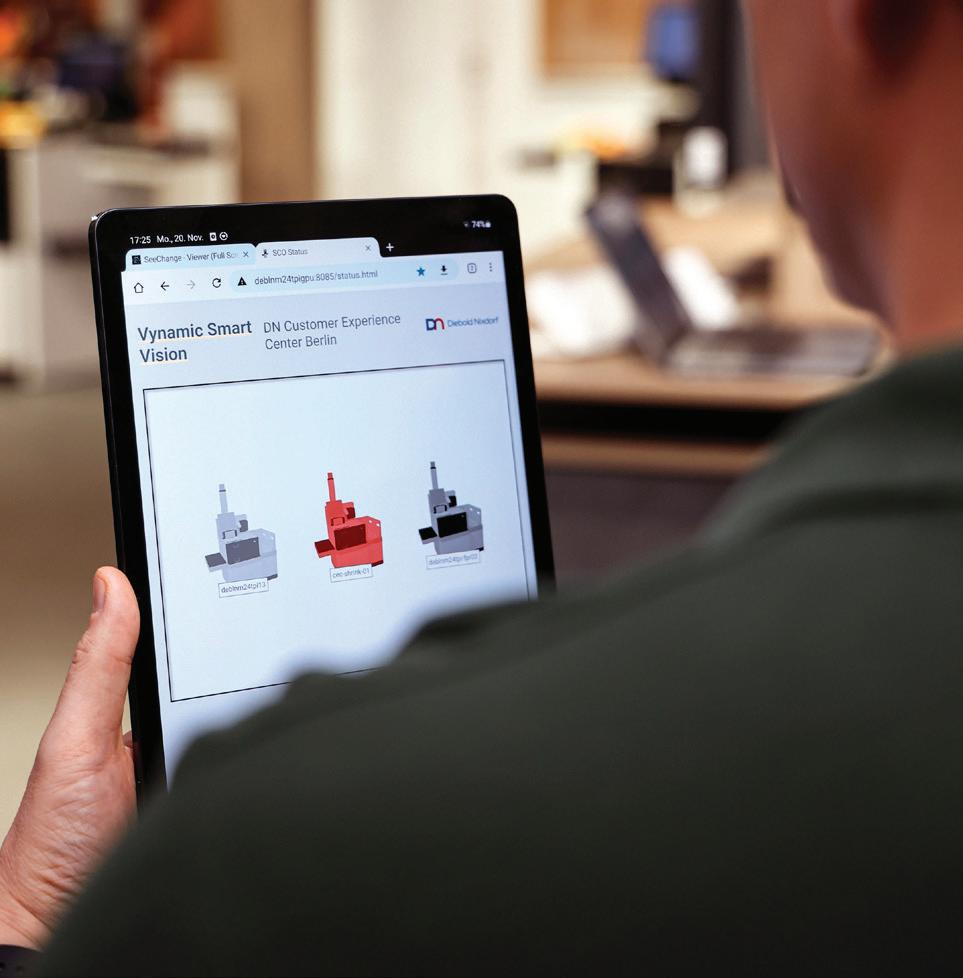
erroneous transactions from three percent to under one percent after rolling out Smart Vision at its La Farlède store. Cashier interventions dropped by nearly 15 percent. In Germany, EDEKA Jaeger at Stuttgart Airport achieved over 80 percent autoapproval for age-restricted products, all handled by first-time, unassisted travellers.
For retailers considering AI, the process begins with identifying the core problem.
“We always start with the ‘why’. Then we analyse their data to find inefficiencies.”
Each implementation is shaped by store layout, traffic patterns, and team resourcing, and success depends on having the right blend of tech, design, and training.
Looking ahead, AI in retail is poised for continued growth. In addition to the first live installations, Diebold Nixdorf is working with more than 90 retailers worldwide to initiate their individual antishrink project based on its scalable open architecture platform.
“AI is here to stay. We’re helping retailers define their use cases and build scalable, effective anti-shrink strategies that work across their enterprise.” n
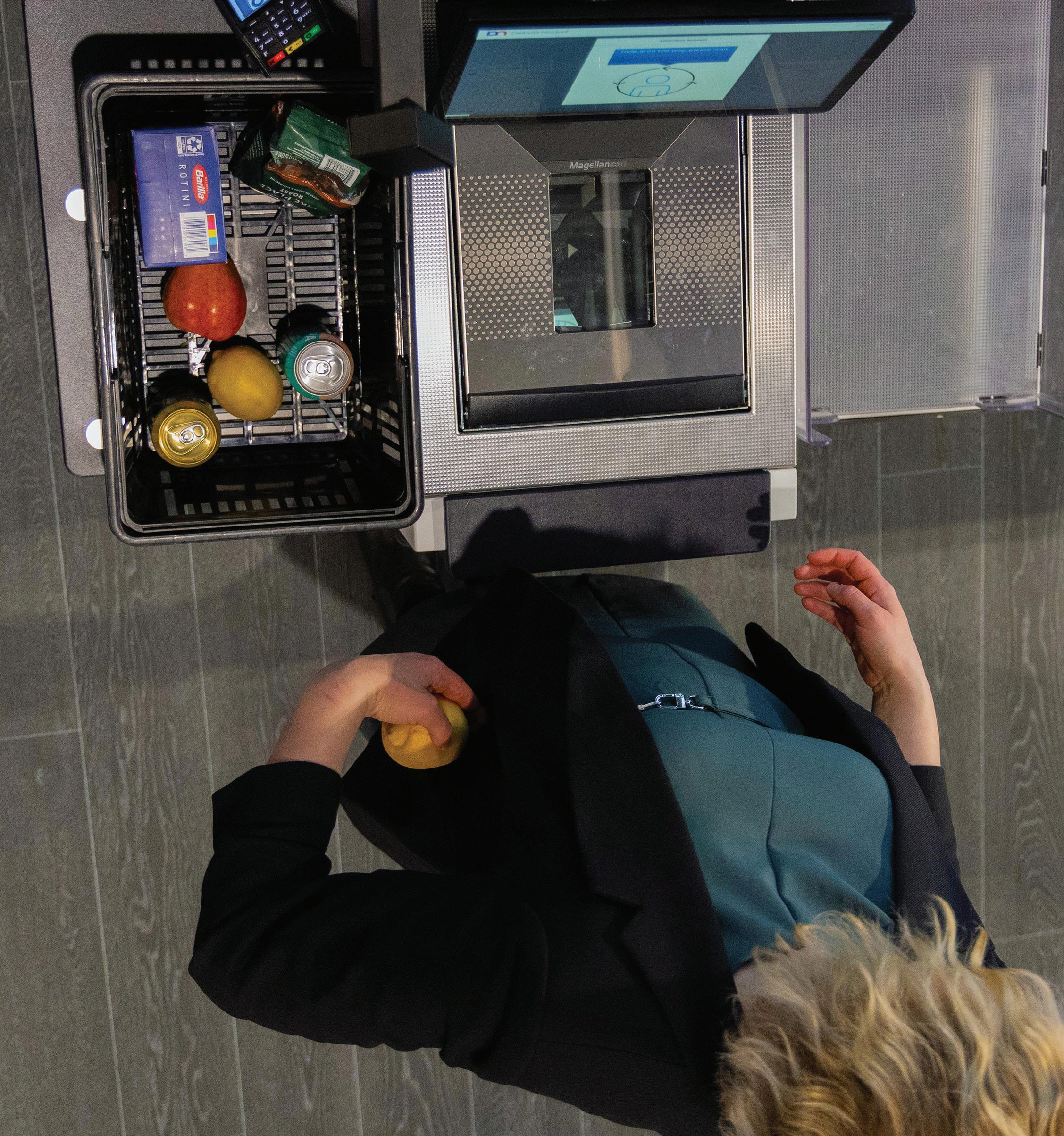




Quad/Graphics Inc. has expanded its In-Store Connect retail media network into Vallarta Supermarkets, one of California’s top Latino-owned grocery chains.
The partnership introduced strategically located digital signage into 15 Vallarta stores, enhancing the shopper experience and providing consumer packaged goods (CPG) brands with a new way to engage Vallarta’s loyal, high-frequency grocery shoppers at the point of purchase.
“For 40 years, innovation at Vallarta has started with a simple question: how can we better serve our neighbours?” said Steve Netherton, Chief Information Officer & Vice President of Continuous Improvement at Vallarta Supermarkets.
“In-Store Connect gives us an effective tool to communicate our unique products and potential savings to shoppers, while opening new opportunities for brands to engage with the communities we serve in meaningful, measurable ways.”
Digital signage in high-traffic areas of the stores will spotlight CPG brands, local products, special promotions, and the fresh, authentic foods that make Vallarta a go-to
destination for shoppers.
In-Store Connect kiosks, shelf screens, freezer-aisle screens and vertical banners will be integrated into the existing store infrastructure. All messaging will run in both English and Spanish.
“In-Store Connect is the retail media network of choice for mid-market grocers and CPG marketers who want to connect with shoppers at scale,” said Kevin Bridgewater, Senior Vice President of Retail Solutions at Quad.
“This partnership with Vallarta expands our network and gives brands more opportunities to convert shopper attention into action, right in the aisle.”
Today’s consumers want more tactile and retail experiences that foster community, good vibes and deeper brand loyalty.
According to recent research from The Harris Poll and Quad, 88 per cent of consumers reported that it was easy to recall physical store experiences that went out of their way to engage customers.
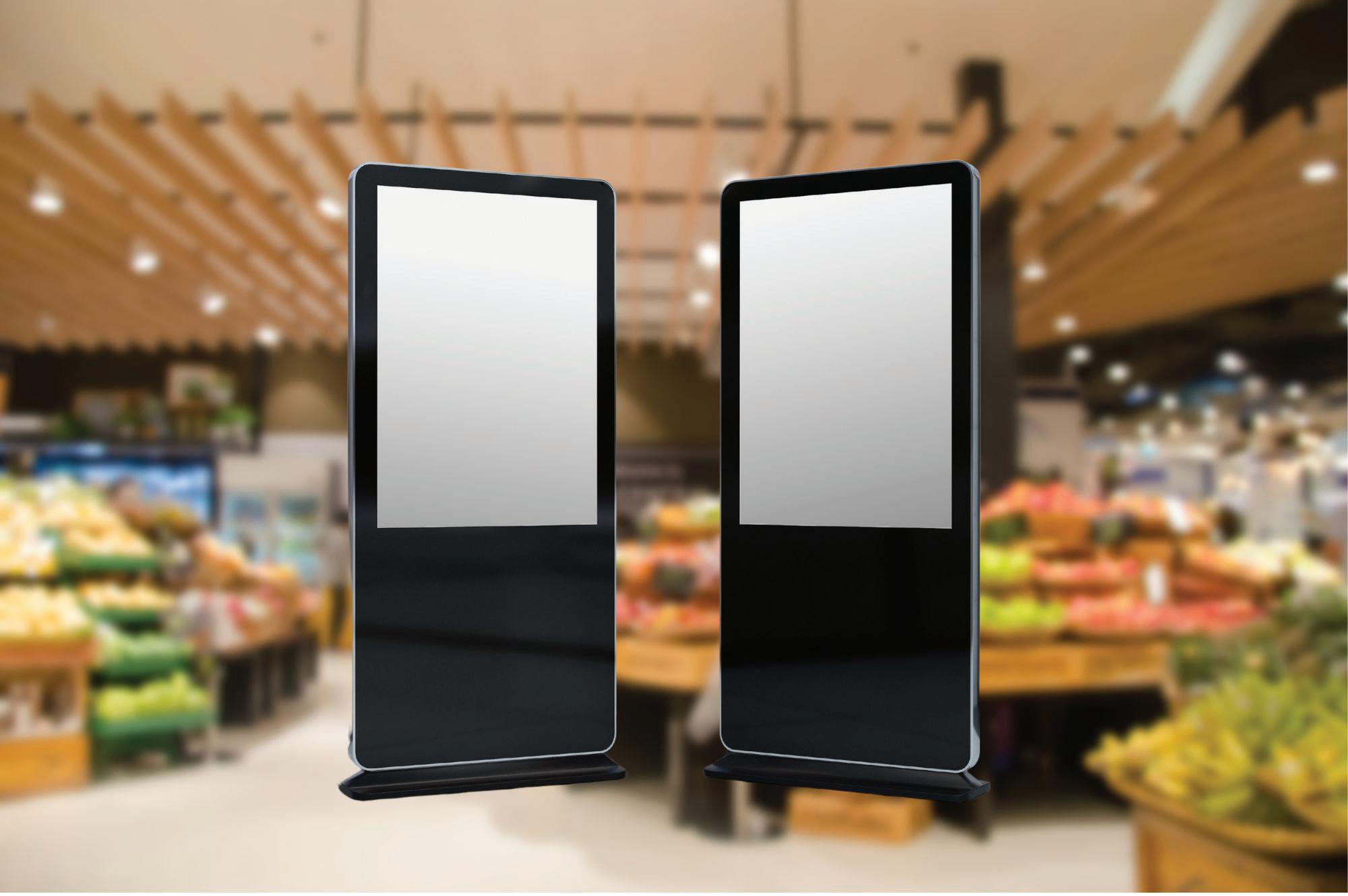
There has been a desire for in-real-life engagements, brick-and-mortar retail, and a resurgence of print media, including catalogues, magazines, and direct mail, all of which are ways today’s consumers want to build lasting relationships with brands.
The new report, “RoT: Return of TouchConsumer engagement has an omnichannel revival,” revealed how a balance of digital and physical moments rounds out a brand’s full omnichannel exposure.
This journey may travel from an in-feed social media ad to printed catalogues in the mailbox to delightful displays in stores that are worthy of Instagram and TikTok. It’s a full-circle, immersive brand experience that marketers must tackle from every angle.
“Together, with Quad, we’re finding new ways to make shopping more personal, memorable and impactful,” said Jay Sharrock, Chief Merchandising & Marketing Officer at Vallarta Supermarkets.
“From thoughtfully designed speciality departments to digital innovations like In-Store Connect, we’re creating immersive experiences that deepen shopper loyalty and build lasting connections between consumers, brands and our stores.”
Since 1985, Vallarta Supermarkets has been bringing families together over fresh and authentic food. Vallarta’s mission is to serve the community with respect and pride, providing authentic, traditional, fresh products for the whole family. Vallarta celebrates the food, culture, colours, and vibrant energy of Mexico and Latin America. As of 2025, Vallarta counts 60 stores throughout California and more than 8,000 team members. n


The food and grocery industry is experiencing a profound transformation, driven by the meeting of digital technology, evolving consumer expectations, and mounting industry challenges.
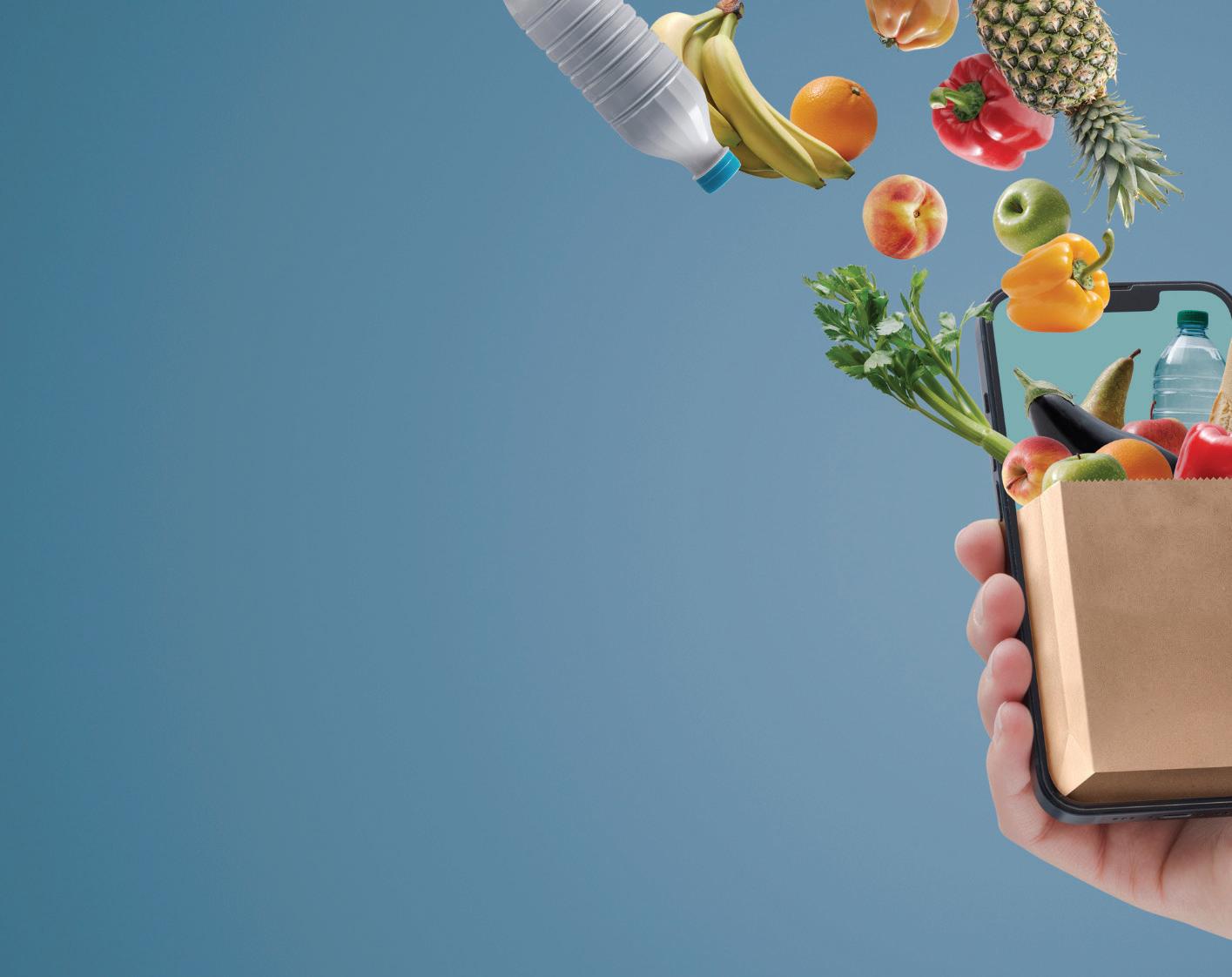

As competition intensifies and margins remain thin, brands and suppliers are progressively turning to smart in-store execution and tech-enabled field strategies to ensure product visibility, compliance, and promotional effectiveness.
The shift from reactive to proactive instore management can unlock new levels of efficiency and return on investment, fundamentally reshaping the way companies approach retail execution.
Tech powered people
In the highly competitive food and grocery environment, shelf performance makes or breaks a product. Out-of-stocks, poor planogram compliance, mispriced promotions, and inconsistent execution across stores all contribute to lost sales and weakened brand equity.
Now, traditional methods of field
execution - paper checklists, manual audits, and sporadic store visits - are getting upgraded. Leading brands are deploying advanced digital tools to capture real-time insights and drive consistent execution.
One of the most interesting developments in this space is the rise of AI-powered image recognition. Teams can use smartphones to take photos of store shelves, which are analysed instantly to assess product placement, shelf share, pricing, and compliance with promotional plans. Taking things up a level, some retailers are even utilising shelf-edge cameras and in-store robotics to perform the same function.
These platforms not only flag execution issues but also recommend corrective actions, enabling real-time problem-solving.
There are also AI solutions that can answer on-the-job questions, coach team members, and support store operations, thus helping to free up the

time of supervisors, speed up the time to competency, and improve productivity.
It is not just field representatives getting technological upgrades. The physical store is becoming more digitalised, which creates an opportunity to access unparalleled data and insights to drive efficiencies and profitability.
As stores become more digitalised, they can monitor shopper activity in real-time, ensure that planogram compliance is happening, and that marketing activities are being activated.
Digitalisation can also help meet consumer expectations. Our analysis shows that consumers are looking for more engagement through personalised and customised interactions.
Among the solutions helping to provide this include self-scanning devices which
While broccoli and cauliflower have a similar nutritional composition, they have different phytochemicals thanks to their different colours. So, mixing the two of them together – and adding a little cheese sauce – is ideal, as the fat will actually help you absorb some of the vitamins and phytochemicals.
deliver targeted adverts and promotions directly to consumers as they shop, and the ability to complete payment directly on the device.
By integrating technology across every stage of the shopping process, retailers and suppliers can create a more engaging and frictionless experience that ultimately drives shopper loyalty and business growth.
The future of in-store execution lies in integration. Forward-looking brands will look to create connected ecosystems where field data flows seamlessly across sales, marketing, supply chain, and operations.
Field reps and retailers should share data to drive smarter, faster decision-making. By combining real-time store insights from field teams with sales and inventory data from retailers, both parties can identify trends, optimise merchandising, and respond quickly to market changes.
This level of connectivity enables more accurate forecasting, better promotional planning, and improved product availability. Shared data also builds trust and alignment, allowing both sides to focus on common goals like customer satisfaction and revenue growth.
As technology advances, seamless data sharing will become essential for staying competitive and agile in the evolving food and grocery retail landscape. This will allow for true end-to-end optimisation from aligning supply with demand, to executing in-store, to measuring impact and informing the next campaign. It transforms field execution from a cost center into a strategic lever for growth.
Advancing together
Collaboration will be critical to empower more retailers - especially smaller brands and independents – to access the tech
innovations that can drive profitability and operational efficiency.
By working together, retailers can share valuable data, develop industry standards, and jointly invest in solutions. This collaborative approach not only accelerates innovation, but also reduces implementation costs, making advanced tools accessible to retailers of all sizes.
Additionally, unified efforts can more effectively address common challenges, such as food waste. As consumer expectations evolve and competition intensifies, fostering a culture of collaboration will be key to enhancing customer experience, increasing agility, and building a more resilient and future-ready industry.
Embrace the new era
Smart in-store execution and tech-enabled field strategies are no longer optional benefits; they are increasingly essential.
As digital tools become more sophisticated and accessible, brands and suppliers have unprecedented opportunities to improve shelf performance, staff performance, ensure compliance, and maximise promotional return on investment.
The winners in this new era will be those that embrace innovation, empower their teams with real-time data, and commit to continuous execution excellence.





Retail Insight, an AI-powered analytics platform for grocery retailers in the USA, has announced significant enhancements to its WasteInsight platform.
It has introduced several powerful new capabilities: Stock Exit Management, Intelligent Donation Enablement, and Food Safety Warnings.
These new features build upon the company's existing expiration date management solutions, Prompted Markdowns and Dynamic Markdowns, further expanding WasteInsight's impact on food waste reduction and inventory optimisation.
This advanced tool helps grocers transform food waste from a financial burden into a strategic opportunity, enabling retailers to ensure food safety compliance while preventing chronic overstock issues before they arise.
In an era where approximately one-third of all food produced globally is wasted, these AI-driven insights enable retailers to simultaneously boost profit margins, streamline operations, and meet increasingly stringent regulatory requirements for reducing waste and ensuring food safety.
The platform delivers on the emerging reality that waste reduction has become a key performance indicator carrying as much strategic weight as revenue growth and customer loyalty.
"Food waste has moved from a backroom operational headache to a boardroomlevel priority for U.S. grocers," said Alex Considine Tong, Chief Product Officer of Retail Insight.
"With razor-thin margins and heightened consumer scrutiny, retailers can no longer afford to treat waste as a mere line item expense. Our expanded WasteInsight platform turns this challenge into an opportunity. We're equipping our customers with not just better visibility, but enhanced AI-driven foresight to act before stock becomes a problem. That's a game-changer for retailers and a big step toward reducing both waste and risk."
Stock Exit Management: Unlike traditional markdown approaches that are often haphazard and too late, this feature gives retailers a data-driven approach to optimising discounts on products nearing the end of their lifecycle.
WasteInsight's AI-driven dynamic pricing engine continuously adjusts markdown strategies for seasonal items, de-listed items and overstocked SKUs, determining the optimal timing and discount level to preserve margins while effectively clearing inventory. The system incorporates factors such as historical sales patterns and local demand trends to ensure informed, proactive inventory decisions.
Intelligent Donation Enablement: One of the most impactful enhancements coming to WasteInsight is Intelligent Donation Enablement, a capability designed to streamline and standardise store-level donation workflows. Built to complement Retail Insight's predictive
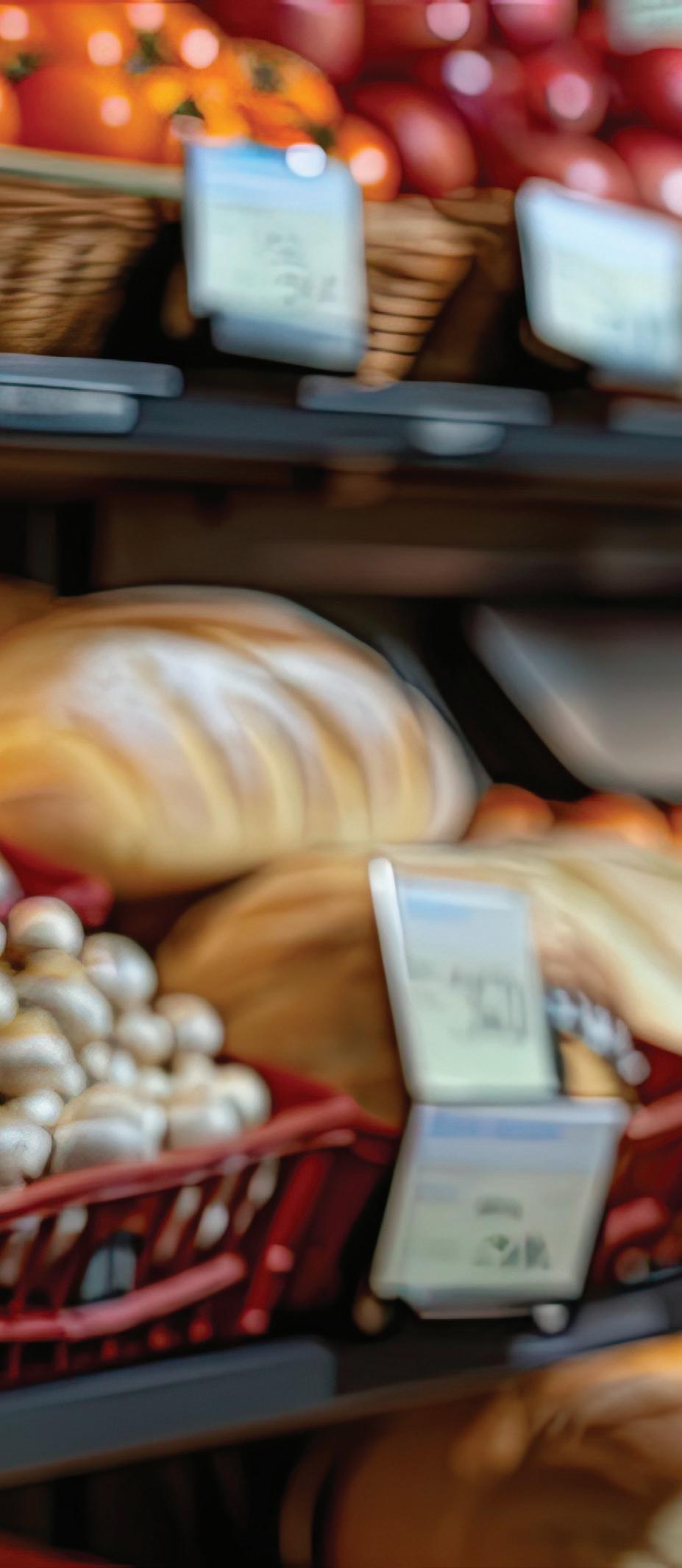
modelling engine, this feature brings greater foresight to food recovery by identifying excess inventory unlikely to sell, down to the store-item-date level.
Once an item has passed through markdown but remains unsold, it becomes eligible for donation, binning, or alternative re-use (such as animal feed).
With Intelligent Donation Enablement, store colleagues simply scan the item in the RI app to check eligibility based on retailerdefined rules. If the product qualifies, they can immediately print a donation label (e.g., "Charity") to mark it for collection, simplifying the in-store process while supporting compliance.
Behind the scenes, the solution generates a structured data feed of eligible items, allowing retailers to connect seamlessly with thirdparty donation partners or integrate into existing platforms. As donations or disposals are recorded in the app, the RI platform automatically syncs with the retailer's inventory system, eliminating the need for manual reconciliation across different tools.

Looking ahead, this capability will evolve into predictive donations, where the system proactively recommends a donation over markdown when it identifies that excess inventory is unlikely to sell. The result: fewer wasted products, simplified store processes, and more substantial alignment with retailers' sustainability and food recovery goals.
With greater visibility into both risk and opportunity, store teams can make faster, more informed decisions, reducing waste, improving operational efficiency, and strengthening their brand's environmental impact in the communities they serve.
Dynamic + Prompted Markdowns with Food Safety Warnings: This innovative solution enhances in-store efficiency while ensuring compliance with food safety regulations. This technology automatically tracks expiration dates and provides timely alerts for inventory nearing expiration.
Additionally, it warns store associates if an expiry date entered into the system falls outside the typical date range, preventing data
entry errors and reducing the risk of selling mislabeled or potentially unsafe products.
The solution intelligently optimises markdown timings and pricing strategies while directing store associates to the exact locations where action is needed, minimising the time spent searching for products. This comprehensive approach not only reduces waste and protects margins but also delivers crucial food safety protection by instantly identifying potentially unsafe products, supporting both regulatory compliance and consumer safety.
Retail Insight's WasteInsight platform also optimises markdown strategies with a dynamic markdown pricing solution, helping retailers minimise waste while maximising sales and profitability.
The Dynamic Markdowns solution utilises near real-time data and AI-driven insights to adjust pricing based on demand, sell-through rates, and expiration timelines, ensuring reductions occur at the optimal time to boost sell-through while maintaining margins. The Prompted Markdowns solution strategically
alerts store associates to items with upcoming expiration dates, enabling them to clear stock efficiently and effectively. Together, these features enhance operational efficiency, reduce food waste, and foster a more sustainable and profitable retail environment.
This powerful product expansion provides retail teams with a comprehensive solution to manage all forms of expiring inventory, efficiently clear de-listed products, and ensure food safety compliance.
By bridging the gap between long-term strategic planning and day-to-day in-store execution, grocers can simultaneously reduce operational costs, strengthen brand reputation, and meet regulatory requirements for waste reduction and food safety.
The result is a strategy that delivers measurable business outcomes: fewer unsold perishables, higher sell-through rates, reduced disposal costs, enhanced food safety, optimised labour productivity, and improved positioning as a sustainability leader, all increasingly critical differentiators in today's competitive grocery market.




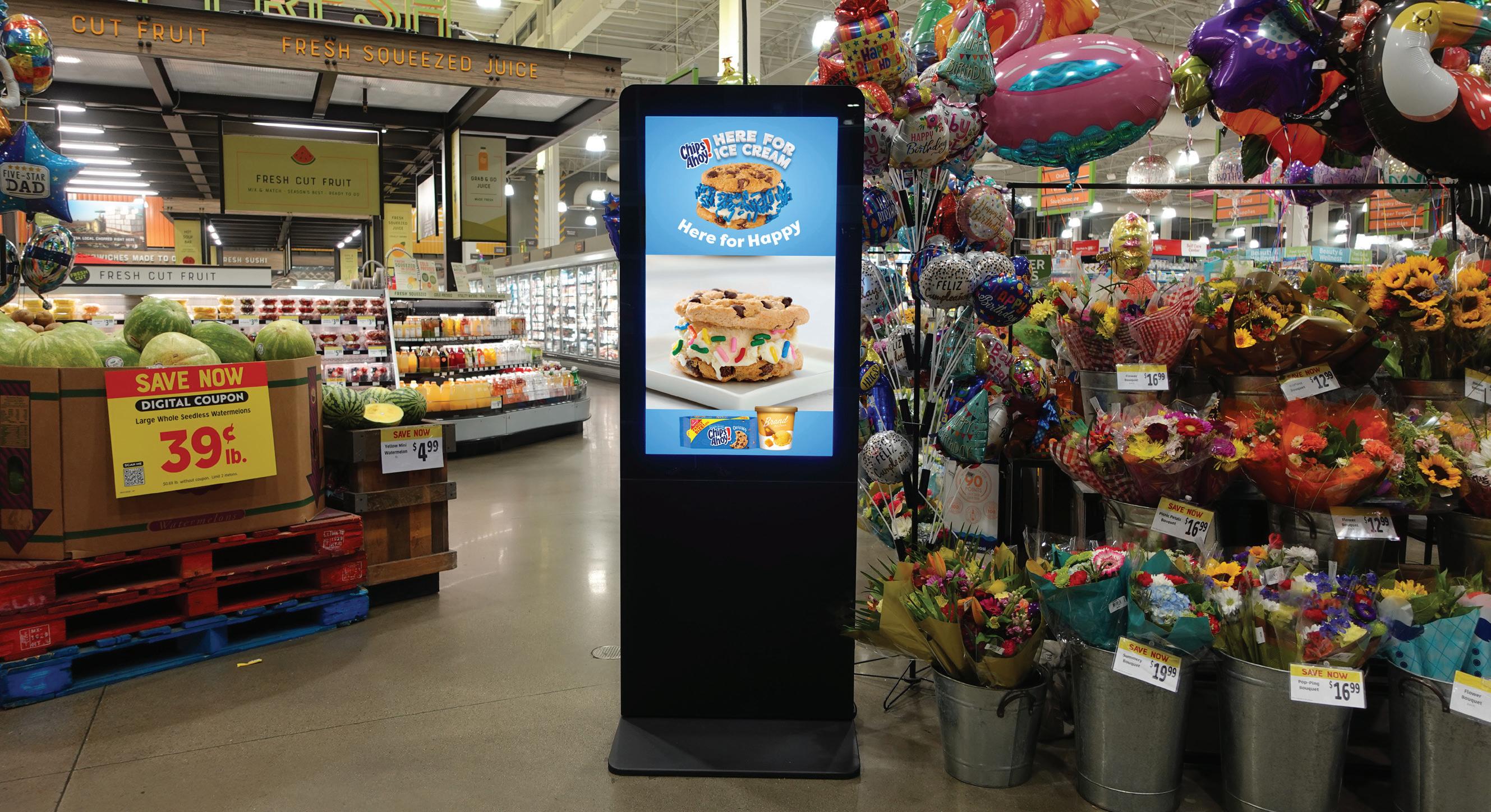
By Kevin Bridgewater, SVP Retail Solutions, Quad.
For years, giants like Amazon and Walmart have dominated the retail media space, pulling in billions in CPG advertising thanks to their massive scale. But while advertising dollars have gone digital, most retail sales (over 80 percent) still happen in real, physical stores.
For mid-market grocers, that fact presents an opportunity. Chains with fewer than 1,000 locations are increasingly turning their foot traffic into their media audience and capturing more brand dollars by partnering with in-store retail media networks.
The result is a new revenue stream for retailers, stronger performance for CPGs, and most importantly, a more engaging experience for shoppers.
At Quad, we’ve spent the past year scaling In-Store Connect, a turnkey instore retail media network designed for mid-market grocery chains that have highfrequency, high-intent customers in trusted, community-based stores. Our partners include Save Mart, Homeland, and now, Vallarta Supermarkets, among others.
We install 12–15 digital screens per store, placed at key points around the “racetrack” where people spend the most time. Digital kiosks, shelf screens, refrigerated/freezer-
aisle screens and vertical banner screens are integrated into existing infrastructure and spotlight CPG brands, special promotions, and the neighbourhood-favourite products that make these grocery stores shopper destinations.
In-store retail media follows the same logic as paid search: reach shoppers when they’re in the aisles actively seeking information and ready to make decisions. Done right, the digital screens spark ideas, provide information, and prompt shoppers to buy.
There’s always an important question with retail media: Does it work?
The answer is, yes, and it’s measurable. Campaigns on In-Store Connect have delivered 5 to 20 percent sales lift for participating brands, depending on the campaign objective. Brand equity advertisements get the lower end whereas promotions make up the higher end and can generate a lift of even more than 30 percent.
We’ve also seen up to 10 percent category lift. Done well, in-store media can prompt shoppers to buy more than just the promoted item.
These numbers come from directtransaction log data provided by our retail partners and are validated via control store comparisons. The result is both brands and retailers can clearly see that this solution is working.
Our recent expansion into Vallarta Supermarkets, one of California’s fastgrowing grocery chains, shows how in-store media can both support brand performance and enhance the experience for shoppers.
Vallarta is a neighbourhood anchor and family-owned chain. For 40 years, they’ve built trust by elevating authentic ingredients and celebrating the foods of Mexico and Latin America.
With In-Store Connect, they’re launching a new, measurable way for brands to engage with shoppers, in Spanish and English, while also bringing dynamic signage, better performance data, and a share of campaign revenue into their stores.
In-store retail media is part of a broader shift toward smarter execution, where creative, logistics, and media work together with the help of an in-store retail media network provider.
Retailers who embrace this integrated approach are better positioned to:
• Ensure consistent execution across store locations
• Monitor content and compliance in real time
• Optimise campaigns based on actual sales data
• Build stronger brand partnerships rooted in performance
Too often, strong campaigns are undercut by poor execution, including outdated content, missing displays, or inconsistent rollout – all of which can be damaging to a brand. Historically, the last mile of influence, what happens in the aisle, has been difficult to manage.
But today's tech-enabled tools change that with remote control over maintenance, content updates, brand compliance, and

screen performance, all without adding burden to in-store teams.
When creative, strategy, and field teams are aligned, brands see stronger results and retailers gain greater control over in-store performance.
Industry-wide, the moment is now. According to eMarketer, U.S. retail media ad spending will hit nearly USD 60 billion in 2025, making up over 36 percent of the worldwide retail media spend.
Specifically, in-store RMNs are projected to reach USD 1.06 billion by 2028, making them one of the fastest-growing areas of the space.
Grocers are recognising the store itself as the next great media frontier. In-store RMNs let retailers monetise their aisles, improve promotional ROI, and enhance the shopper experience. All the while, they’re creating new value for CPG partners.
As in-store retail continues to drive the majority of grocery sales, the physical store is using new technology to reclaim its power as a place of both commerce and connection.





Health and immunity are top of mind, especially when winter bugs are circulating.
According to NIQ’s "The Future of Fresh Food: Top Trends Shaping the Market in 2025," fresh food has continued to remain a key priority for many consumers, especially those who view it as integral to their health and wellness.
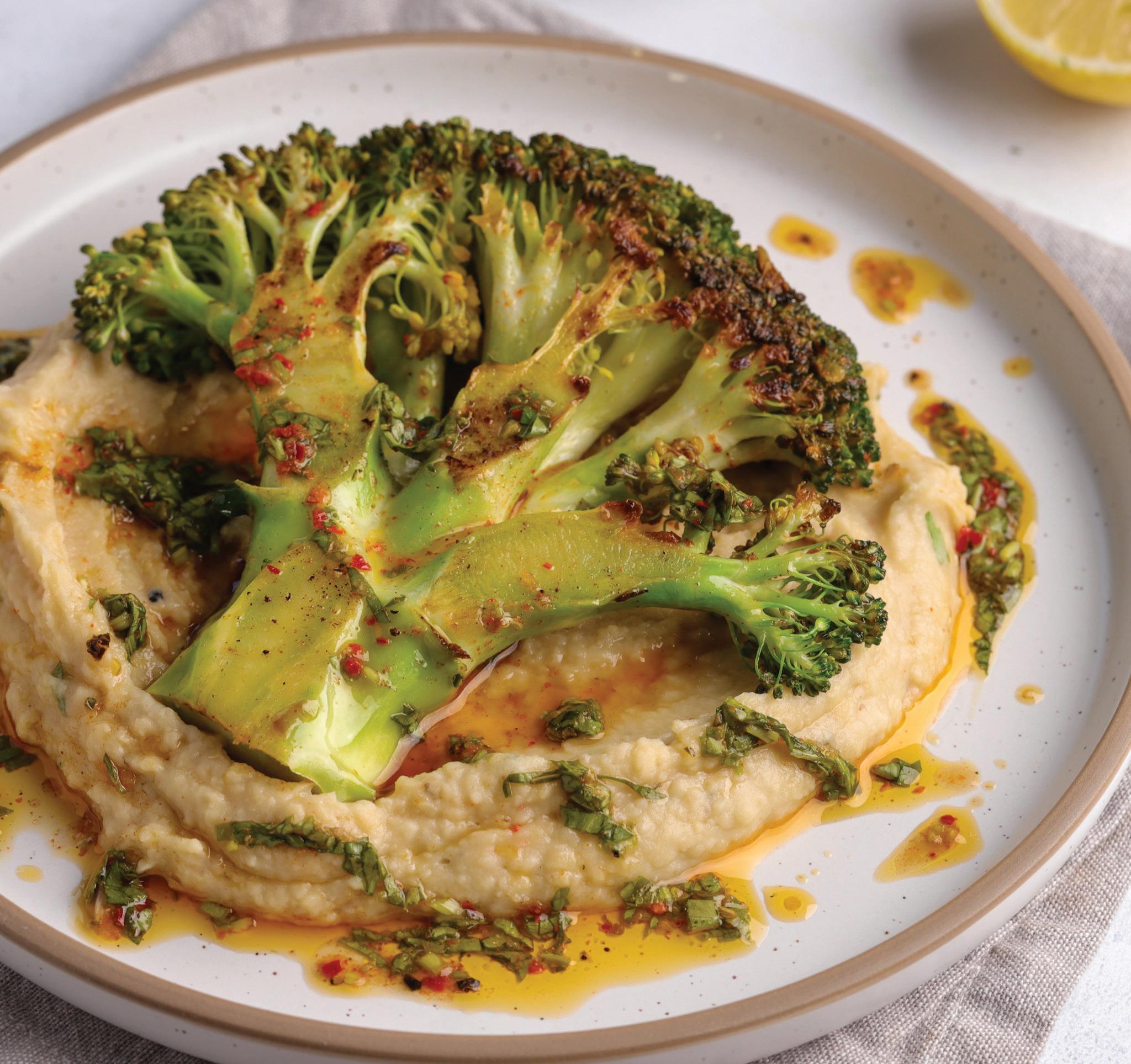
As a result, shoppers are making deliberate trade-offs between quality and affordability. Some are willing to pay a premium for organic or locally sourced produce, while others opt for conventionally grown items or smaller portions to manage their costs.
The International Fresh Produce Association (IFPA) also recently launched a bold new campaign, spotlighting fruits and vegetables as nature’s original prescription for better health, lower healthcare costs, and longer lives.
With headlines like “Before there were pharmacies, there were farms” and “Before there were co-pays, there were carrots,” the campaign delivered a direct message to U.S. policymakers: you can’t make America healthy again without fruits and vegetables.
Every year, broccoli consistently makes the top ten favourite list of supermarket purchases, and according to Bevan Roach, LeaderBrand GM of Sales and Marketing, consumers eat twice as much of it in winter as they do in summer.
“That’s tens of millions of heads making their way onto dinner tables across the country. Foodstuffs North Island alone has sold over 16 million heads of broccoli each year. That’s a lot of green goodness,” said Roach.
Broccoli is a rich source of vitamins, minerals, fibre and antioxidants. It’s incredibly easy to prepare, and it pairs well with any meal, making it an excellent option for kids. It helps boost natural immunity, which is particularly beneficial in the colder months, and it’s much more costeffective than buying a coffee.
Innova’s Global Fruit and Vegetables Industry Trends revealed that more than one in three consumers take a proactive approach to prevent health issues. This has been reflected in immune health
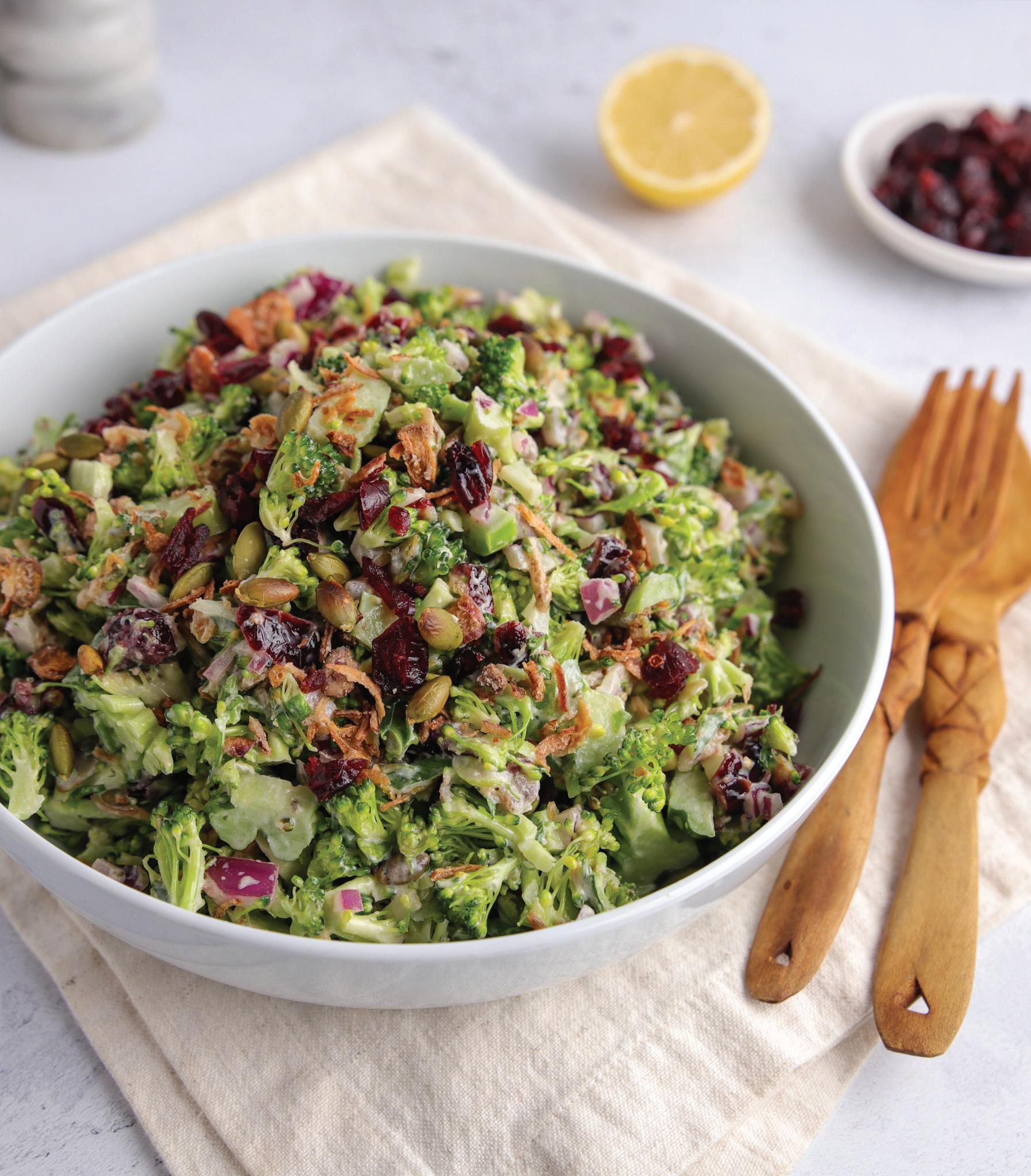
claims, which account for 38 percent of health-active claims. This is followed by improvements in energy/alertness, heart health, digestive/gut health, and brain health over the past year.
Notably, options rich in vitamin C for boosting immune health, vitamin B and selenium for supporting brain health, and fibre-dense products for aiding gut health are in high demand in the market.
On the salad front, Roach said that bagged spinach was having a real moment. It has become the go-to leafy green for many Kiwis, thanks to its versatility and impressive nutritional profile. Whether you’re tossing it into a smoothie, layering it into a sandwich, or wilting it into your favourite pasta or curry, spinach is a winner all year round.
Spinach is another nutritional powerhouse, rich in vitamins A, C, and K, as well as iron and calcium. It’s a favourite for families and health-conscious shoppers who want to keep everyone feeling their best throughout the colder months, and it's versatile as it can be added to any meal throughout the day.
“Let’s face it, we’re all busy. Quick, easy meals that don’t sacrifice nutrition are lifesavers, especially when the weather’s chilly and the days are shorter. That’s where bagged salads and ready-to-eat veggies come
in. They’re a cost-effective and convenient way to elevate your winter meals without all the prep,” added Roach.
“It’s easy to fall into the trap of thinking salads are just for summer, but don’t be fooled. There’s a salad for every season, and plenty of ways to enjoy veggies warm or cold. With fresh produce this nutritious and convenient, getting your daily dose of greens has never been easier.”
The NIQ report also mentioned that organic and clean-label options have been gaining traction, with consumers willing to pay a premium for products that promise transparency, fewer additives, and sustainable farming practices.
This has highlighted an opportunity for brands and retailers to emphasise the health benefits of fresh offerings while incorporating messaging around quality and authenticity.
The shift has been further propelled by the growing use of GLP-1 medications by consumers. Many of these users pair their usage with a healthier diet, helping to promote the consumption of fresh and organic foods.
Fresh food brands can particularly benefit from this trend, especially when their offerings align with plant-based diets or when they are labelled as “organic,” one of the most sought-after product attributes. n




Promoting fresh winter produce is a win for us all – hard-working growers who rely on seasonal income, retailers who want to boost sales, and consumers who try to stay healthy and well by eating nutritious food.
That’s why the 5+ A Day Charitable Trust is encouraging retailers to get involved in their Winter Produce Promotion to help make an impact throughout the supply chain.
Lemons, oranges, kiwifruit, tamarillos, potatoes, kūmara, brassicas, onions, parsnips and carrots will all feature in social media promotional activity throughout winter. New recipes and serving suggestions which leverage the latest consumer trends will be highlighted, along with giveaways and key nutrition information.
“We would love to see our supermarket industry workforce engage with 5+ A Day’s winter promotional activities to help drive produce sales and reach more healthconscious consumers,” explains 5+ A Day Charitable Trust Project Manager, Carmel Ireland.
“New Zealand’s seasonal produce suppliers work incredibly hard year-round to bring the very best fruit and vegetables to market. It’s up to us to work together to showcase the nutrition and health benefits, versatility and amazing dishes that people can create while our winter produce is at its absolute peak.”
Citrus fruit, kiwifruit, tamarillos and brassicas like cabbage and broccoli are all a good source of vitamin C which is crucial for immune support and fighting off those winter bugs. Meanwhile, root vegetables like potatoes, kūmara, carrots and parsnips all provide hearty, energy-dense nutrition which is ideal for warm and comforting meals on those chilly days and nights.
“We are lucky to have such a plentiful supply of these high-quality, New Zealandgrown crops which thrive at this time of year,” Carmel says.
The 5+ A Day promotion also aligns with wider public health goals of increasing consumption of fresh fruit and vegetables.
“Only one in ten New Zealanders currently eat the recommended five or more servings of vegetables daily. A direct link does exist between the amount of fresh produce people regularly consume and their
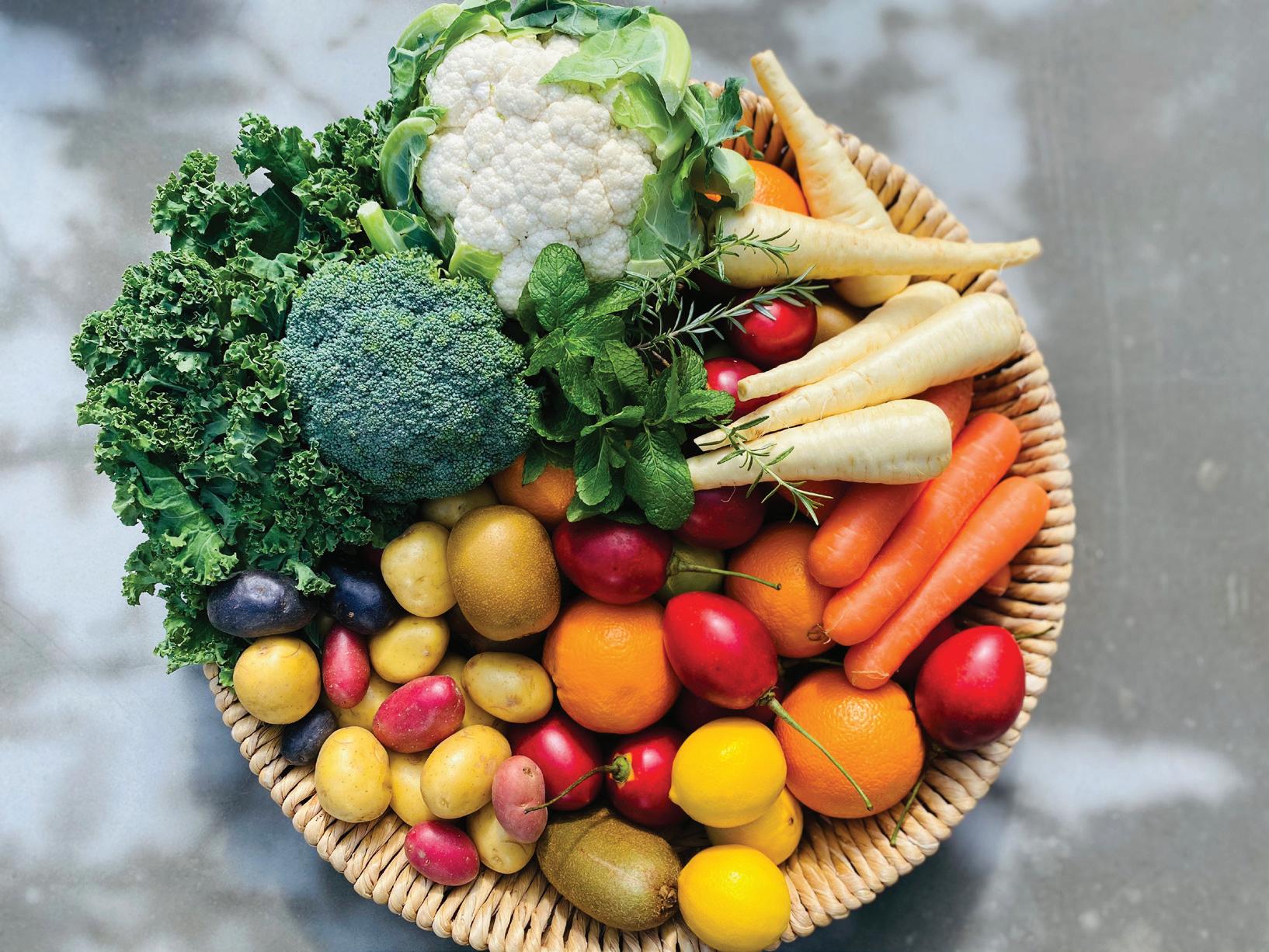
health outcomes. Each fruit and vegetable offers a unique combination of essential nutrients and phytochemicals. Studies show the most consistent decrease in disease risk is seen when people eat a more diverse range of fresh produce.”
Retailers can help support 5+ A Day’s current winter promotion by prominently displaying in-season produce in store. Attractive displays where stock is frequently topped up and rotated will help drive sales and raise consumer awareness about what’s in season at this time of year.
“If consumers are hearing and seeing new recipe ideas, they’re more likely to make those purchasing decisions if they walk into store and see things like oranges, lemons, kiwifruit and tamarillos right in front of them. Winter fruit and vegetables are so bright and colourful too, so there’s lots of opportunities for retail staff to help showcase this wonderful produce.”
5+ A Day’s winter produce promotion is
running on Facebook, Instagram and TikTok using the @5adaynz handle. All retail staff are encouraged to follow this account to keep up-to-date with ideas and inspiration. The 5+ A Day website (www.5aday.co.nz) is also a great resource to check what’s in season and find recipes and nutrition information that consumers might find useful.
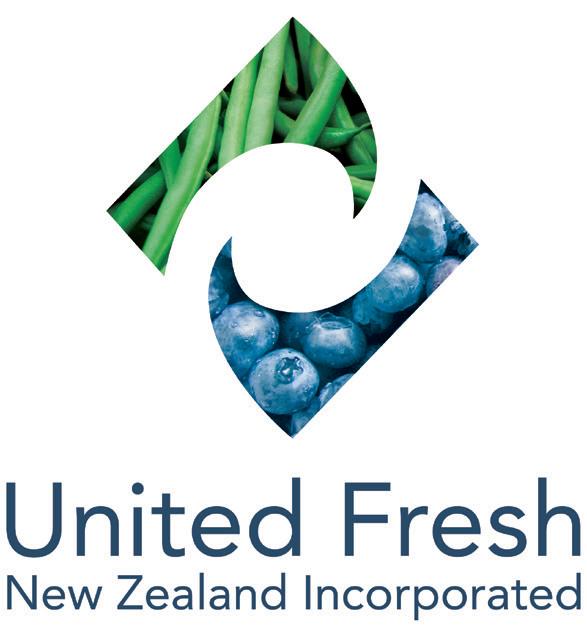

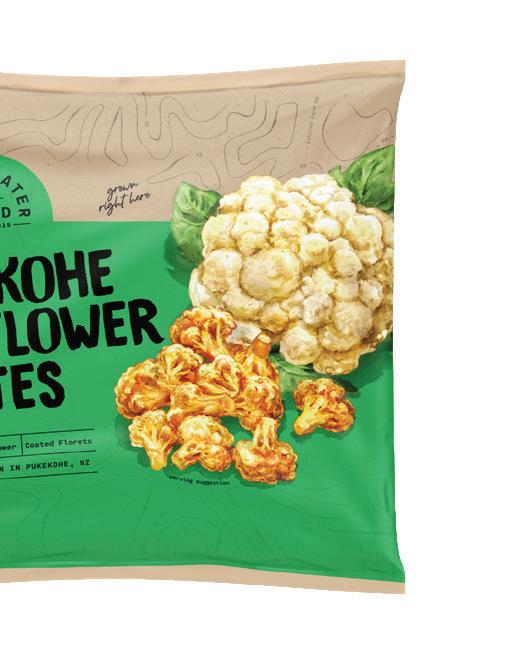

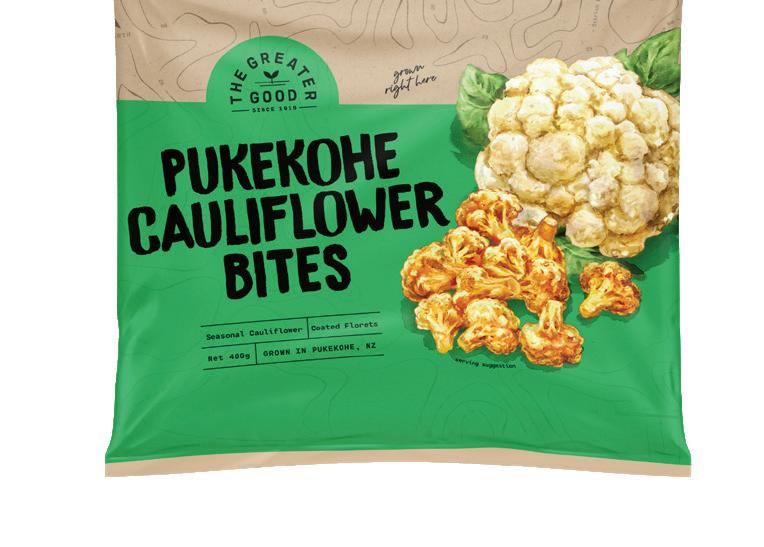
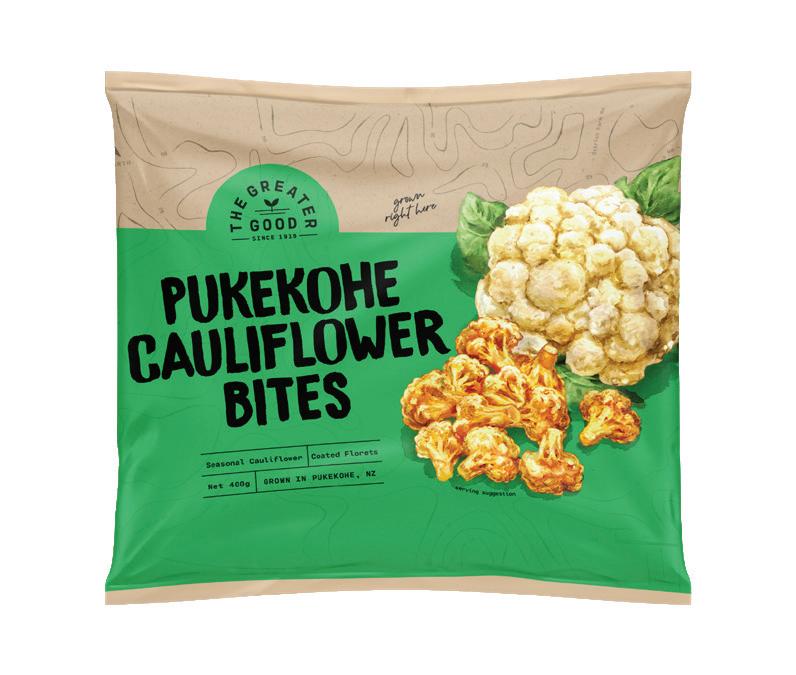
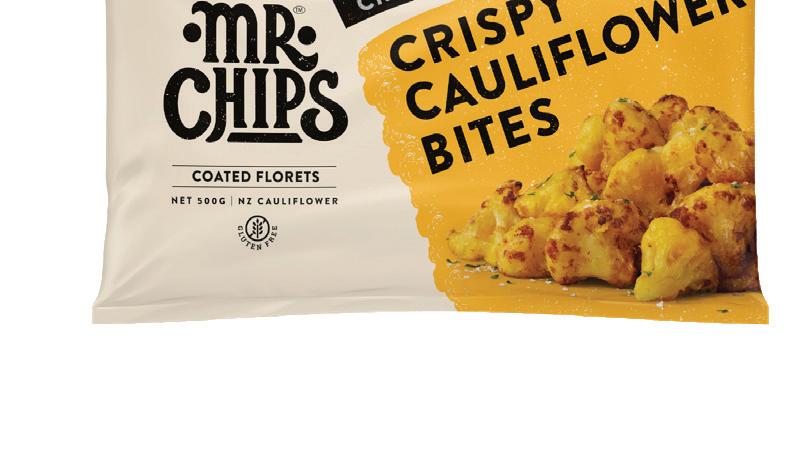


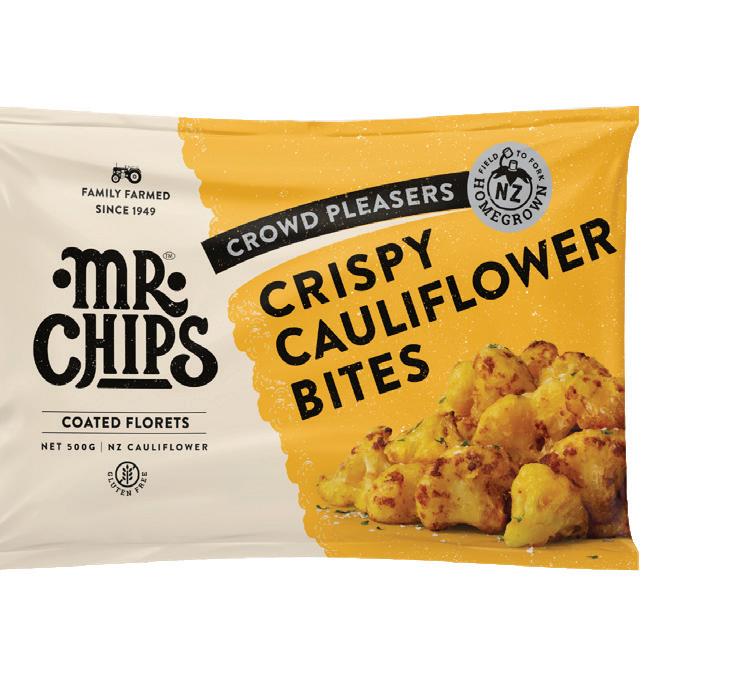






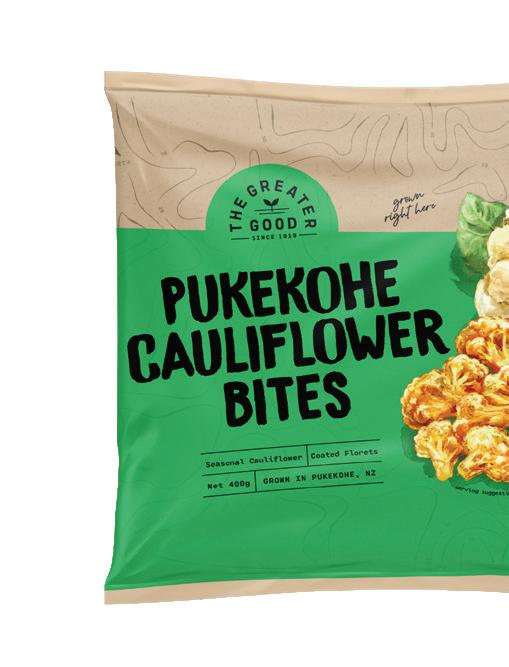
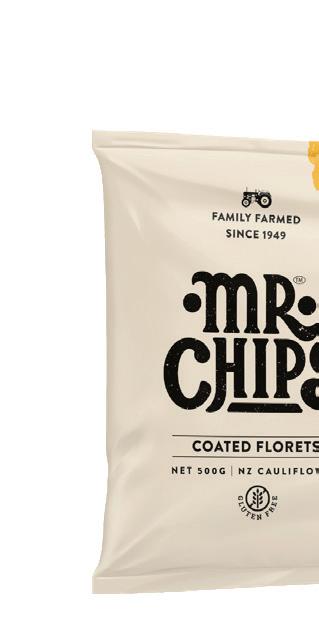



Since 1919, our family of farmers has proudly cared for the land and its people. All our products are made from quality New Zealand-grown produce, fresh, local, and full of goodness.
Our frozen Cauliflower Bites are locked in with nutrients and freshness; coated in a Gluten free coating made perfect for the whole family to enjoy - especially as a comforting winter side to go with any meal. Convenient, tasty and GLUTEN FREE!! Crispy texture, and full of flavour. Just pop them in the oven or an air fryer and let them work their magic.




ballefarms.co.nz






Based in the USA, Little Leaf Farms, one of the top brands of packaged lettuce sustainably grown through controlled environment agriculture (CEA), has expanded its line of leafy greens with the launch of its newest variety: Romaine Leaf.
Setting a new standard in how Romaine is grown and enjoyed, Little Leaf Farms has introduced Romaine Leaf: a flavourful lettuce that stays fresh and crispy longer, and is grown without the use of harmful pesticides, herbicides, or fungicides.
Little Leaf Farms is on a mission to transform the way food is grown through peri-urban agricultural practices that are rebuilt for the modern world. Utilising advanced greenhouse technologies, Little Leaf Farms produces fresh, sustainably farmed lettuce 365 days a year.
Little Leaf Farms utilises captured rainwater, natural sunlight that shines through high-transmission glass, and solarpowered energy in their precise, soil-less hydroponic farming. The crispy, flavourful baby greens are harvested without ever
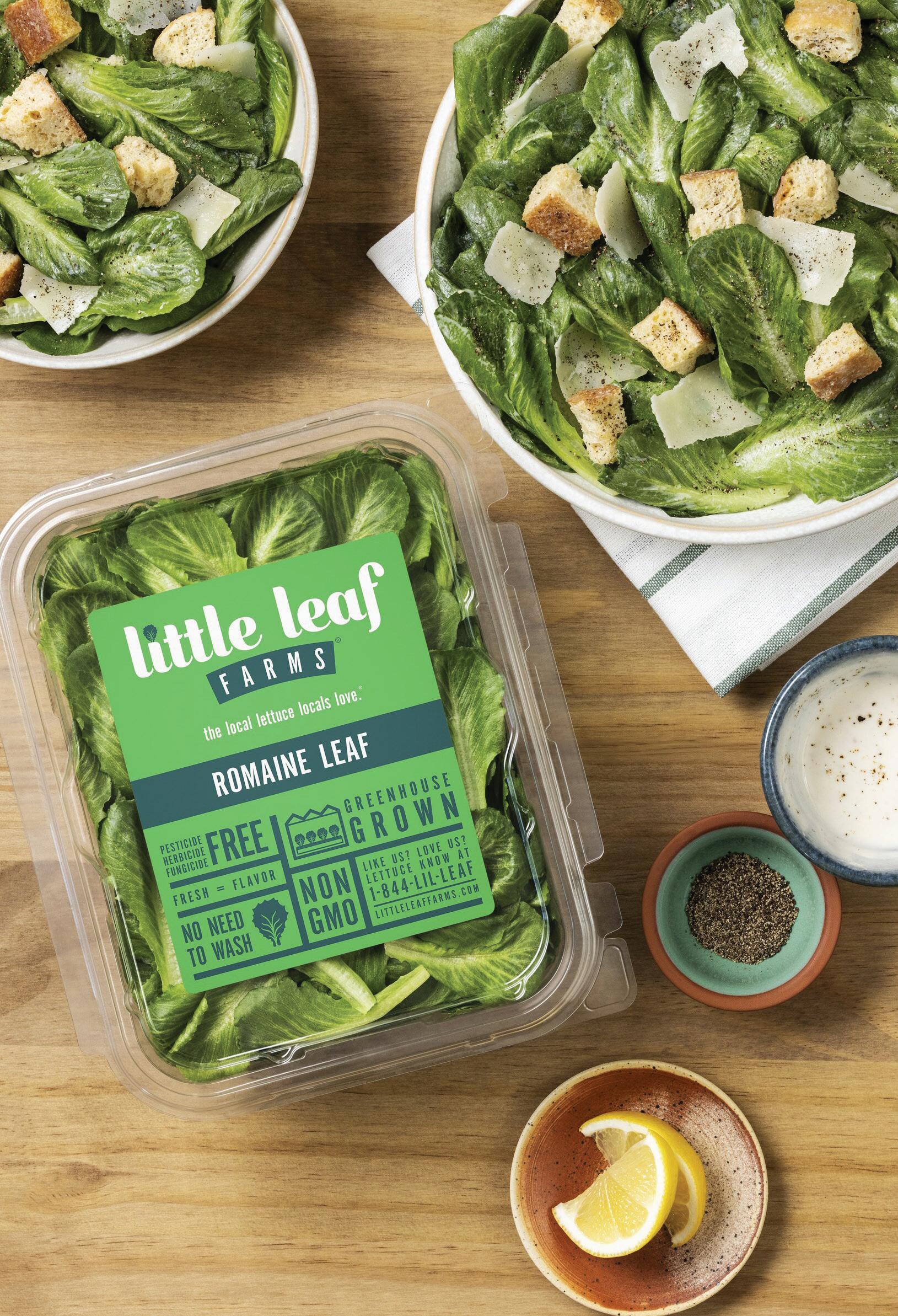
touching human hands and are never treated with chemical pesticides, herbicides, or fungicides.
Unlike field-grown lettuce, Little Leaf Farms' leafy greens are hands-free from seeding to harvest, which means no washing is required. Perfect for salads, sandwiches, or any recipe that needs some extra crunch, Romaine Leaf is harvested daily and delivered from greenhouse to grocery store in about a day – a testament to the brand's commitment to delivering on freshness, quality, and taste.
"Romaine is a staple in households across the country, and we saw a real opportunity to elevate this everyday favourite," said Chris Hill, Chief Revenue Officer at Little Leaf Farms.
"By growing our leafy greens in a controlled environment, we're offering consumers a crisp, fresh Romaine they'll love,
grown in a way they can feel good about."
Romaine Leaf is the latest addition to Little Leaf Farms' ongoing expansion.
The new lettuce variety was announced in conjunction with the company's unveiling of its newest facility in Manchester, Tennessee, a 215-acre site that will significantly increase production capacity.
Once fully operational, the Tennessee greenhouse will supply fresh leafy greens to the Midwest, Southeast, and Texas. Construction is set to begin this year, with an anticipated launch in 2026.
As the fastest-growing packaged salad brand in the country, Little Leaf Farms has continued to advance toward its goal of bringing fresh, delicious leafy greens to all, serving over 50 per cent of the U.S. population through 7,000 grocery stores in the Eastern United States. n
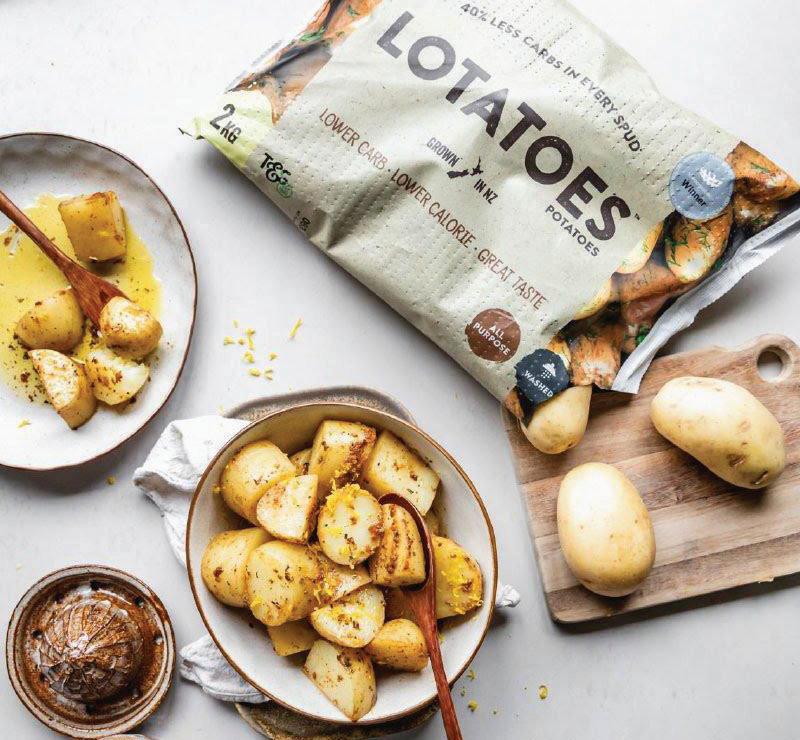
Winter is here, and so is the season of hearty food. If you are keeping an eye on your carb intake, then don’t forget about Lotatoes™, available at all good supermarkets and greengrocers nationwide.
Lotatoes™ is a naturally bred, low-carb potato grown right here in Aotearoa, New Zealand. With just 10.8g of carbohydrates per 100g, containing on average 40 percent fewer carbs and calories than the commonly available Agria potato variety, these tasty morsels don’t skimp on flavour.
Proudly grown by Balle Bros, Master & Sons and Canterbury Growers in the best growing regions Aotearoa New Zealand has to offer. The rich, fertile soil and ideal climate conditions are perfect for growing flavoursome, healthy potatoes.
There is so much to love about how versatile Lotatoes are, from a classic potato salad to a cheesy potato bake, Lotatoes can be enjoyed baked, boiled or mashed - they are what low-carb dreams are made of.
For more information and recipes, head over to www.lotatoes.co.nz
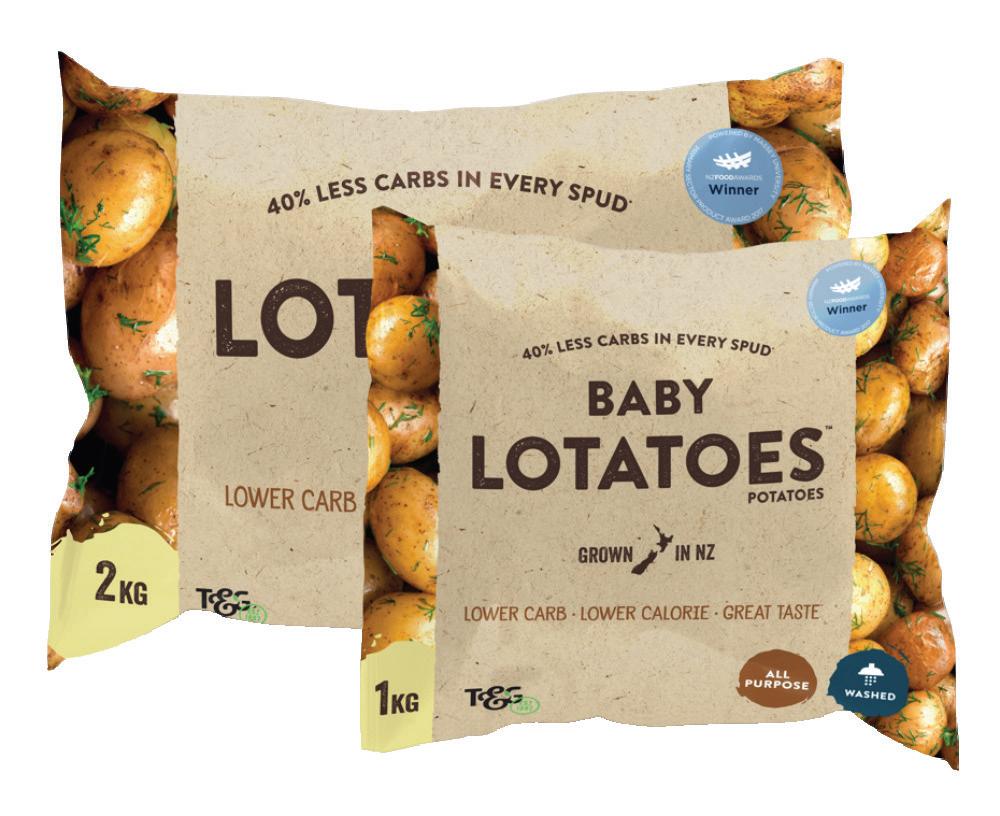




Hearty vegetables that thrive in cooler conditions are perfectly designed to support our physical and mental wellbeing during winter, delivering essential nutrients to strengthen our immunity and keep us feeling energised.
Right now, New Zealand growers are producing a bumper supply of brassicas, carrots and mushrooms – versatile staples that deliver both flavour and nourishment just when they’re needed most. With strong supply and strong health benefits on offer, retailers should look to shine a spotlight on these winter superstars this month.
Brassicas – also known as cruciferous vegetables – include favourites like broccoli, cauliflower, cabbage, and Brussels sprouts. They’re rich in dietary fibre, antioxidants and nutrients that support immune health and digestion.
Broccoli heads are often smaller in winter because lower temperatures and reduced daylight hours slow down the plant’s growth rate. But they’re still packed with nutrients to ward off winter illness. In fact, one cup of broccoli will provide more than twice your recommended daily intake (RDI) of Vitamin C (225 percent) while a similar amount of cauliflower will provide 120 percent of your RDI.
The best quality broccoli has a dark green compact head with no yellowing. Store them
in the chiller away from ethylene-producing produce and sprinkle them with water if you’re returning them to the chiller overnight.
While broccoli and cauliflower have a similar nutritional composition, they have different phytochemicals thanks to their different colours. So mixing the two of them together – and adding a little cheese sauce – is ideal as the fat will actually help you absorb some of the vitamins and phytochemicals.
Brussels sprouts are also a good source of Vitamin C as well as Vitamin K (good for bone health). Each sprout also contains a wide range of important B vitamins (folate, thiamin, riboflavin and Vitamin B6) which are crucial for healthy cell growth, energy, nervous system, brain function and may even improve your mood. Some people shy away from Brussels sprouts because they can taste bitter when boiled. But encourage customers to try roasting, sauteing or airfrying them instead with a little olive oil, garlic and lemon. Delicious.
Meanwhile, root vegetables like carrots are full of beta-carotene which our bodies convert into Vitamin A. This nutrient is


the key to good vision and eye health – just one serving of carrots provides 46 percent of your RDI of Vitamin A. Carrots are also a source of dietary fibre to keep your gut healthy and promote regular bowel movements. Given they are good value, versatile and nutrient-rich, carrots are a staple in most New Zealand households and always sell well.
Like broccoli, carrots are also sensitive to ethylene gas so keep them away from apples, bananas and tomatoes in your storage facilities or retail floor displays.
Mushrooms are grown indoors so they are not exposed to volatile winter weather. But they still need to be handled with care. New Zealand’s Commercial Mushroom Growers Federation recommends retailers keep the cold chain consistent at 2˚C to 4˚C. Multiple handling will cause them to bruise and turn brown easily – particularly white button ones.
Mushrooms have been used throughout history as medicine and contain a wide variety of vitamins and minerals including selenium, niacin, riboflavin and Vitamin B6. Together, they provide wide-ranging health benefits such as immune support, energy, brain function, antioxidant protection and cell repair.
While winter vegetables all look and taste very different, their purpose is the same – to help us stay strong, nourished and resilient through the cold winter months. Prominently displaying these vegetables in store when they’re at their peak is good for your business, and our nation’s health.


We’ve developed the Family Favourites range to meet the demands of the current economic climate in New Zealand.
Our goal is to provide everyone with high-quality, convenient, fresh vegetables that fit into today’s budget.
As grocery bills have risen, many people have returned to basics, and so have we. These products are our 'bread and butter.'
We know them inside and out, ensuring
they’re produced efficiently and sustainably. This enables us to keep costs low throughout the supply chain, delivering the best value to our customers.
They’re also incredibly convenient, washed, prepped, and ready to go, saving you time in the kitchen so you can get on with what matters.
The Somerset Farms Family Favourites range is available at Woolworths NZ nationwide. For mor information, visit https://www.somersetfarms.co.nz/





If you have ever binned half a bag of slimy spinach or found yourself scraping last week’s curry into the compost, you are not alone, you are normal.
The truth is, food waste is not a personal failing. It’s a system-level problem that most of us are just trying to survive within.
Modern life is stacked against us: oversized supermarket packs of produce, unpredictable schedules, marketing tricks that encourage overbuying, and best-before dates that confuse more than they help. Add in the mental load of planning meals around picky eaters, last-minute changes, and leftovers that get lost in the back of the fridge, and it is no wonder we are tossing out food we never meant to waste.
At Love Food Hate Waste NZ, we hear it all the time: “I feel guilty every time I throw food out, but I just can’t keep on top of it.”
That guilt is misplaced.
So let’s reframe it. Food waste is not your fault. But it is something we can fix, together, in small, realistic steps.
Start with five minutes a week
This August, we are inviting New Zealanders to join us in the Beat the Bin challenge: a simple three-week challenge,
packed with practical tips and bite-sized actions to help you waste less and save more.
Each week, you can choose between a “Quick Win” – an action that takes less than five minutes – or a “Waste Warrior” challenge for those ready to delve deeper. It could be setting up an “Eat Me First” shelf in your fridge or checking what’s in your pantry before you shop.
You do not need to overhaul your life, and you do not need a zero-waste fridge. All you need is just five minutes a week to try something new, and feel good about it.
The average Kiwi household throws out NZD 1,200 of edible food each year. That’s like tossing out a cooked chicken and bag of salad every week. This is not because we are careless, but because life is busy and food systems are messy.
But here’s the hopeful part: every small step adds up. One less bag of rotting salad. One extra dinner from last night’s roast. One meal planned.
When thousands of households make
those shifts together, we move the needle, not just on waste, but on climate change, food security, and family wellbeing.
You’re not alone in this
One of the most powerful parts of our Beat the Bin Challenge is the feeling that you are part of something bigger. You will see real Kiwis, from all walks of life, sharing what works for them, from TikTok-worthy fridge hacks to honest admissions about the odd takeaway night.
We have designed this challenge with compassion, humour, and realism, because fighting food waste shouldn’t feel like one more thing on your to-do list. It should feel like a win. A high five to your future self.
So no, food waste is not your fault. But the fix? That’s something we can own collectively, and one simple action at a time. Join the challenge at www.lovefoodhatewaste.co.nz/beat-the-bin and start your five-minute fix today.




They may not always be easy to spot, but kiwifruit puree and seeds are ingredient big guns, adding to the magic of many products on New Zealand supermarket shelves.
Well aware of exactly which products is the team at a Bay of Plenty-based New Zealand ingredient supply company.
Kiwifruit Processing Company (KPC) Sales Manager Christina Cortesi said various supermarket aisles are home to the Kiwifruit product. Containing either puree or seeds (or both) are, for example, syrups, sauces, biscuits, yoghurt, ice-creams, probiotic drinks and jams.
“As a preferred ingredient supplier, we pride ourselves on delivering purees and seeds that elevate the taste, texture, and nutritional value of a wide range of products,” said Cortesi.
Kiwifruit ingredients and the New Zealand market Barkers, Kaitaia Fire, and Soul Food are fine examples of New Zealand companies embracing the wonder of what KPC can offer.
Gold kiwifruit puree is used by Barkers in their kids’ juices (kiwifruit and mango juice pulp) and green kiwifruit puree in their immunity juice syrup. Adding a touch of glory to Kaitaia Fire’s fine chilli products is both green kiwifruit puree and seed used in the popular Habanero chilli sauce.
Soul Food, meanwhile, uses green kiwifruit puree in its raw petfood solutions; there’s increasing demand for this in recognition of the excellent digestive properties of kiwifruit, Cortesi said.
In New Zealand, the puree is also used in alcoholic beverages, with Whakatane’s Mata Brewery leading the charge. The gold and red kiwifruit puree are key ingredients in the company’s award-winning red and gold cider. That success has led to growing interest from other New Zealand breweries, too.
“At KPC, we are proud to fill a lead role in supporting New Zealand’s domestic food and beverage companies that inspire the rest of the world with the kiwifruit flavour profile,” she said.
“We rely on our New Zealand market to encourage the rest of the world to experiment with all the different Kiwifruit varieties; everyone knows green, now we have gold and red in the market too.”
While Zespri Ruby Red kiwifruit has been available within the commercial market in New Zealand for almost four years, it has only been tested in products over the last two to three years, for example, as a dairy syrup included in yoghurt and in the alcoholic beverage sector in ciders.
Kiwifruit ingredients and global demand
The ingredients supplied by KPC have a place in shopping baskets internationally too, as about 95 percent of KPC products are exported, with the company recognised as a global leader in premium kiwifruit purees and seeds. In overseas markets, its ingredients are used not only in drinks and foods but also in skincare.
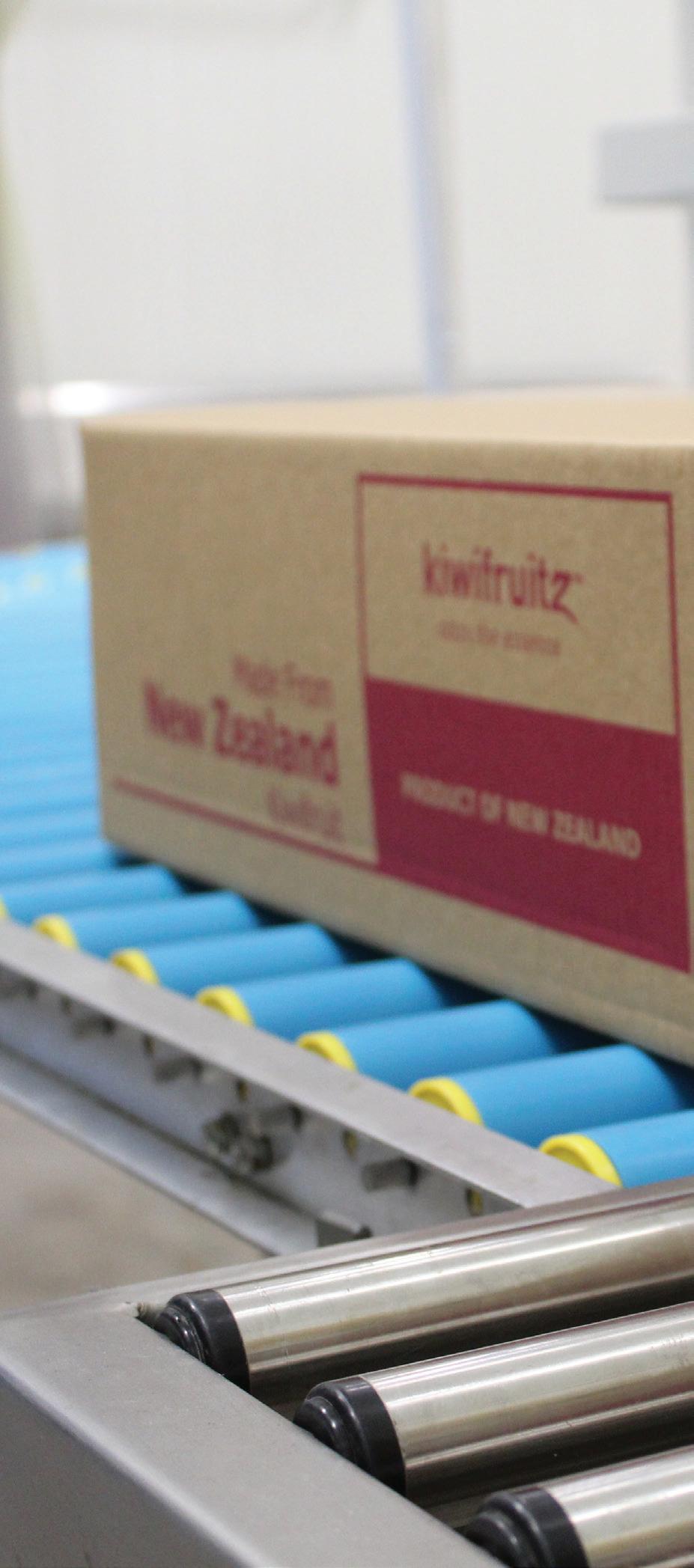
KPC has existed for more than 20 years. Over that time, as many as 20 countries have been happy to do business with this company that celebrates the champion of New Zealand’s horticulture – the kiwifruit. Rich in vitamins, minerals and antioxidants, it has “superfood” status.
The company’s overseas markets span Asia, the Middle East, the USA, Australia and Europe. Asia is the main market with South Korea leading the way, followed by Taiwan, Japan and Thailand.
“Green kiwifruit puree is the most popular internationally. People recognise that green kiwifruit is very high in digestive enzymes, and internationally people eat this with purpose,” said Cortesi.
Overseas, the puree is used predominantly in beverages (mostly non-alcoholic) such as green smoothies, which are big in southern Korea and Japan. In Japan, gold kiwifruit jelly is also a thing.
In Taiwan, green and gold beverage options are both popular. In Dubai, the green puree is purchased as a key ingredient in juices. In the United States, it is used in cocktail syrups.
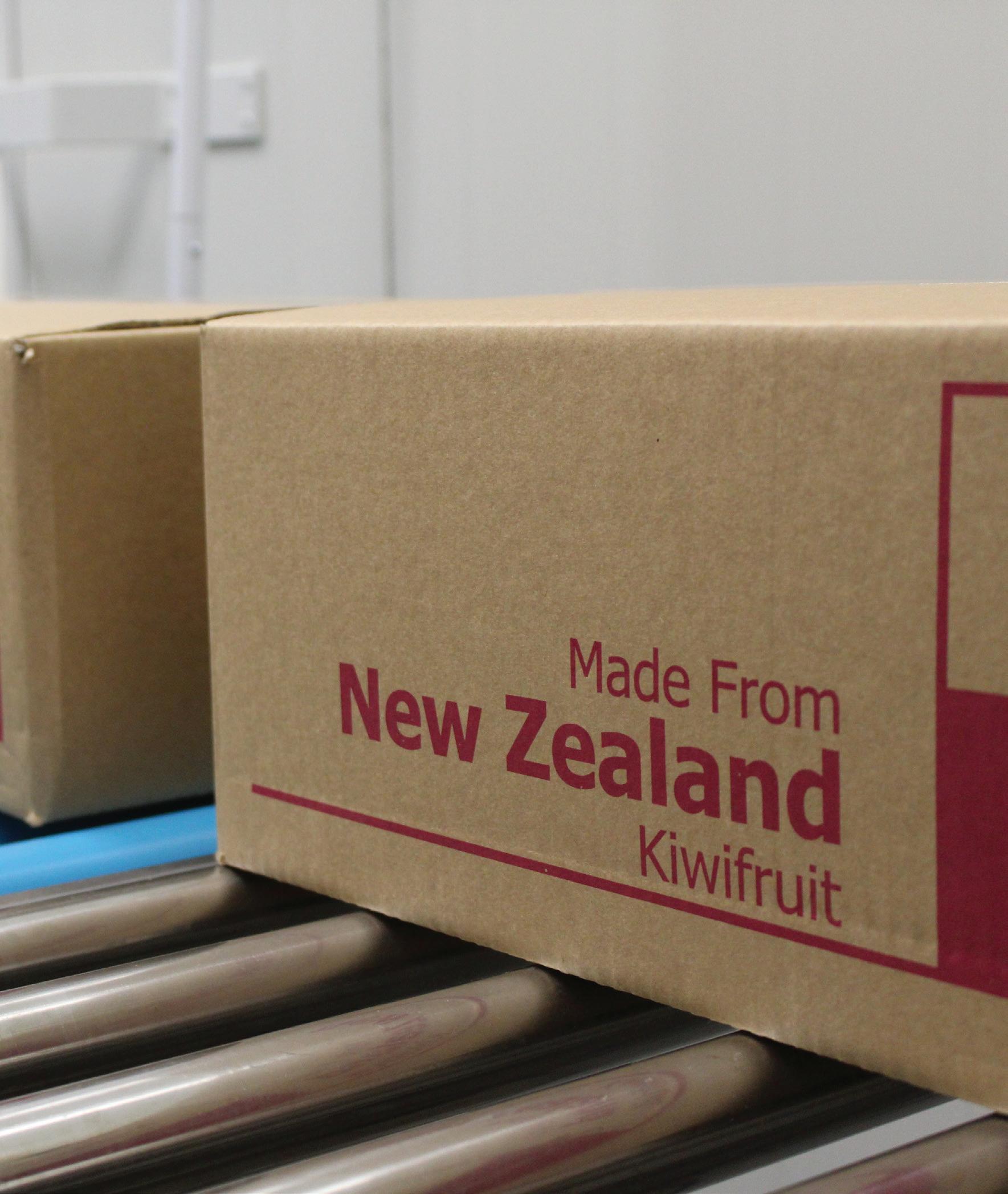
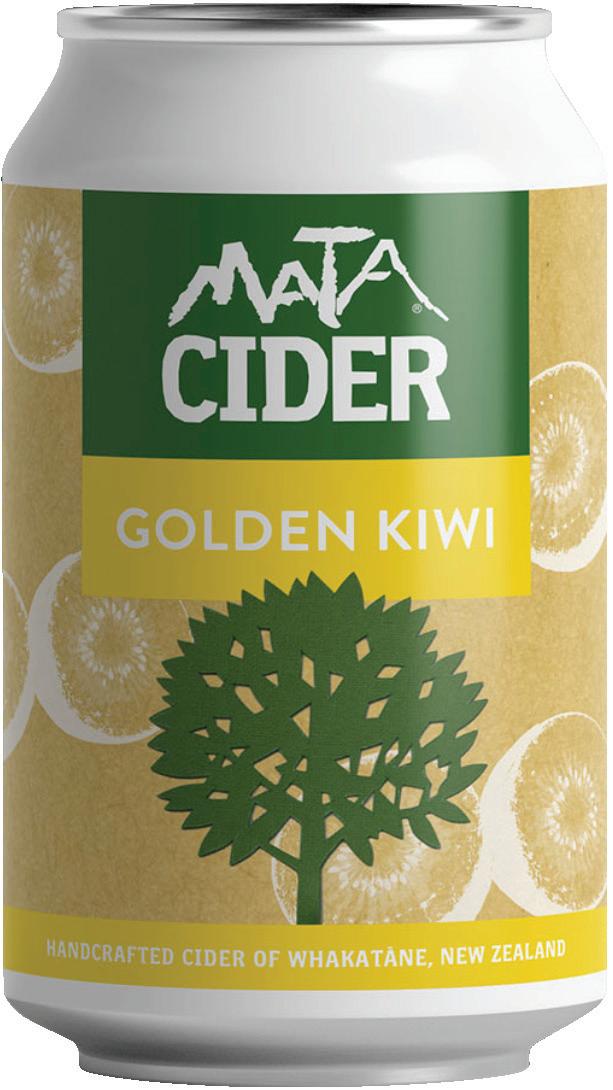
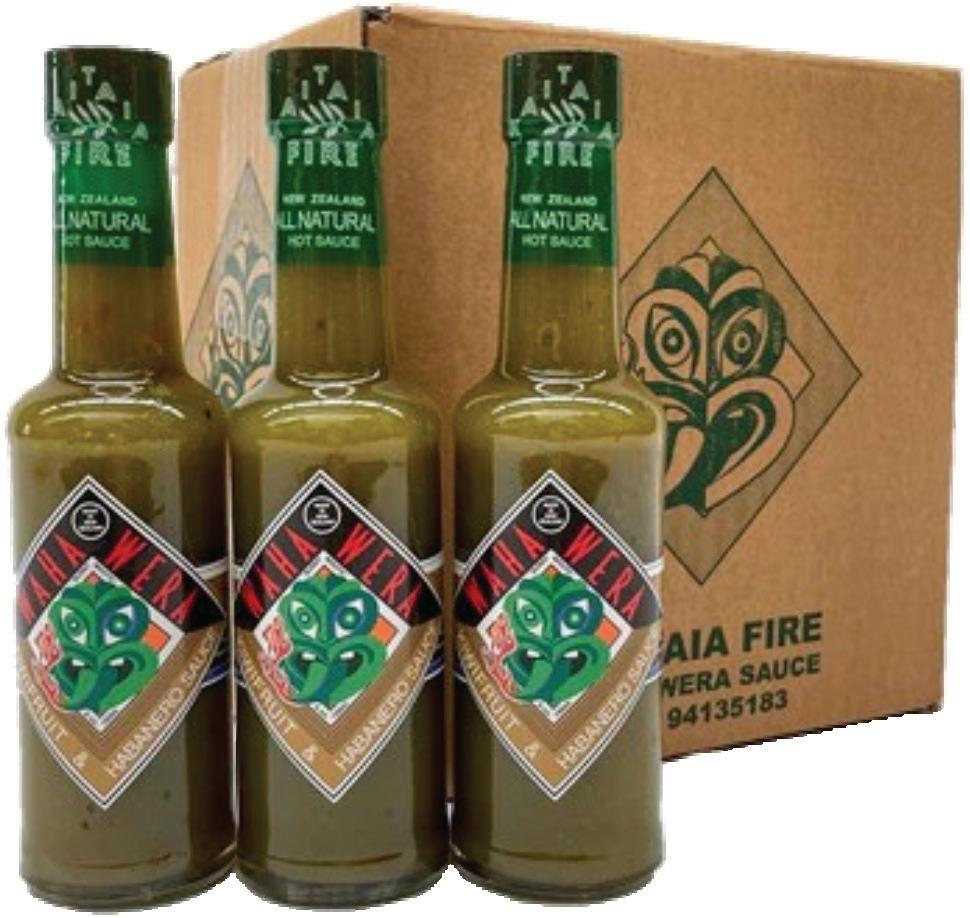
As for the European market, the interest is predominantly in seeds. It is utilised within the cosmetic and nutraceutical sectors because its high omega-3 and six oils offer good hydration for cosmetic products, Christina explains.
KPC also supplies Costco in both Australia and New Zealand with green kiwifruit puree as a meat tenderiser. It is used to create Bulgogi sauce (a Korean beef marinade) for their beef packs.
Exactly what KPC puree and seeds are used for is far from a finite matter. Thanks to ongoing research and development, there are endless possibilities for innovation and excellence. Cortesi added that the arrival of gold and red kiwifruit to the market in recent years brings with it various opportunities.
“The opportunity for growth with gold and red is still continuing within the food and beverage sector,” said Cortesi, citing the advent of confectionery products as an example.
In Japan, the puree is being added to a company’s confectionery line – a red kiwi gummy is under research and development. Other developments are being noted within promotional products. Barkers, for example, produced a seasonal dessert sauce that was promoted as a perfect pavlova topping.
“Gold and red kiwifruit are both new internationally, and New Zealand has an important role to play in inspiring the world with all the varieties of kiwifruit. KPC has an important role to play within that.”
It may be deemed not too difficult a role in that KPC is loud and proud about being an iconic New Zealand fruit and ingredient supplier of high repute.
Kiwifruit Processing Company 2021 Limited (KPC) is based in Te Puna, Bay of Plenty. Its owners are a Māori collective - Te Whai Ao Group Ltd. The collective has existed since the 1960s when it became an early kiwifruit orchard owner. The company is proud that it now has full supply chain coverage, from land, orchard and packhouse to (with the 2021 acquisition) processing facility.






For too long, the category of protection has been dominated by male-led innovation, shaped by outdated norms and limited by stigma.
Condoms were traditionally designed for male consumers, both in function and marketing, with little regard for how women experience sexual health, safety, or pleasure.
But a cultural shift is underway, with a rise in female-focused sexual wellness brands that are unapologetically focused on comfort, empowerment, and open conversation.
“Cleoh is proud to be part of that movement, giving women more visibility, more choice, and more control,” said Ema Beard, founder of Cleoh.
“Cleoh challenges the idea that protection has to be hidden, awkward, or overtly masculine. Our approach is rooted in discretion, design, and dignity, creating a product that feels as considered as anything in your skincare or beauty routine.”

The brand believes that sexual health should be treated with the same care and style as any other wellness category. By elevating both the language and the packaging, Cleoh has helped shift how condoms are perceived and purchased, especially by women.
Beard said that positioning the brand as one that delivers ‘confidence, comfort and quiet luxury’ was intentional.
“We wanted Cleoh to feel trustworthy and elevated, not flashy or performative.”
‘Confidence' speaks to control and autonomy, ‘comfort' is about both physical quality and emotional ease and ‘quiet luxury’ captures the aesthetic - minimalistic, discreet, and designed to blend seamlessly into a modern lifestyle.
Cleoh stands out in three key ways:

20 minutes with

We see sexual wellness as an essential part of that future, no longer taboo or stigmatised. Cleoh fits into that vision by delivering a product that’s as intentional and stylish as anything else in a modern wellness routine.
its female-led perspective, design-driven approach, and ingredient integrity.
Unlike traditional brands, Cleoh has spoken directly to women, not as an afterthought, but as its core audience. Its condoms are free from parabens, casein, fragrances, and unnecessary chemicals.
Packaging and design were approached with the same care as given to a luxury skincare brand. The goal was to remove the shame and create a product consumers wouldn’t hesitate to leave out on their bedside table.
The brand reached out to renowned FMCG product designer Laura Feavearyear and collaborated with her to bring the vision to life. The soft-touch materials, intentional placement of gloss, and minimalist branding all reflect a feminine vibe, not embarrassment.
Beard added that Cleoh needed to resonate with women who value quality and self-respect in every aspect of their lives, including their sexual health.
“It’s about creating a product women are proud to purchase, carry, and use. That shift in design signals a shift in attitude, and that’s a powerful change.”
According to Beard, the future of wellness is more holistic, inclusive, and valuesled. Consumers, particularly Gen Z and millennial women, have sought brands that align with their values, not just their needs. Transparency, quality, and emotional intelligence matter more than ever.
“We see sexual wellness as an essential part of that future, no longer taboo or stigmatised. Cleoh fits into that vision by delivering a product that’s as intentional
and stylish as anything else in a modern wellness routine.”
Beard also mentioned that the response from men has been incredibly positive. Many find it refreshing, even empowering, to see women taking control of their protection and pleasure.
She said this signalled self-worth, clear boundaries, and mutual respect in a relationship, which is something modern men value.
“We’ve had male customers not only purchase Cleoh themselves, but also engage in the conversation, ask questions, share feedback, and show genuine support. It’s a strong sign that protection designed by women isn’t just welcomed; it’s respected.”
Beard and the team have been working on expanding the range with complementary products that align with our values of safety, women’s health, and elevated design.
The wellness space has become increasingly competitive and rapidly evolving, and the brand is excited to continue innovating in ways that genuinely support and empower its customers.
“Supermarkets remain a key touchpoint in people’s daily lives. In a world where time is limited and convenience matters, being able to access high-quality, thoughtfully considered products during a routine shopping trip is incredibly valuable,” added Beard.
“Businesses and retailers are doing a great job of responding to changing expectations, from cleaner ingredients to more inclusive, design-led brands. We see Cleoh fitting in naturally with this direction. We believe there’s real potential to modernise the category with products that are not only functional, but beautifully made and easy to trust.” n





Rexona, the world’s leading antiperspirant and deodorant brand, unveiled its newest innovation: Whole Body Deodorant, because everybody smells everywhere.

Following its success in the US and the UK, Rexona has brought the whole body deodorant revolution down under.
Available in two formats for men and women, Rexona Whole Body Deodorant has been designed for multiple smell-prone areas; a fuss-free spray for use on the back, chest and feet, plus an innovative cream for controlled application in delicate areas. Both formulas are aluminium-free, dermatologically tested, and designed to be gentle on the skin while delivering up to 72 hours of whole-body odour protection.
The breakthrough launch meets the growing demand for a whole-body deodorant solution that keeps up with busy, on-the-go lifestyles. Designed to prevent and neutralise odour beyond the underarms,

Let’s face it, we don’t just smell under our pits. That’s why we created Rexona Whole Body Deodorant - the first of its kind in Australia. It’s designed to deliver whole body odour protection, from your back to your feet,
Rexona’s new Whole Body category offers all-day protection whether it’s for thighs, backs, feet or boobs.
To support the category launch, the queen of how-tos, Martha Stewart, bares all in her most surprising how-to yet, revealing the secret to smelling fresh everywhere.
“In a place like Australia, where the sun is always shining and life moves fast, staying fresh from morning to night can be quite the challenge,” said Stewart.
“As the queen of how-tos, I loved the idea of showing Australians how to stay fresh with Rexona’s Whole Body Deodorant. It won’t let you down, wherever you smell.”
From back-to-back meetings, errands, or post-gym touch-ups, Rexona Whole Body Deodorant fits seamlessly into daily routines and is a dependable everyday essential.
“Let’s face it, we don’t just smell under our pits. That’s why we created Rexona Whole Body Deodorant - the first of its kind in Australia. It’s designed to deliver whole body odour protection, from your back to your feet,” said Anna Tracey, Personal Care Director at Unilever.
“Teaming up with Martha Stewart - an icon in ‘how-to’ - was truly a match made in freshness heaven. Martha has built her legacy on showing people how to care for every corner of their lives, and now she’s surprising Australians with her secret to smelling fresh everywhere: Rexona Whole Body Deodorant.”
Rexona Whole Body Deodorant is available in four scents suitable for both men and women: Fresh Citrus, Ocean Rush, Wild Rose, and Active Fresh. n





This Lipstick Day, Revlon has turned up the heat with the boldest lip collaboration of the year: Revlon x Guy Fieri.
The Boss of Sauce, the Mayor of Flavourtown, Guy Fieri, and Revlon have collaborated on a limited-edition Glass Shine Balm in a new shade, inspired by his signature BBQ sauce and designed to deliver juicy, saucy, glossy lips.
Guy Fieri x Revlon Super Lustrous Glass Shine Balm Lipstick is more than a lip moment; it’s a flavour experience.
With a sheer, glassy finish that drenches

lips in vibrant coral-red heat, the lipstick has been infused with hyaluronic acid for a visibly smoother, plumper appearance.
Universally flattering across a wide range of skin tones, it is also a buttery-soft, nonsticky formula with buildable colour payoff.
Every purchase also includes a limitededition sticker pack curated by Guy Fieri himself. From flames to food trucks, these stickers let customers customise their lip balm, phone case, or makeup bag. n
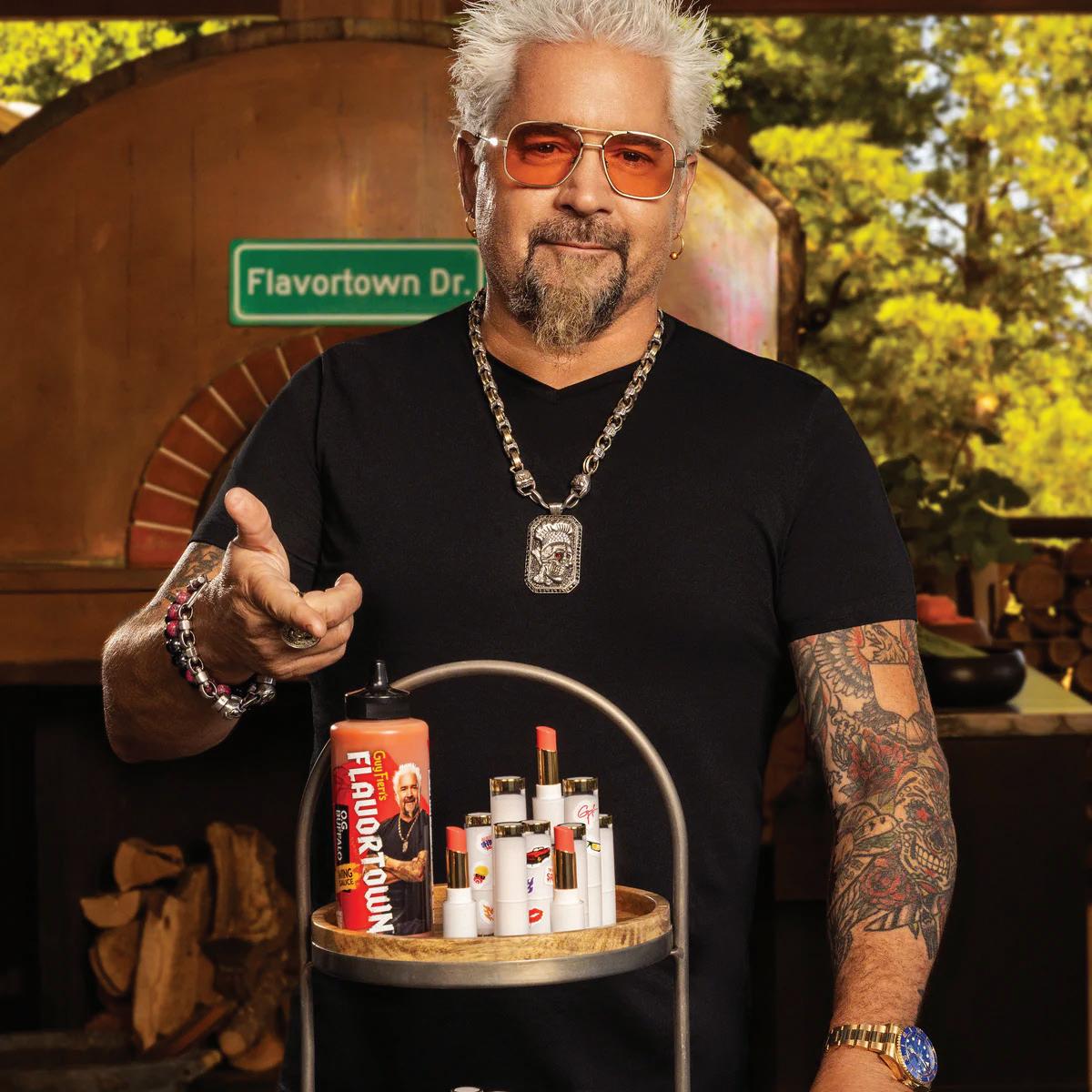

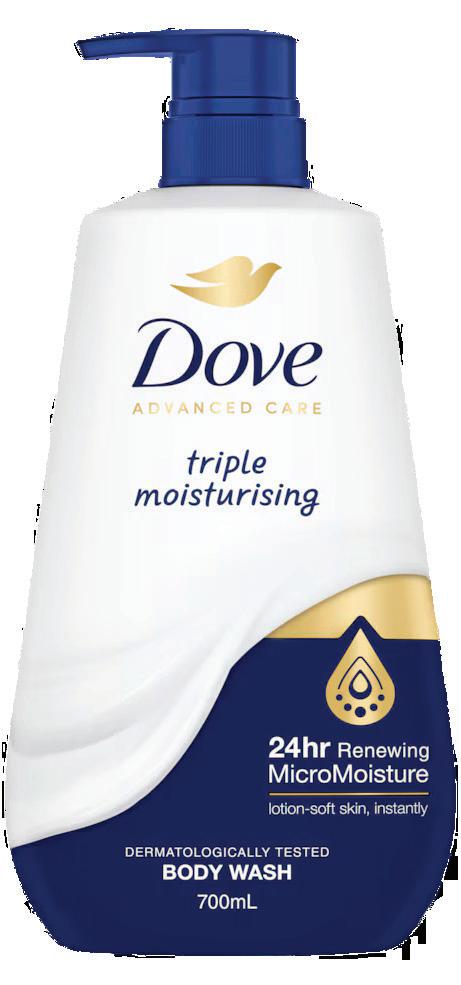
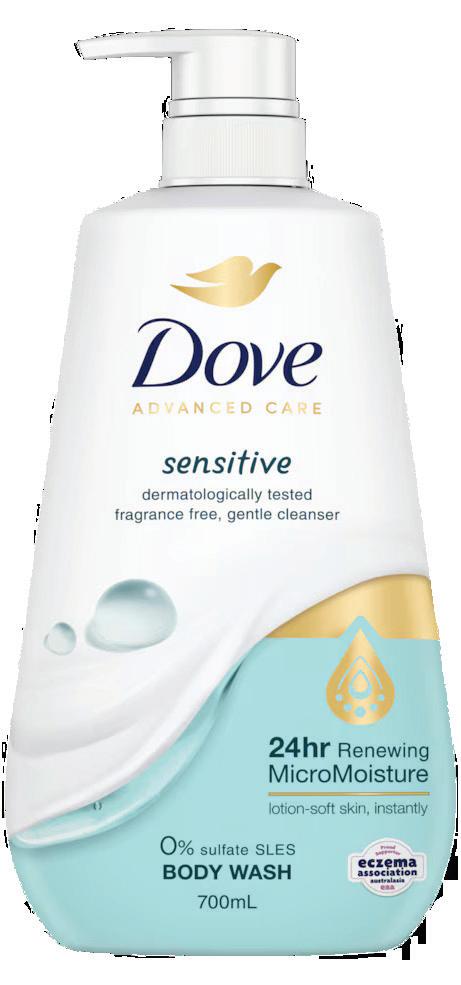

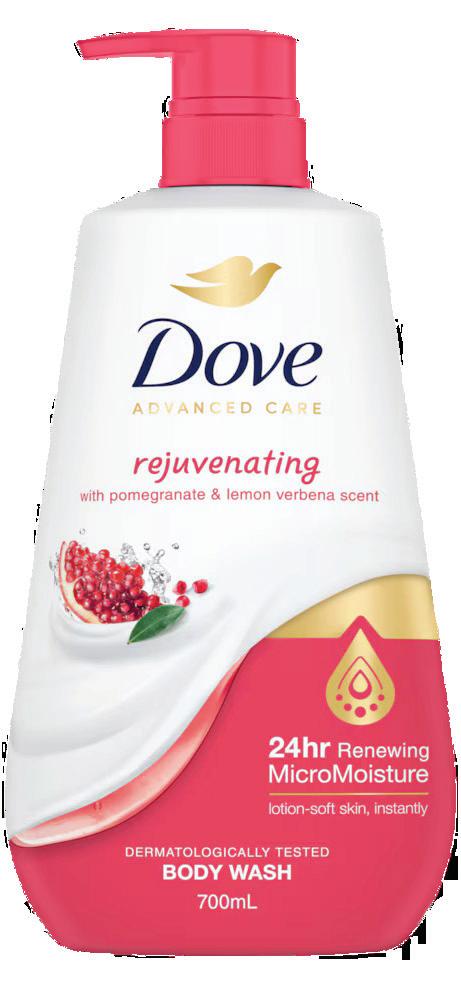
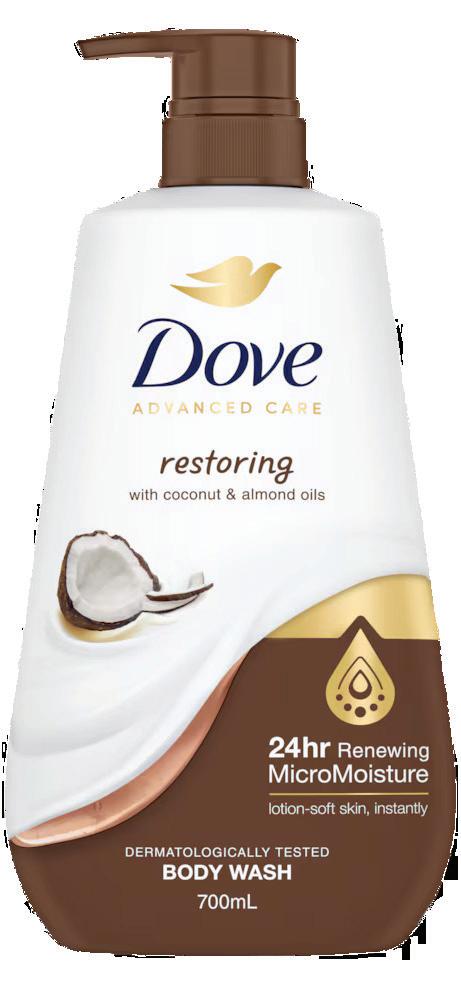
Dove has unveiled a new, tiered portfolio, led by the launch of its best body wash range to date - Dove Advanced Care Body Wash.
This latest innovation and launch of a tiered model will enable the brand to premiumise and help drive category growth through bringing more care and benefits to consumers who have higher-order needs for their skin cleansing products.
The new Dove Advanced Care range was developed following extensive qualitative research, which identified two distinct occasion-based needs within the care segment: ‘Gentle Care Seekers’ and ‘Enhanced Moisturisation Seekers’.
Over nine years in the making, Dove’s new Advanced Care Body Wash range harnesses
the power of Dove’s new MicroMoisture Technology, which provides consumers with 24-hour lotion soft skin and actively works to renew the skin’s moisture from within.
The body wash works in conjunction with the skin’s natural renewal processes to replenish the skin’s moisture over time, rather than just providing a temporary boost of hydration.
Dove’s Advanced Care Body Wash range also continues to contain Dove’s Directly Esterified Fatty Isethionate (DEFI[e]) technology, delivering a gentle yet thorough cleanse, whilst being as mild to the skin as water.
“This launch will completely transform our Dove Body Wash portfolio, meaning the market-leading brand is only going to get better. Dove Advanced Care is backed by nearly a decade of work from our research and development team, with the MicroMoisture Technology providing rich nourishment for 24 hours,” said Charlotte Alexander, Dove Skin Cleansing Brand Manager at Unilever.
“This premium innovation will give shoppers more choice in store, whilst consumers will still be able to get our renowned gentle care through the Classic Care range, which has been given a fresh look and feel, and an updated formula.” n







The way that men interact with the grooming industry has changed. Although the men’s grooming products market is still dominated by functional personal care products, such as shaving preparations and deodorants, Mintel’s GNPD data revealed that within the past three years, there has been a 14.7 percent increase in men’s skincare product launches, and a 12.3 percent increase in hair treatments and colourants for men.
These kinds of products do not fall into a “traditional” men’s grooming routine, and have shown that men are now placing a greater emphasis on image and appearance. In turn, this has fueled innovation and product development in the men’s grooming industry.
Gender-neutral, or “just for men”?
Looking at products explicitly marketed for men only tells half the story. In the past three years, Mintel has also seen an 8.4 percent increase in skincare products marketed as gender-neutral, which again showed how men have become more open to a wider range of products, and not just interested in products marketed specifically for them.
However, a rise in these types of products is not necessarily a wholly positive development for the men’s grooming industry. Unisex innovation could drive the perception that all
grooming products designed for women give the same results for men, and this is not always the case. This, in turn, could cause men to opt for female-targeted products, at the detriment of the men’s grooming industry.
Some differences go beyond constructed gender norms. In certain areas, men do have different needs from women when it comes to grooming. For example, men tend to have a tougher skin texture so they may require and benefit from products developed exclusively for them.
To prevent men from using the wrong products or dropping out of the men’s grooming category altogether, brands can introduce an educational element to their marketing, both ahead of and at the point of purchase.
As previously mentioned, old-fashioned gender stereotypes are fading, but they have not yet entirely disappeared. While more men are willing to use genderless grooming
Continued on pg. 56




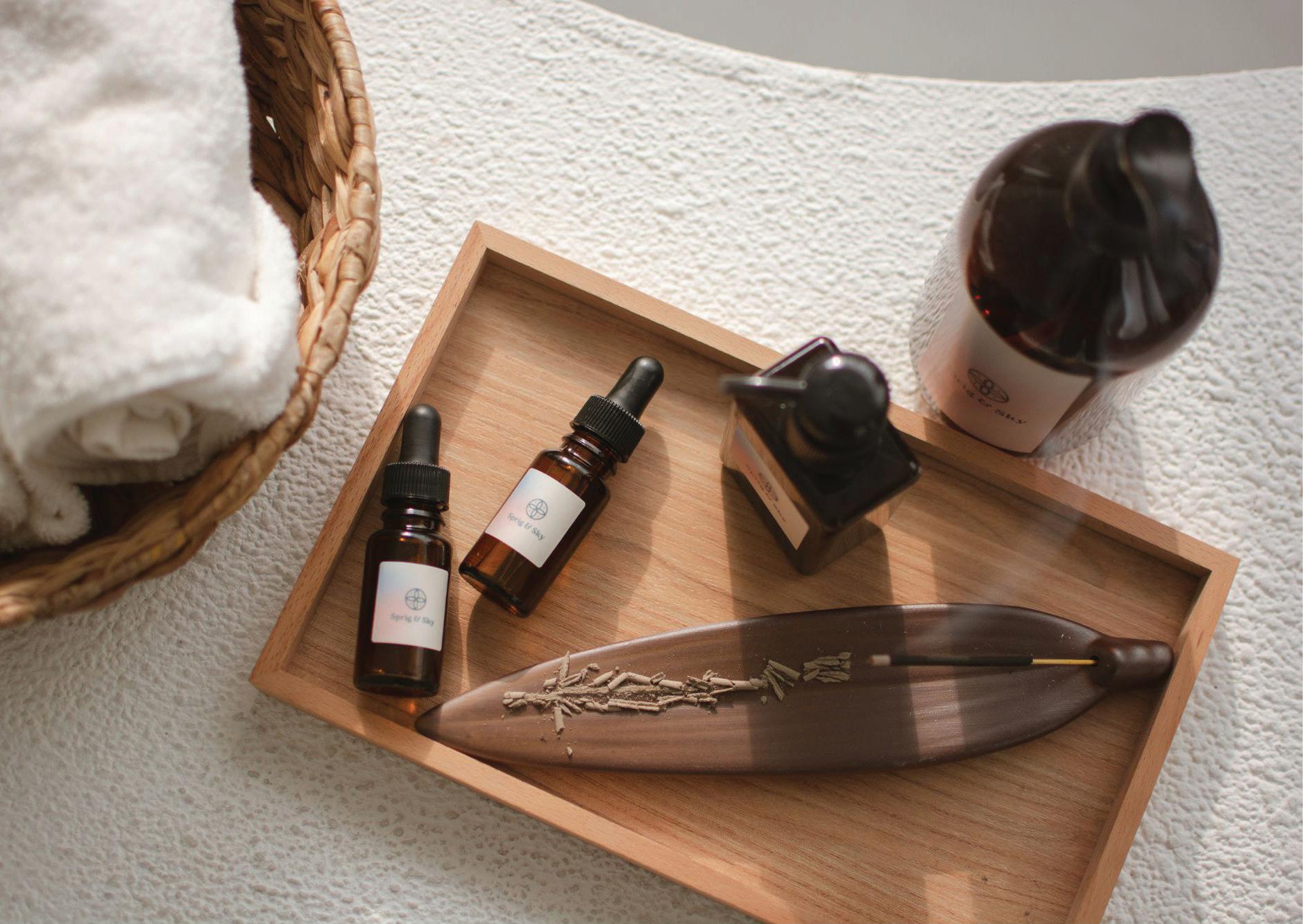
Continued from pg. 55
products, Mintel’s statistics gathered from German, US and UK consumers reveal that men still prefer to use products designed specifically for them.
On the other hand, in China, men who are long-time users of facial skincare products are more receptive to using genderneutral products.
There is no easy answer to the question of gender neutrality in the grooming industry. But one thing is for sure: consumers’ interests have evolved from practicality into personal care.
Over two-thirds of US men now use personal care products for more than just basic hygiene needs, and almost half of US men aged 18-24 are interested in expanding their grooming routines to include facial makeup. In order to stay relevant, brands need to focus on innovating to meet the changing needs of men when it comes to grooming products.
Trends in Men’s Grooming –What do consumers want?
The heightened periods of stress and anxiety during the pandemic have affected consumers. In the US, the majority of men think that stress is likely to have a negative impact on their appearance. Therefore, the men’s grooming industry is perfectly positioned to respond to consumers’ concerns with products developed with selfcare and the soothing power of grooming. Brands have the opportunity to appeal to men who are becoming more invested in their mental well-being. A stronger focus on self-care, along with a more open discussion around mental health, will have more men seeking brands that can offer a momentary escape.
Brands are also taking inspiration from aromatherapy to provide self-care through scent. Traditionally, many male-specific products have focused on fragrance to
drive men to purchase. But now, brands are using scent for reasons beyond providing self-confidence.
As men expand their grooming routines, they realise there's no “one size fits all” approach to skincare, and they want more personalisation, particularly around age and race. Almost a quarter of UK male consumers say they are encouraged to purchase a personal care product if the brand has an inclusive product range.
As populations around the world become more diverse, it will become even more imperative for brands to create affordable products that meet the needs of a diverse and multicultural consumer base.
As men’s interest in skincare grows, so does their desire to see themselves represented in BPC advertising. Over half of UK men believe that advertising for facial skincare focuses too much on women.

3. Clean and Eco-beauty
Sustainability is growing in importance when targeting younger men. Over two-thirds of 16-24-yearold men in the UK have adopted what would be considered a more eco-friendly grooming routine since the start of the COVID-19 pandemic. This presents an opportunity for brands to appeal to men adopting sustainable personal care routines.
Notable eco innovations in the men’s grooming industry extend the focus beyond packaging and plastic waste to refillable products and solid/waterless formats.
In many ways, the men’s grooming industry has begun to mirror what has been happening in the women’s BPC sector, with clean beauty becoming a significant trend in the men’s facial care market.
Mintel’s GNPD data shows almost a 50 percent increase in men’s grooming products launched with cleanrelated claims (e.g. eco-ethical, vegan, free-from) in the five years to 2022. This strongly suggests that the clean beauty trend is here to stay and could shape the future of the men’s grooming industry.
Old-fashioned gender stereotypes have begun fading, and men are increasingly looking for grooming products that go beyond function and help them to express themselves. n





















In recent years, there has been a shift in how men think about skincare, particularly in younger generations.
Looking after the skin has become more normalised, and with more men actively searching for products that support their skin and lifestyle, the men’s health, beauty and wellness category has grown rapidly.
Sarah and Richard Inglis, founders of Flint Skincare, found that the quality and thought that traditionally went into the men’s market had been poor.
“Little consideration has been given to the preferences and needs of men, along with products that have proven active ingredients at clinically tested levels to support skin,” they said.
“We wanted to bridge this gap, bringing thoughtfully designed products that suit those preferences and needs, rather than being an afterthought. Men also don’t want a complicated routine, so keeping it simple was key.”
They added that very few men’s brands on the market were relatable and engaging, and their research found that there was a need for more natural products.
One of the biggest misconceptions they found was that men were not interested or that they needed ultra-basic “one size fits all” solutions. That assumption underestimated the interest men have in looking after their
skin, or the skin challenges they might face.
While some men don’t think much about it and need simple solutions, others are getting more clued up, researching products, ingredients, and appreciating natural solutions that perform well, and have good design.
Another misconception was that men wouldn’t spend in this category, but in fact, they can be loyal to a grooming brand once they find something they like and trust.
“I think there is a tremendous amount of growth, but it can be a challenging market to crack. Men are becoming increasingly interested in skincare and cosmetics, recognising that their skin reflects broader health, sleep, stress, and hydration. We want to help give men the tools to feel good in their skin,” said Sarah Inglis.
For Flint Skincare, the product research was all done before launch, with testers giving feedback along the way. The brand was fortunate to partner with an exceptional manufacturer who made the product design process simple and listened to what they were after.
Following the launch, they also received feedback on the products, particularly the
Continued on pg. 61

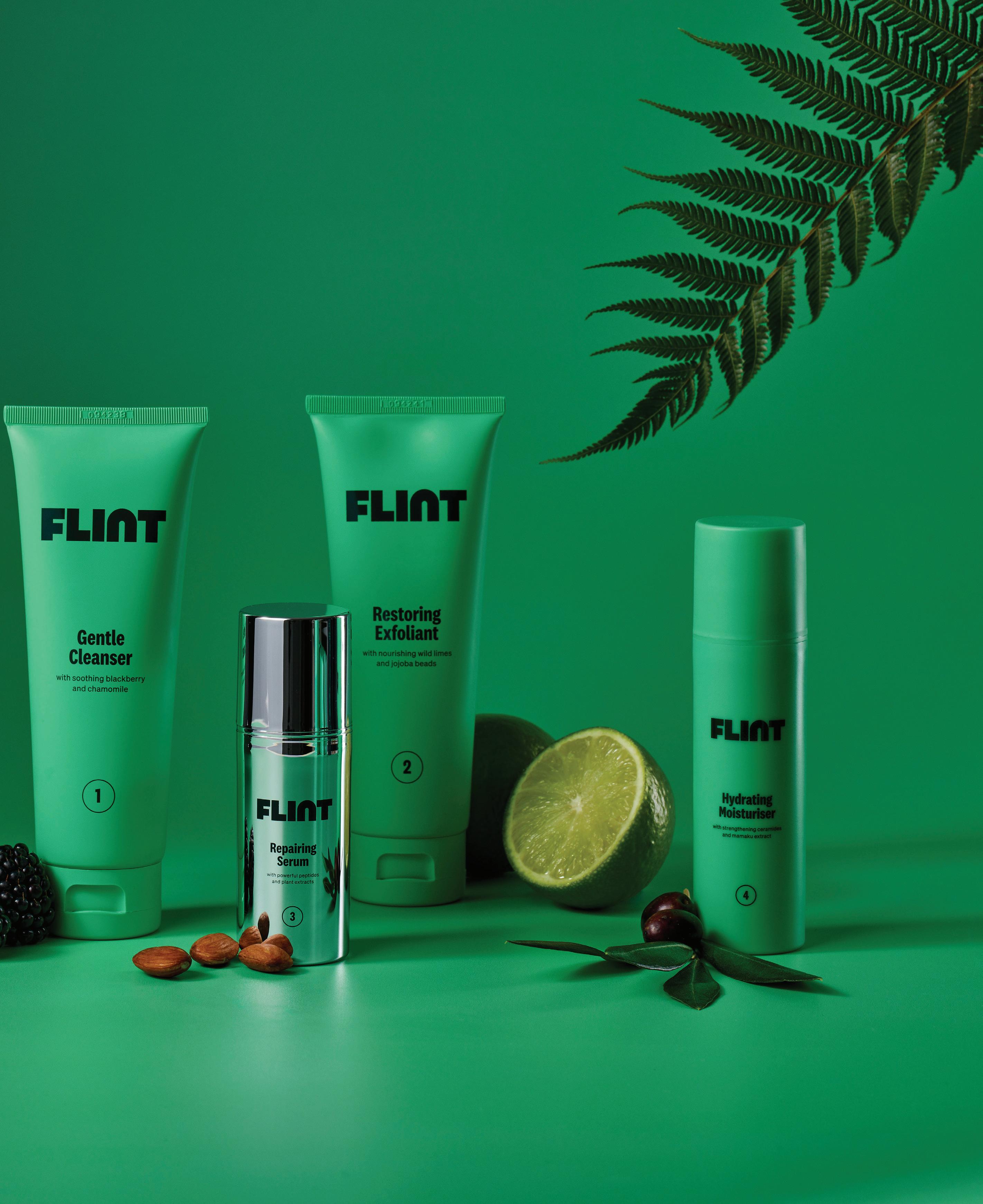




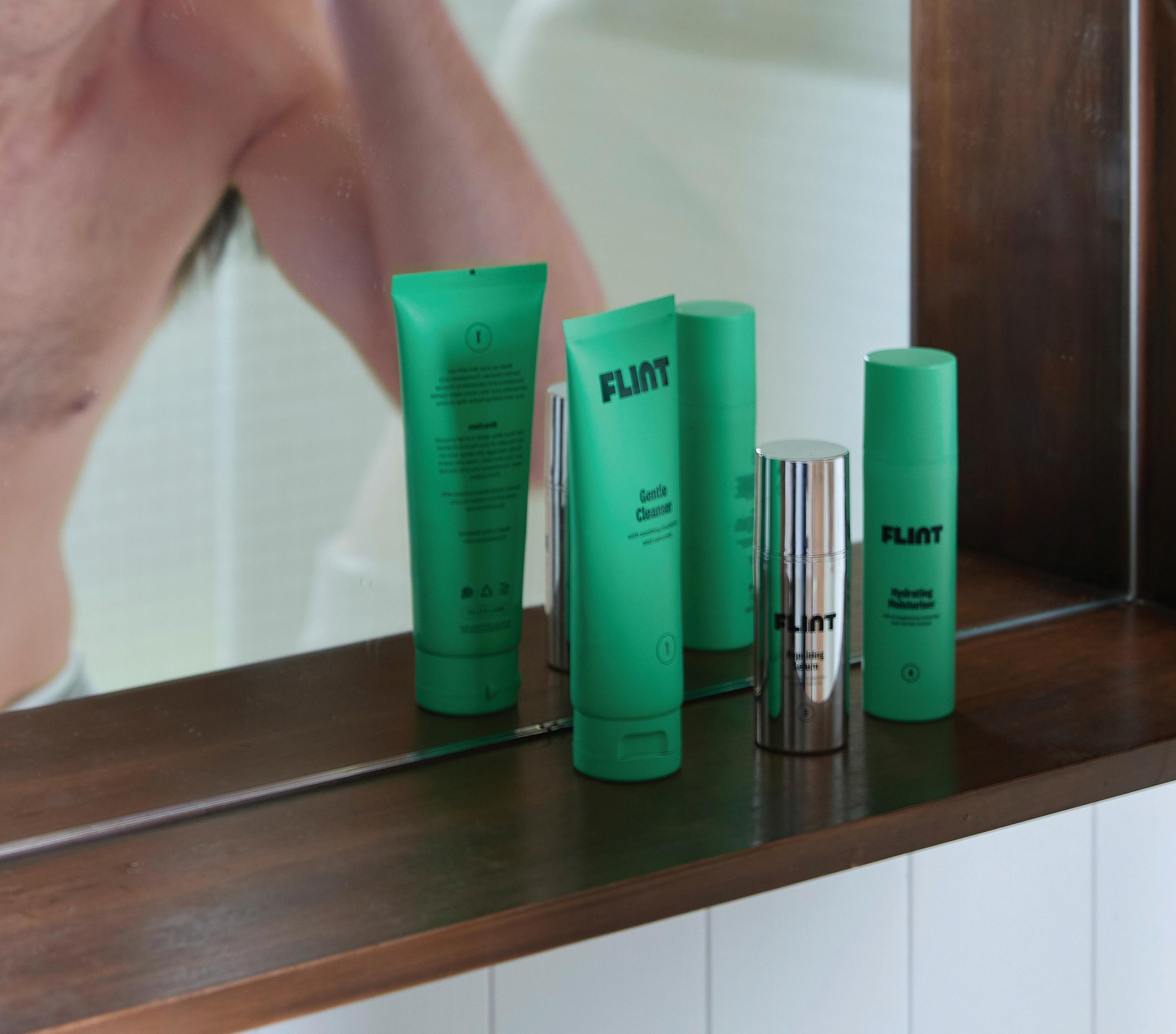
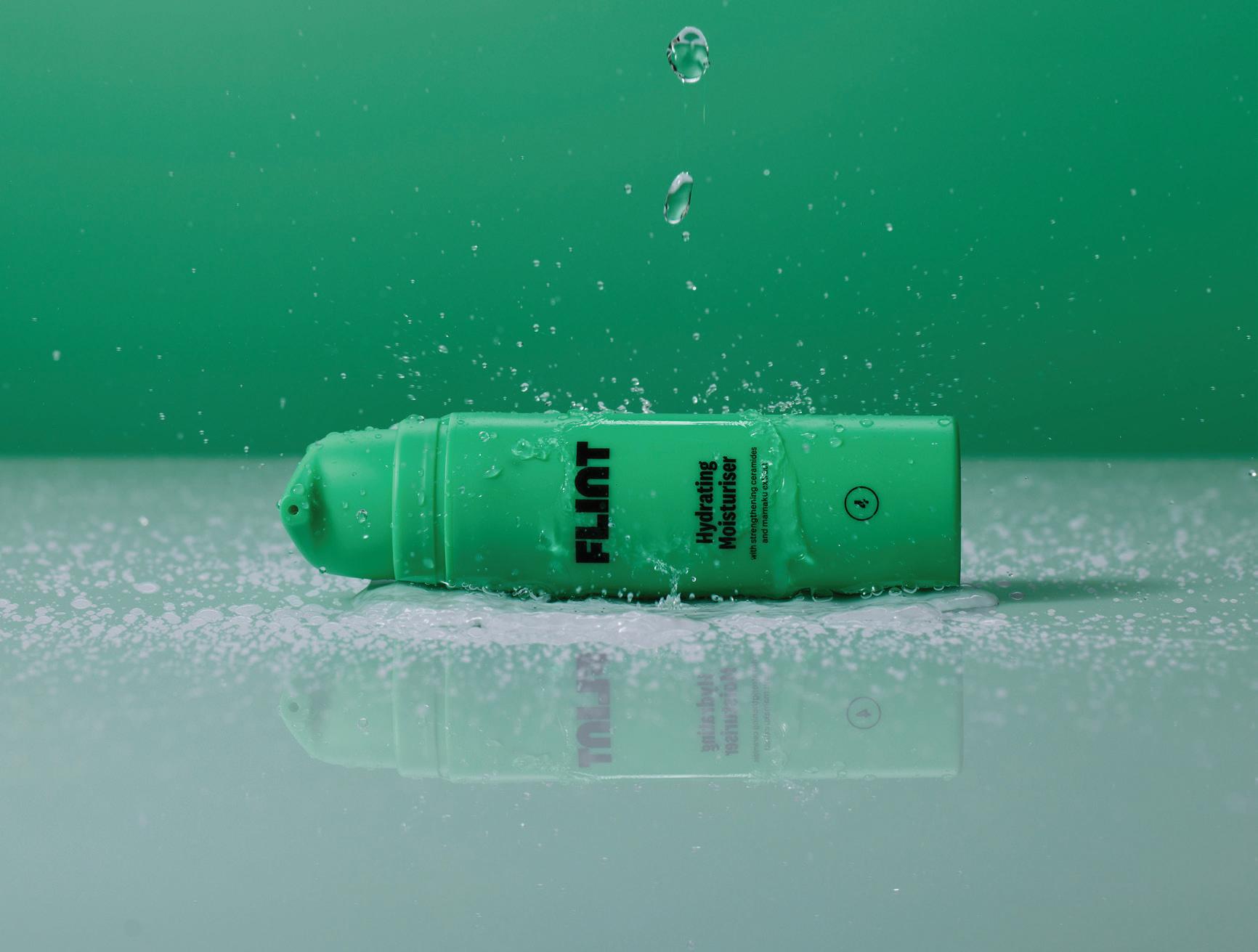


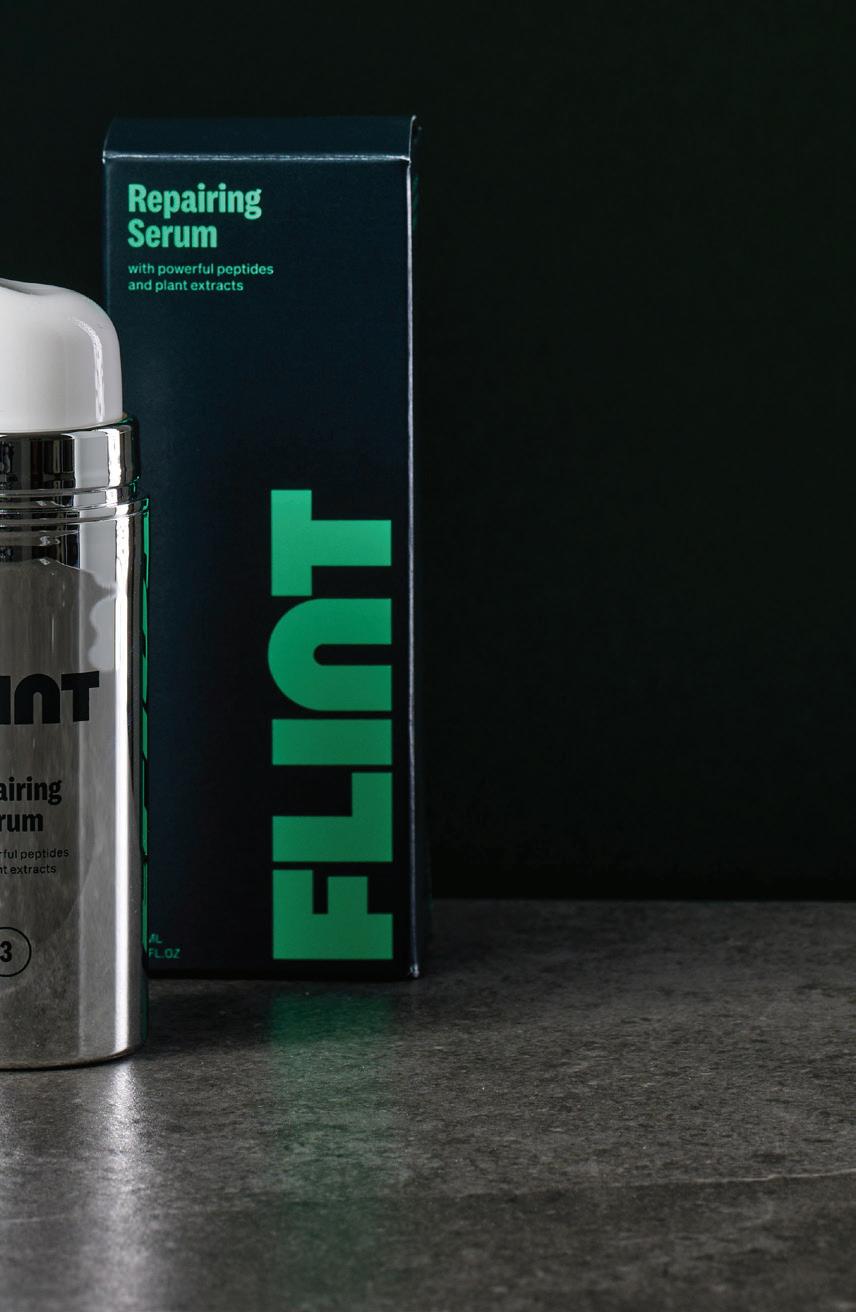
Men are a lot more brand loyal when it comes to grooming and skincare; if they find something they like and it works, they will stick with it. Simple and effective seems to drive a lot of decisions.
Continued from pg. 58
cleanser and moisturiser.
“Reviews are crucial for online businesses, and we strive to highlight them as much as possible, even in our early days.”
The brand found it interesting to receive a lot of feedback on the numbering system.
“I was worried that it would feel a little patronising, but it’s been a huge feedback point. Guys getting into it need obvious, simple instructions, and what feels like second nature to many females feels quite overwhelming to a lot of guys,” said Richard Inglis.
“Simple questions like 'how many pumps do I use?', 'how do I use this cleanser?', or 'how do I put it on my face?' have really reinforced that simple is key.”
Given the cultural shift and skincare being less of an afterthought for men, the duo expects that the men’s market will continue to grow.
“As a subset of grooming, men’s skincare is predicted to grow at rates that outpace women’s (albeit it is a smaller market). While traditionally up to 75 percent of men’s products are purchased by, or influenced by, a female, we are seeing more active engagement and purchasing directly from guys.”
Internationally, they observed growth in men’s cosmetics and a shift in norms starting to evolve in Western markets, with
younger men being the early adopters. This was another example of how cultural shifts are impacting the market.
“Men are a lot more brand loyal when it comes to grooming and skincare; if they find something they like and it works, they will stick with it. Simple and effective seems to drive a lot of decisions.”
The brand has also observed differences in how men shop for skincare in grocery stores versus pharmacies or online.
In supermarkets, men tend to shop more reactively. They might be grabbing something they've run out of or something that catches their eye, while with online purchasing, there is more thought going into a purchase.
Shoppers might visit the site several times before making a purchase, having compared products and reviewed social media pages. Inglis added that while Flint’s packaging is simple and direct, its digital presence leans more into education and product information.
Reviews have also been critical in such a market where personal experience matters, with research showing that 95 percent of online buyers will read online reviews before purchasing, along with peer feedback.
“Men’s skincare is no longer a side category; it’s becoming its own conversation. We’re proud to be part of that shift. We’re here to help men build habits, not just buy products.” n




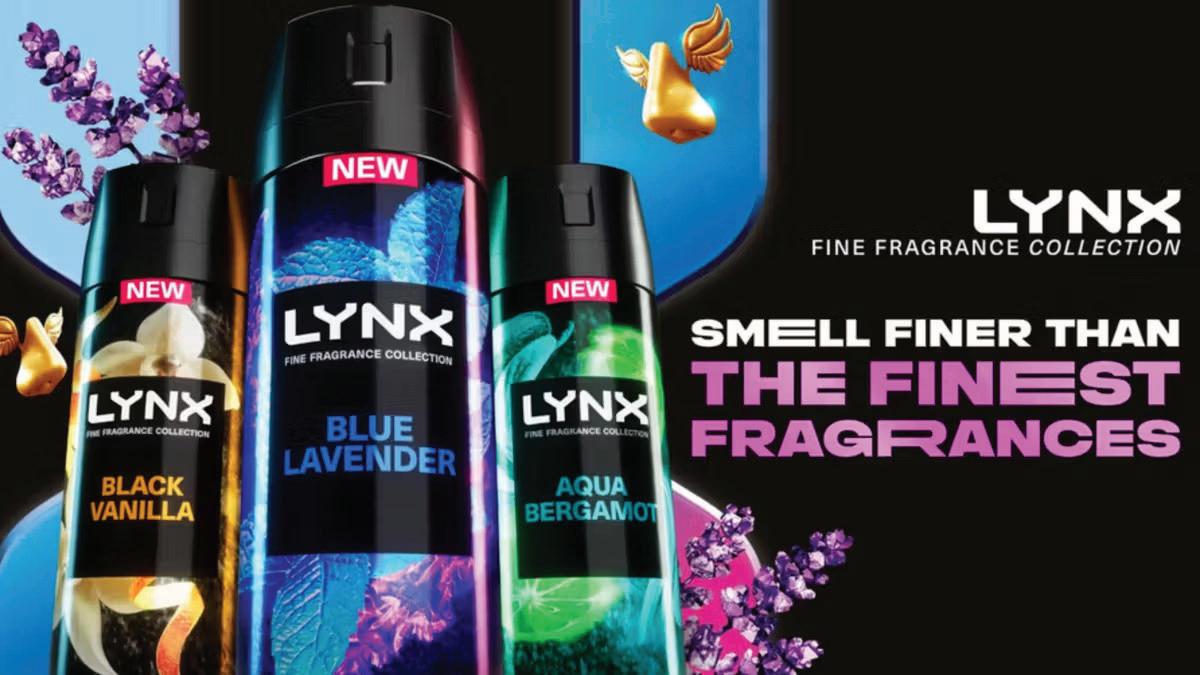
Lynx, the UK’s leading male toiletries brand, has redefined the male grooming landscape with its Fine Fragrance Collection, offering luxury scents in a premium body spray format.
The bold innovation marked the brand’s most significant launch in a decade and represents a strategic leap in making premium fragrance accessible to Gen Z.
With 74 percent of young men stating there were no affordable options for premium scents, and nearly half buying ‘dupes’, Lynx saw an opportunity: to democratise fine fragrance.
Lynx has been giving their shoppers confidence through fragrance since 1983. Now, Lynx Fine Fragrance is an extension to the Lynx range, offering a premium fragrance intended to rival high-end brands. To deliver this new superior range,
Lynx collaborated with world-renowned perfumers from Givaudan and Firmenich and enlisted the expertise of legendary fragrance consultant Ann Gottlieb.
The result was a suite of sophisticated scents, Black Vanilla, Blue Lavender, Aqua Bergamot, Emerald Sage, and Copper Santal, crafted with 60 percent more investment than the brand’s average fragrance development.
The innovation extended beyond scent, also delivering 72-hour odour protection. This standout performance, paired with sleek packaging, helped Lynx challenge outdated perceptions of body sprays and position themselves as a premium player in the fragrance space.
Execution was equally bold. Lynx invested GBP 15 million in a multi-channel campaign, headlined by a high-energy TV ad starring rap artist Lil Baby.
Knowing Gen Z loves to be early adopters, Lynx launched with a strong social-first strategy.
Influencer content created exclusivity, culminating in a Southbank takeover in London with a scented billboard and a mystery reveal that stated ‘74 percent of
guys prefer new Lynx Black Vanilla to Tom Ford Tobacco Vanille’.
In-store, Lynx revolutionised the shopping experience with ‘Lift & Smell’ tester trays across 2,000 Tesco, Sainsbury’s, and Boots stores. This GBP one million investment brought theatre to the personal care aisles and drove trial - 52 percent of teen boys who saw the displays tried the scents.
Lynx Fine Fragrance Collection hasn’t just elevated Lynx’s brand perception –it’s redefined what body spray can be. It’s a testament to Lynx’s commitment to innovation, inclusivity, and category leadership.
This launch builds on Lynx’s strategic transformation of recent years, enabling it to resonate with a new generation of shoppers.
As male grooming habits evolve and selfcare becomes increasingly essential, Lynx has adopted innovative fragrance strategies and bold marketing approaches to drive growth.
The pinnacle of this innovation came with the launch of Fine Fragrance, now expanded with four new scents and two Lower Body Sprays, proving Lynx isn’t just keeping up; it’s leading the way. n
One of the most common frustrations I hear from business owners and CEOs is this: “Why don’t people just do what they say they’ll do?”
The answer often lies in how accountability is modelled, and more importantly, where it starts. In small and medium-sized businesses, where teams are tight-knit and roles often overlap, accountability isn’t just a system, it’s a culture. And like any culture, it’s shaped by the behaviour of those at the top.
WHY ACCOUNTABILITY SLIPS
Accountability issues don’t usually come from laziness. Research from Partners in Leadership shows 82 percent of employees feel they have “little to no ability” to hold others accountable. The barriers? Fear of conflict, unclear expectations, and leaders who don’t follow through.
When business owners or senior managers don’t walk the talk, miss deadlines, shift the goalposts, or avoid tough conversations, it creates a ripple effect. People stop owning their actions, assuming “if they’re not following up, it must not matter.”
START WITH YOURSELF
Accountability is contagious. If you want it in your team, first take a hard look at how you show up:
• Do you keep your promises? Small things matter, if you said you'd review a proposal by Friday, do it.
• Are you clear and consistent? Teams can’t hit a moving target. Set clear goals, timelines, and responsibilities.
• Do you have the courage to call it when it’s off track? Silence sends a message that underperformance is okay.
• Set expectations out loud. Clarity is kind. Be explicit about who’s doing what, by when, and why it matters, and CHECK UNDERSTANDING. So many people I coach say ‘We I think they understood my expectations’. Get them to repeat them back to you, then you know for sure.
• Make follow-up part of the rhythm. Accountability isn’t micromanaging. It’s asking, “How are we progressing?” and “What do you need to succeed?”
• Praise follow-through. Don’t just react

when things go wrong, reinforce what right looks like.
• Coach don’t rescue. If someone drops the ball, ask, “What got in the way?” and “What will you do differently next time?”
• Have one uncomfortable conversation a week. Most accountability issues linger because we avoid the hard chats. Make it a habit.
A high-accountability culture doesn’t require expensive systems or complicated frameworks. It requires leaders who consistently show up, follow through, and speak up.
As a business owner, your daily actions set the tone. Your team watches how you respond when something’s late, how you admit mistakes, and whether you keep your promises.
Accountability isn’t a stick to beat people with, it’s a gift. It says: What we’re doing matters, and I believe you can do it. If you need support in coaching or are interested in joining a group that will hold you accountable, give me a call.
Gerry Lynch - Vistage Chair | Leadership







Gen Z is emerging as a driving force behind the growing popularity of high-protein foods and beverages. With a focus on health, wellness, and body functionality, this generation is redefining how protein fits into everyday eating habits.


Rather than viewing protein solely through the lens of muscle gain or athletic performance, Gen Z sees it as an essential part of a balanced lifestyle. The influence of social media has played a significant role in shaping these behaviours, with health trends and food choices heavily influenced by what is seen and shared online.
Protein is increasingly associated with more than just satiety or strength. For Gen Z, it aligns with broader goals, including mental clarity, mood regulation, and gut health. This mindset is evident in the types of products gaining traction. Beverages enriched with protein are now tailored not just to replenish after a workout but to serve as all-day functional refreshments.
These drinks often include other beneficial ingredients such as probiotics, collagen, or adaptogens, offering a multilayered wellness appeal.
The popularity of high-protein drinks is also altering how consumers interact with food and beverage branding. Shakes and smoothies, once confined to gym culture, are now styled for aesthetic appeal and broader consumption.
Brands are responding with protein-forward products, while major beverage companies are also expanding their lines to meet the rising demand for clean-label, high-protein options that support everyday health and wellness goals.
Dairy, once considered a traditional category, is also experiencing renewed interest due to its high natural protein content. Products like kefir, cottage cheese, and ultra-filtered milk are being rediscovered by a younger audience looking for functional benefits. These items are being reintroduced with modern branding and clean formulations that appeal to Gen Z's preference for transparency and quality.
The move toward high-protein eating is not about exclusion or restriction but about nourishment that aligns with both physical and emotional well-being. As Gen Z continues to influence food trends, the demand for products that deliver on both performance and wellness is set to grow. Brands that understand this shift will be best positioned to meet the evolving expectations of this powerful consumer group. n





The market for high-protein foods and beverages has reached a new phase in 2025, moving well beyond sports supplements and niche wellness products. Today, protein is a frontline ingredient in everyday food categories, reshaping how manufacturers develop, position, and differentiate products.
What began as a performancefocused trend has evolved into a widespread consumer expectation. Shoppers now seek protein not only for muscle support, but as part of a broader approach to health, energy, and balance. This has created space for creative, functional formulations across mainstream categories, including bakery, breakfast, beverages, snacks, and even condiments.
The concept of FULLER was the result of a tried and tested formulation that nutritionist Dane Fuller advised his clients to have for breakfast. It kept them so full that they complained they were eating too much food even while losing weight.
“Protein works to slow down the digestion
of the entire meal. The casein protein used in FULLER does this particularly well and is referred to as the 'slow protein', whereas whey is much faster to digest,” he said.
Protein has been sought by regular consumers as a way to enhance their performance, much like athletes. This could help them gain muscle, lose weight, age better or feel fuller and more energised.
Based on the feedback Fuller has received from his customers and research on other brands, the number-one priority is taste.
Manufacturers are responding with new protein blends and formats designed to cater to diverse consumer preferences. Plant-based options continue to expand, with ingredients such as lentils, chickpeas, sunflower seeds, and fava beans now
commonly used due to their nutritional and sustainability credentials.
Fuller also mentioned that plant-based proteins can be challenging to hide in a taste profile or blend in without negatively affecting the texture of a product. Although there is a place for both protein sources, the superiority of taste and performance of dairy-based protein has been hard to overlook, especially in protein powders or overnight oats.
These protein sources also support the development of allergen-friendly products, an increasingly important factor as dietary awareness grows.
Having lived with an autoimmune condition, Justine Muollo saw firsthand the lack of genuinely healthy, satisfying snacks on
Manufacturers are responding with new protein blends and formats designed to cater to diverse consumer preferences. Plant-based options continue to expand, with ingredients such as lentils, chickpeas, sunflower seeds, and fava beans now commonly used due to their nutritional and sustainability credentials.
the market, especially ones that tasted good. It was in 2005 that Justine’s Cookies launched its first protein cookie. At the time, most “better for you” options were either packed with sugar and carbs or focused purely on function over flavour.
She started experimenting in her kitchen to create functional versions of her favourite baked goods. That philosophy is still at the heart of the brand: smart snacking that tastes good, makes you feel good, and is good for you.
“Our cookies satisfy hunger, keep you fuller for longer, and ditch the junk that usually makes snacking a problem,” said Georgia Fenwick, Marketing Manager at Justine’s Cookies.
“It comes down to careful formulation and a lot of testing. We use a combination of high-quality New Zealand milk protein, low-carb flours like almond meal, and
natural fibre to create a structure and satiety without the chalky or overly chewy texture you get in some functional snacks.”
Justine’s Cookies’ full range has been gluten-free, ultra-low carb, and made with no added sugar. The brand also offers veganfriendly options in its Keto Crunch range, which are free from dairy and eggs, for more inclusive snacking.
“It’s also got that crunch factor that’s usually missing from lower-carb snacks. We’re constantly innovating to meet demand for clean, functional yet indulgent foods.”
Fenwick added that there has been a shift towards everyday people seeking more from what they eat. Consumers want snacks that fit into everyday life and support their goals, without feeling like a “health food.”
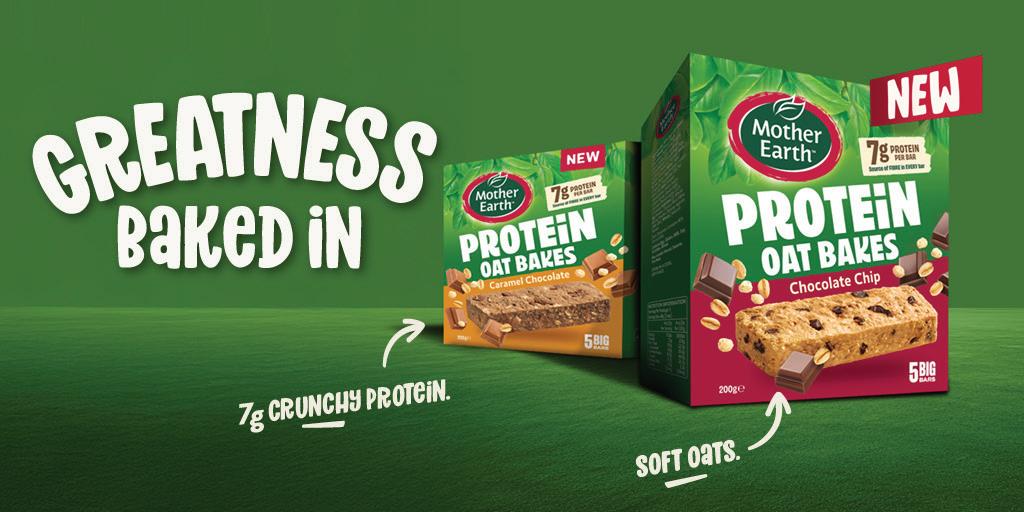
Shoppers want snacks that feel good and do good. Mother Earth Protein Oat Bakes deliver just that. With 7g of protein and a soft-baked, nut-free format, they’re a standout in the bar aisle. No artificial colours or flavours, just real ingredients that fuel everyday moments; from the desk to the gym and everywhere in between. The Chocolate Chip and Caramel Chocolate flavours hit that sweet spot between
indulgence and better-for-you snacking. From one of New Zealand’s most trusted brands, Mother Earth, this is everyday greatness shoppers will reach for again and again.
For more information, visit https://www.motherearth.co.nz/ or call Customer Services helpline number 0800 881 966.






Continued from pg. 67
The brand has identified a significant opportunity in introducing functional and protein-rich treats to the mainstream snacking aisle, not as a niche diet product, but as a legitimate alternative to sugary biscuits.
In tandem, formats are diversifying. Consumers are discovering protein through crunchy snack clusters, cereal rings, highprotein pastas, and even alternative dairy spreads. Brands are also refining taste and texture, ensuring that functional foods deliver on enjoyment as much as health benefits. Neutral flavours and smooth finishes are replacing earlier, chalkier prototypes, particularly in beverages and bars.
Gerry’s NPD team utilises market trends, industry experience as well as feedback and reviews to develop a pipeline of products that cater to the high-protein, low-carb, and high-fibre needs of consumers.
The brand recently launched a low-carb pie in three flavours, which has over 25g of protein and 60 percent less carbs than a standard pie, and the response has been outstanding.
“We have been in the baked goods business since 2011, and our team has been in the industry for a long time as well. This took considerable effort to develop a pastry that is low-carb but still gives a great pie experience,” said Gerald Barrett, cofounder of Gerry's.
“With this market experience and
knowledge, we can develop products internally that match our high standards for both taste and texture. There is also a small group of product testers that we work with, who provide key feedback before we launch a product to market.”
The team has sought new ingredients to incorporate into its products, while aiming to minimise the processing of these ingredients before use.
This meant looking for more triedand-tested ingredients, including lupin, which has been used across several Gerry’s products, along with other proteins, such as almond, coconut, and soy flours, as they cater to the low-carb and high-protein demands of customers.
Barrett added that social media has had a
significant impact on consumer awareness of ultra-processed foods, as well as the benefits of a high-protein diet.
As more consumers become exposed to content that helps them understand ingredient quality and what is being put into their bodies, they are inevitably drawn to better-for-you foods as they seek to improve their health through their diet.
“We see snacks as a whole having the biggest growth opportunities. Many snacks deliver very poor nutritional value to consumers, so as awareness grows, they will look to fuel their bodies with snacks that provide more than just a sugar rush. Consumers will always want to snack, but now it's about adding nutritional value with fewer or higher-quality ingredients.”
For producers, this means more than just meeting demand; it also involves anticipating and addressing emerging needs. It’s a chance to develop smarter supply chains, tap into emerging protein economies, and reimagine everyday products through a nutritional lens.
Fuller hoped to see more healthy foods enriched with protein to help people feel fuller, eat less and improve their health outcomes.
At the same time, he added that there will be a rise in the marketing of more
unhealthy foods as 'high in protein'. Many of these will be gimmicks, such as highprotein marshmallows, cakes, and cookies, which may encourage people to eat them as 'healthy options'.
“Adding more protein does not make these foods a healthy option, but I am sure they will be popular options for some.”
In Australia, the prevailing narrative has been that protein is ‘good energy’.
Unlike carbohydrates, it provides long-lasting energy, seemingly without any downsides, which keeps consumers fuller for longer and helps build muscles. Therefore, the protein innovation has extended beyond gym junkies to those trying to prevent themselves from snacking or control their diet.
“Anything that can have protein added seems to have it. But specifically foods that are used for snacking: yoghurt, bars, flavoured milks, chips,” said Becky Mead, managing director of Play Innovation.
“Plus, of course, the increasing use of protein powders for both muscle support and solving hunger. At the moment, adding protein seems to be a bit of a ‘nobrainer’ to consumers.”
Mead provided an example of how ready-to-drink protein water has made a significant impact at the moment. She said
it will be interesting to see if any products can break through and deliver on both taste and value for money in the eyes of consumers.
Looking ahead, Mead expected more development of new sources of protein that deliver on sustainability, such as plant-based alternatives or insects.
At the same time, she said that whilst a protein claim has generally been a winner, if the product can’t deliver on a good experience, shoppers won’t repurchase it.
She added that it was also important to understand perceptions of protein within the category, as added protein in some categories has become more intuitively acceptable than in others (for example, shakes vs. water).
“Understanding the interplay between perceived benefit, taste, and value for money is vital to understanding the potential success on the shelf.”
As the market becomes increasingly competitive, differentiation will stem from provenance, formulation integrity, and alignment with long-term consumer health objectives.
Protein is no longer a specialist ingredient. In 2025, it is a driver of mainstream food innovation, reshaping what’s on offer and raising expectations across the board. n
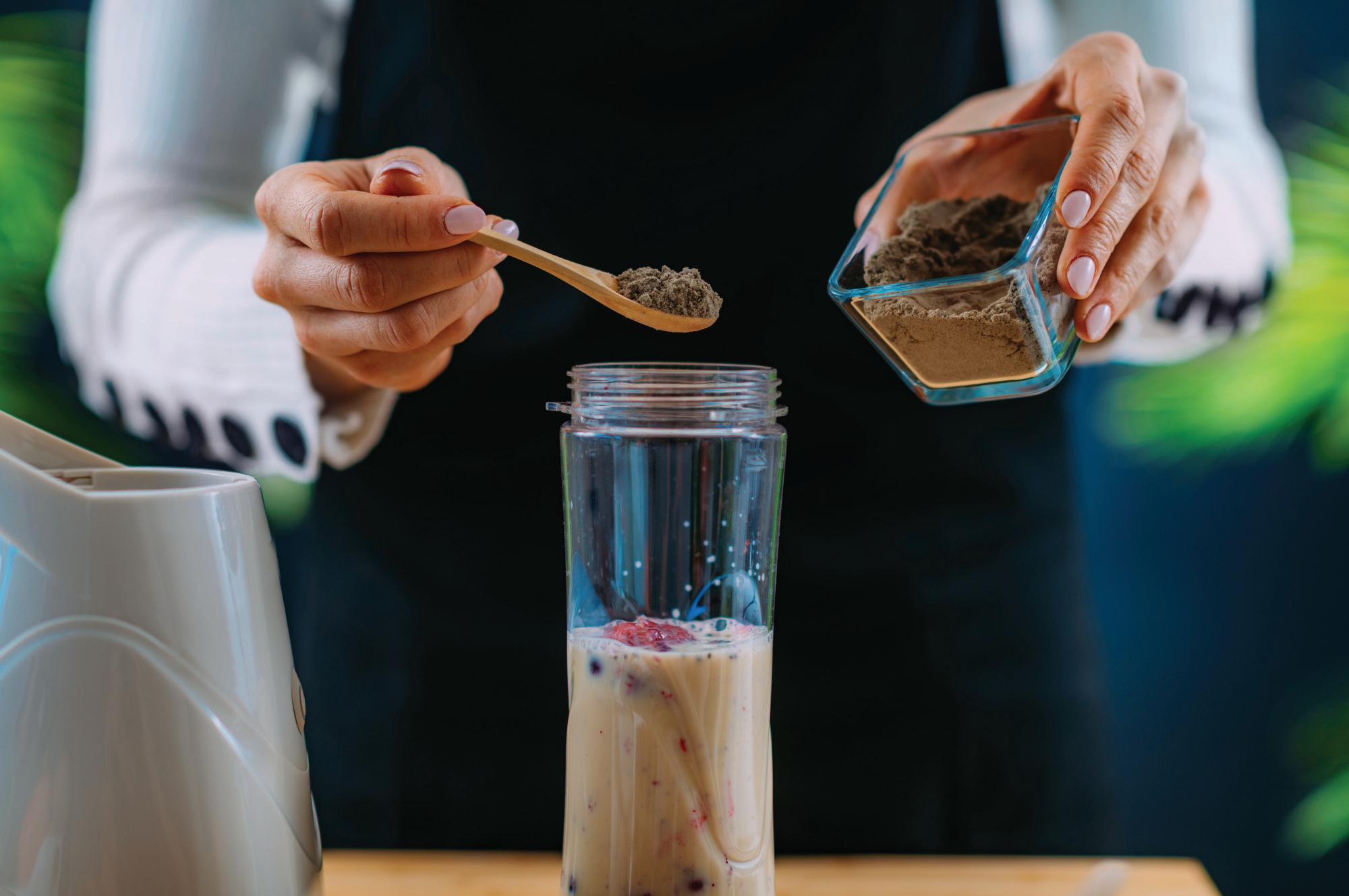





Two Islands never set out to compete with traditional gym-focused protein brands. Instead, the brand positioned it as a lifestyle solution for everyday people who simply want to incorporate more high-quality protein into their diet.
All of its protein powders contain four ingredients or fewer, with no unnecessary fillers, gums or artificial sweeteners. It’s a clean, minimal formula made with premium European golden pea protein, with a significant focus on taste.
“We know that if it doesn’t taste good, it won’t become a daily habit, so flavour and smoothness have been a top priority from day one. Taste and texture are non-negotiables, especially in the plant-based space where gritty textures and overpowering flavours can be a real barrier,” said Danielle Van Veen, Marketing Manager, Two Islands.
“We taste test every single batch of protein powder before we purchase it, and we’ve rejected entire batches that didn’t meet our standards for smoothness. It's something we will never compromise on, because we know if the texture isn’t right, people simply won’t keep using it.”
Van Veen added that the team has worked hard to strike the right balance. Whether adding a scoop to the morning smoothie, baking with it or shaking it up post-workout, the flavours work beautifully without an artificial or chalky aftertaste.
“We don’t just develop products for consumers, we create them for ourselves. We’re living the same fast-paced, modern lives as our customers, and we understand how taxing that can be on energy levels, mood, sleep and overall wellbeing. That insight is what drives every product we make,” said Julia Matthews, Founder, Two Islands.
The goal has always been to provide simple, effective support that seamlessly integrates into busy lifestyles. With minimal ingredients and a focus on great taste and texture, Two Islands offers flexible options tailored to meet the needs of consumers.
As more people experience food sensitivities, intolerances and chronic health conditions, the brand also believes that no one should be excluded from products that support their well-being. All Two Islands
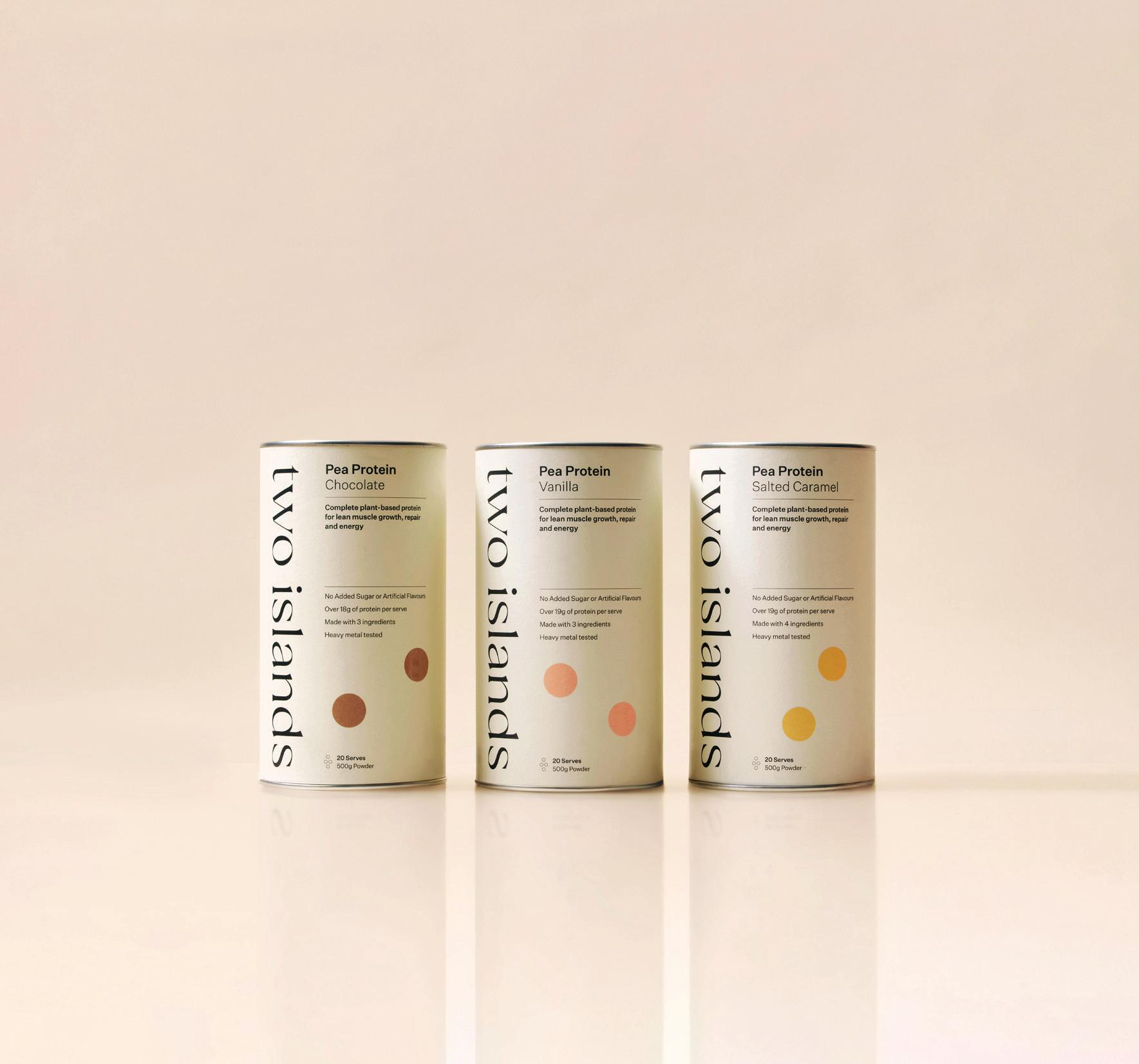
protein powders are free from gluten, dairy, soy and GMOs, making them gentle on the digestive system and accessible to as many people as possible.
Van Veen said that pea protein is naturally free from all major allergens and 100 percent plant-based, making it an ideal choice not only for those with allergies but also for the growing number of vegans and plant-focused consumers seeking clean, ethical nutrition.
“For many, whey just doesn’t sit well, and we hear that time and time again from our customers. As a team, we’ve walked this path ourselves. Many of us are on our own health journeys and understand firsthand the impact food sensitivities can have. That’s why clean-label, allergen-friendly formulas aren’t just a selling point for us, they’re a daily commitment to helping people feel better and take control of their health, without compromise.”
Looking ahead, Matthews added that much of the innovation in plant-based protein will come from adjacent categories, particularly food and beverage, as protein becomes increasingly embedded in everyday choices, such as high-protein snacks, drinks like protein waters or lattes, and more functional formats that go beyond the traditional scoop-and-shake model.
“These options make it easier for people to increase their protein intake without requiring much thought.”
From an ingredient perspective, she said there has been growing interest in fermented and hydrolysed plant proteins for improved absorption and digestibility, which could be exciting from a nutritional standpoint.
However, the challenge lay in whether consumers will perceive enough value in those innovations to justify the higher price point, especially in a category that has become quite commoditised.
There has also been some experimentation with alternative protein sources, such as chickpeas, crickets, and even repurposed materials like sheepskin collagen.
“While it’s fascinating to watch this space evolve, we’re mindful about where we innovate. For us, it’s not about being first, it’s about being relevant, purposeful and creating products that people actually want to use every day.”
Two Islands Pea Protein is suitable for a wide range of people and life stages, from pregnant and breastfeeding mums, to older adults and fussy kids who lean towards beige foods, or anyone active and looking for convenient, functional nutrition without compromising on quality.





With Grocery issues firmly under the media and political microscope, and plenty of regulatory work and engagement on the agenda for our industry, here's an update on the current state of play.

Raewyn Bleakley Chief Executive, New Zealand Food & Grocery Council
Arecent headline in The Post that Minister Nicola Willis had sent a “furious letter” to the supermarkets over guilty pleas to alleged inaccurate pricing and misleading specials that graced Wellington café tables in late June shows the clear political impetus we’re working with. Minister Willis had already issued a formal Request for Information to identify the regulatory and legislative steps necessary to facilitate increased competition at scale, and is commissioning advice on ways in which the grocery sector could be restructured to increase competition.
In early July, the Commerce Commission took its first enforcement action since the Code was introduced in September 2023, issuing a warning for a likely breach of competition law, while the Grocery Supply Code review and the Wholesale Supply Inquiry are two significant pieces of work that will shape our industry's future
structure and direction.
The Grocery Commissioner must complete the first review of the Supply Code in late September this year - a draft report released in June identified problems through the code's implementation period, and mixed feedback from the sector. We all know this is a very complex and interdependent industry, and it's crucial everyone clearly underestands the rules and operate within them. We welcome the guidance the Commission has committed to, as being able to understand and iron out issues without the need for enforcement action is preferable, and will put the sector in a better place.
The Wholesale Supply Inquiry was announced after the Commission's first Annual Grocery Report found some key issues in the wholesale market, including a low number of wholesale sales, and issues with major supermarkets' pricing models that couldn't be solved under the current regulatory set up.
Submissions on the supply code review and wholesale inquiry both close on 18 July, and the New Zealand Food and Grocery Council has been working with members to represent suppliers’ views in this process, while we wait for an update on the Minister’s look at options to increase competition by the end of the year.
It can feel like this work is tying up a lot of resource and energy, but with so much at stake, we need to get these underlying issues right to make progress.
Our new NZFCG Chair Mike Cullerne, agrees the industry needs clarity. "Simply, suppliers are looking for evidence based approach, so we know we're dealing with the reality. Working together to get the facts
on the table is going to be key to coming up with sensible solutions and clarity so we can move forward."
"It can seem like a holding pattern at the moment while things are being worked out, but we're not far away - ultimately it's a complex sector with a lot of moving parts and it takes time to get things right. It's a challenge for everyone in the industry, obviously suppliers, but retailers too."
"I believe it's possible to get clarity on 80/90% of the issues quite quicklysuppliers want black and while whereas it can feel like there's a lot of grey at the moment."
"All these things take time, and takes us away from other issues in the industry, like costs, meeting consumer expectations and sustainability - but when we get through this period, I feel we'll be in good shape."
There will be further consultation steps to come, and NZFGC will support our members – the supplier communitythroughout to help everyone understand what's being proposed and advocate for workable fair outcomes in this process.
The NZFGC appreciates the leadership from the Commission and Minister Willis to bring about fairer trading and healthy, sustainable competition. Quality supplierretailer relationships are at the heart of our industry and their support for greater certainty, fairness, and transparency is very welcome.






We often hear that the food and beverage industry is a people business…and it is… but what’s changing fast is how those people are hired, onboarded, retained and empowered. What was once a back-office admin task - payroll, paper forms and filing cabinets - is now becoming a central engine of business growth.
By switching to an EOS, they consolidated three systems into one, simplifying contracts, automating payroll and saving multiple hours every week. Staff now complete onboarding digitally, employment records are centralised and the team has visibility across roles, locations and compliance - all in real time.

In industries like hospitality, production, and logistics, where shift work, compliance, and high turnover are standard, HR is no longer about keeping up; it's about staying ahead. This transformation is real, and it’s being driven by technology. From compliance to culture, digital platforms are redefining what HR looks like in food and beverage today.
Here are the big shifts reshaping modern workforce management.
Shift 1: One system, one view and a lot less admin
Managing people shouldn’t feel like juggling software logins, but for most businesses, it does. HR often relies on a mix of disconnected tools: one for payroll, another for leave and yet another for onboarding. This is often inefficient, costly and risky.
That’s where an Employment Operating System (EOS) comes in. Like the OS on your phone, an EOS integrates all things HR into a single platform from hiring and onboarding to rosters, payroll and even employee engagement.
Take Behemoth Brewing as an example. When they grew from 8 to 40 staff across brewing, hospitality and HQ teams, their paper-based, patchwork HR setup couldn’t keep up. By switching to an EOS, they consolidated three systems into one, simplifying contracts, automating payroll and saving multiple hours every week.
Staff now complete onboarding digitally, employment records are centralised and the team has visibility across roles, locations and compliance - all in real time.
“We’re brewers, not HR admins - but with teams across hospitality, brewing and the office, people operations got complicated fast,” said Hannah Miller Childs, Co-CEO at Behemoth Brewing.
“Employment Hero’s EOS gave us one simple system that actually keeps up with how fast we move. It’s freed up hours of admin time and made compliance way less
And it’s not just about convenience. When every part of the business talks to the others - from onboarding to offboarding and from visa tracking to leave management - leaders can spot issues faster, act sooner and make smarter decisions across the board.
“Our EOS really does give businesses a competitive advantage and Behemoth is testament to that. In the fast-paced, margin-conscious world of food and beverage, that shift is a game-changer,” said Ben Thompson, Co-founder and CEO of Employment Hero.
Shift 2: From guesswork to built-in compliance
Let’s be honest - keeping up with New Zealand’s shifting regulatory landscape is nobody’s idea of a good time. From Holidays Act reform to changes in visa rules, minimum wage adjustments and more prescriptive grievance processes - staying compliant is a full-time job and most food and beverage businesses don’t have a dedicated HR or legal team to handle it.
That’s where smart systems step up. Tech built with compliance at its core can deliver real-time updates, automated calculations and built-in templates designed to reflect current obligations, not last year’s.
This means HR managers (or the business owner who wears the HR hat, as many do) can stop digging through old documents and start trusting their platform to guide them. With everything from employment agreements to disciplinary letters generated and stored in-platform, auditability and peace of mind have been ‘baked in’.
And when AI enters the mix, it gets even better, enabling automated workflows that adapt to changes, flag gaps and reduce risk in the background.
Shift 3: From hiring panic to smarter, faster recruitment
Hiring in 2025 is a different beast. The best candidates stay on the market long, and finding them is half the battle in a tight labour market. The ability to act fast and smart is what separates good teams from great ones. This is why AI-powered recruitment is no longer a luxury; it’s essential infrastructure.
Forward-facing organisations are using modern hiring tools built into their EOS to accelerate the recruitment process, surface stronger candidate matches and reduce bias along the way.
Think of this as having a 24/7 recruiter in your corner - one who scans, shortlists and recommends based on data, not gut feel. These tools help you move from “We need someone yesterday…” to “We’ve already lined up interviews…” with surprising speed.
Today’s HR leaders refuse to be buried in paperwork. They’re using technology to unlock time, reduce turnover and build cultures that scale - even across multiple venues and job types. They’re not guessing when it comes to compliance or hiring because they’ve got tools doing the heavy lifting.
And that’s the real story here - not HR becoming robotic but rather freeing humans to do what they do best. Whether that’s focusing on culture, engaging teams or solving problems before they spiral - the future of HR in food and beverage is humanpowered, tech-enabled and results-driven.
For many like Behemoth Brewing, that shift has already started, and for others ready to modernise, it’s a competitive edge just waiting to be unlocked.






The Kraft Heinz Company announced that it has agreed to sell its infant and specialty food business in Italy to NewPrinces S.p.A.

Following a 12-month strategic review, Bega Group has decided to wind down and close its peanut processing business

Diageo has announced that Debra Crew has stepped down as Chief Executive Officer and as a Board Director with immediate effect, by mutual agreement.
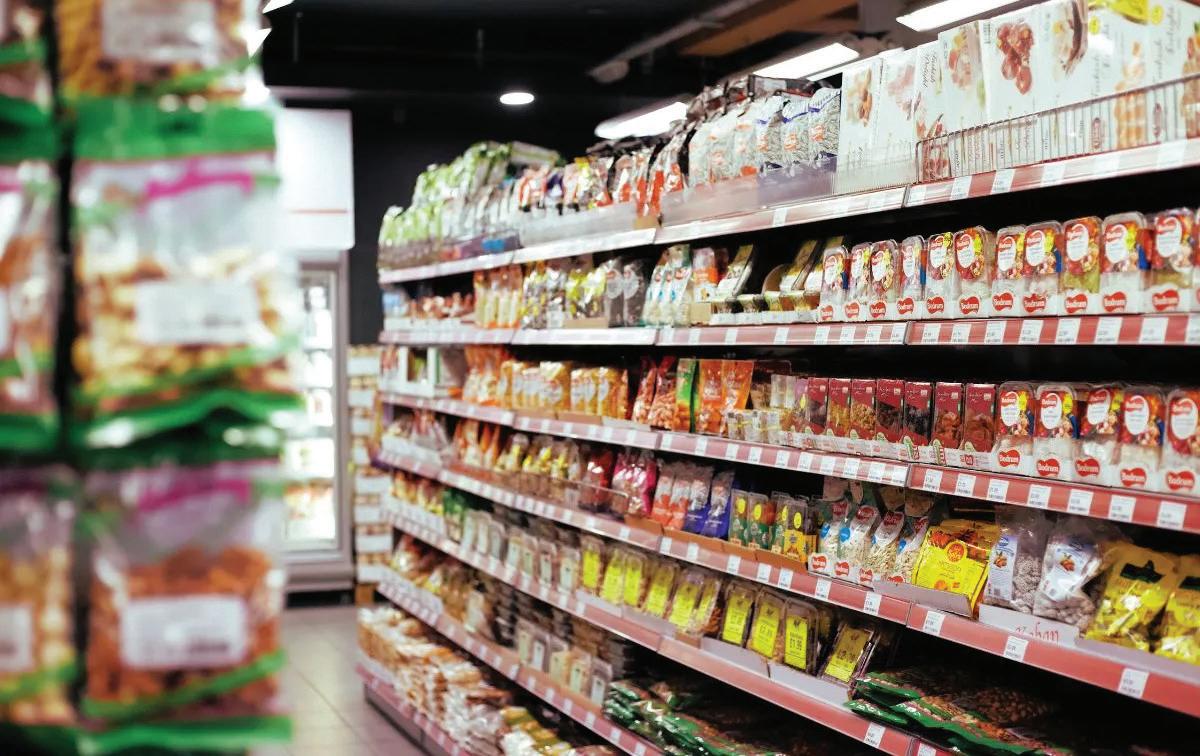
Toppen Shopping Centre, Johor's preferred meeting place and community hub, has expanded its offerings this year.

Anuga and the Islamic Chamber Halal Services (ICHS) have partnered to introduce a new conference format focusing on halalrelated business themes.
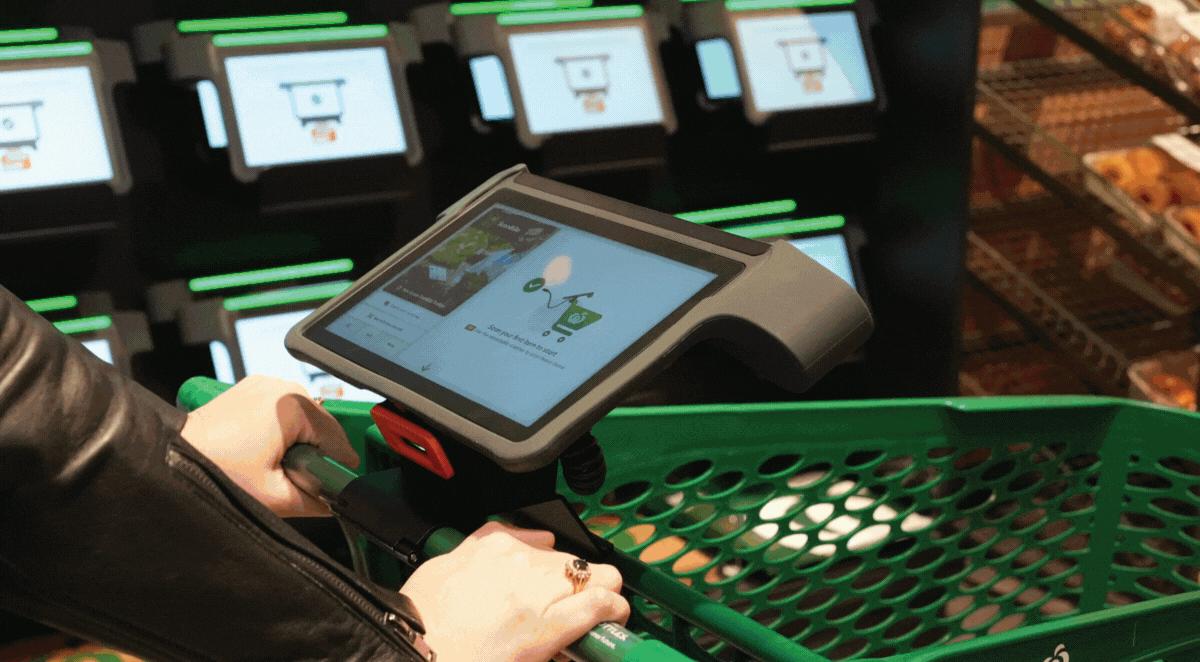
Woolworths launched Australia’s first digital supermarket trolley, allowing customers to scan and bag items and track their spend as they shop in 10 NSW stores.
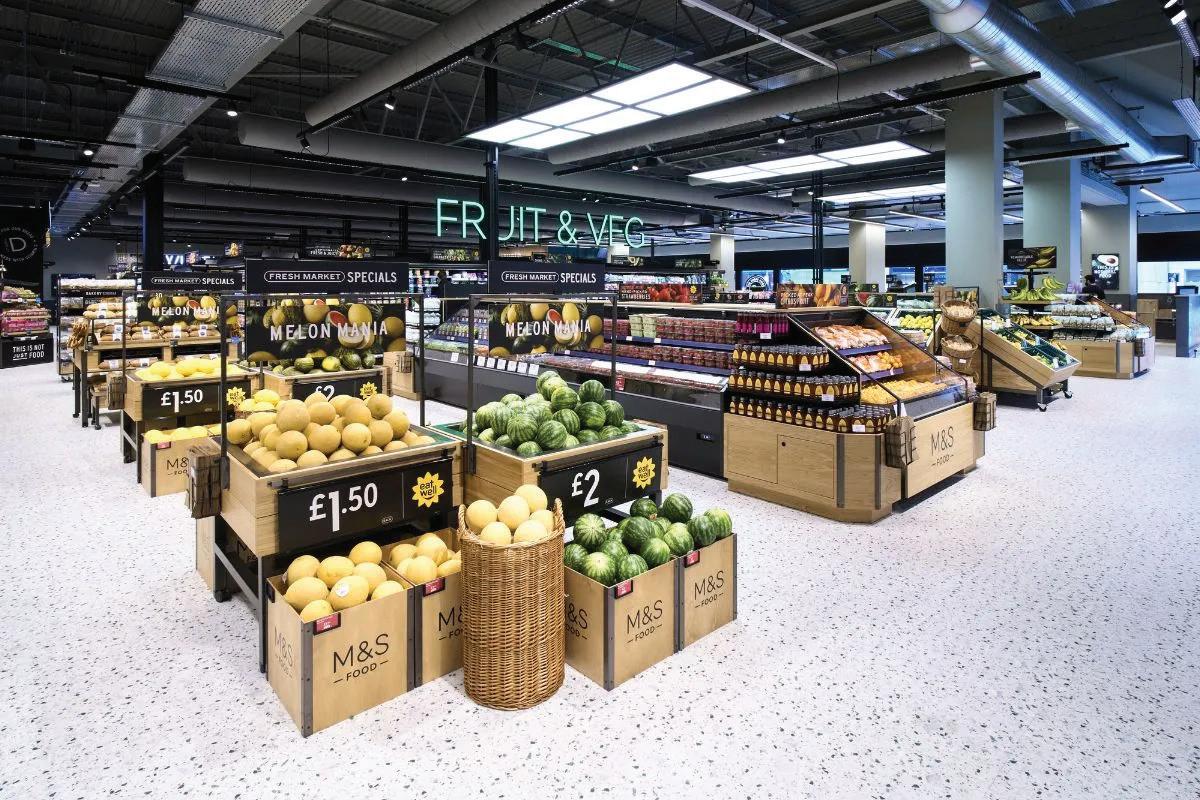
M&S has opened a brand-new, showstopping 12k sq ft food store on Leytonstone High Road.
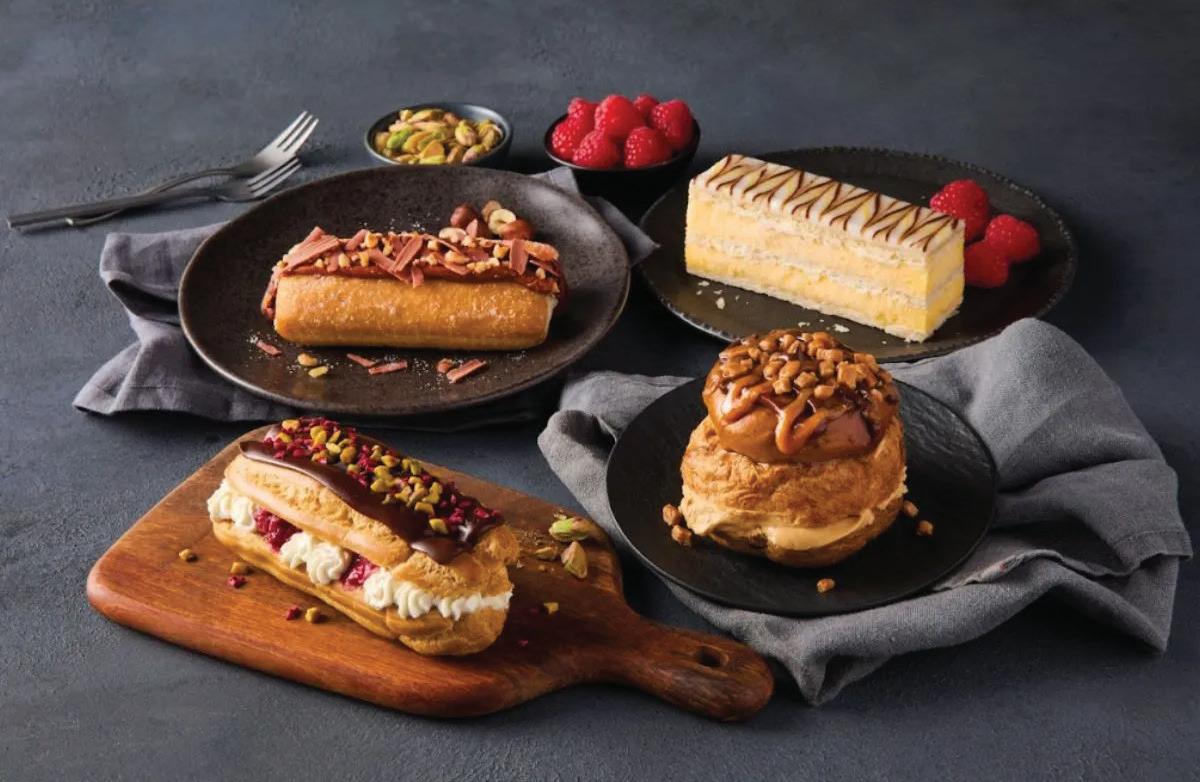
Morrisons has launched a brand new range of patisserie desserts that are sure to impress guests when served during summer feasting moments, all at affordable prices.





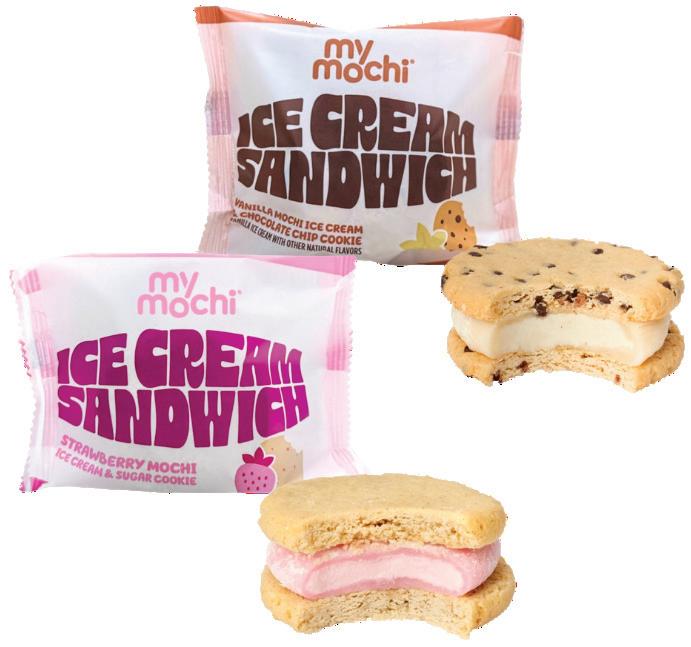
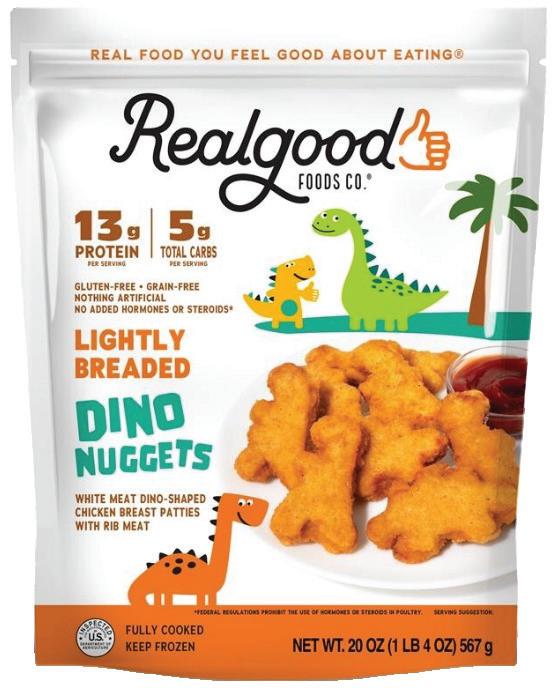
Real Good Foods
The Real Good Foods Company, Inc., a leading health and wellness frozen and refrigerated foods company, announced its boldest, most playful product yet. Its new Lightly Breaded Dino Nuggets are high-protein, grain-free, and dino-shaped bites, now available in freezer aisles at Walmart, HEB, Publix, Wakefern, and Meijer.

My/Mochi
My/Mochi, the world's leading maker of mochi ice cream, has introduced a sensory-first twist on its classic treat.
The brand has launched Mochi Ice Cream Sandwiches - mochi ice cream balls enveloped by two soft cookies, inspired by Gen Z consumers seeking multi-textured, joyful eating moments.
Aldi
Two global dessert sensations collide as Aldi launches a UK supermarket-first – the new Dubai Chocolate Style Mochi. Following the explosive popularity of the #DubaiChocolate phenomenon (over half a million TikTok videos) and the enduring Japanese mochi obsession (4.6 million Instagram tags), Aldi’s latest innovation promises to be a guaranteed hit.


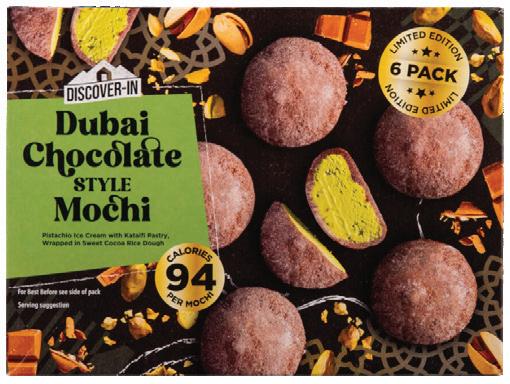
Nutella
In a world where mornings are often rushed, filled with traffic jams, and repetitive routines, Nutella has invited Malaysians to slow down, rediscover the joy of breakfast, and start the day with positivity.
Malaysia is home to some of the world's most breathtaking landscapes, from misty highlands and serene lakes to golden beaches. Its diverse breakfast traditions, such as nasi lemak and roti canai, reflect the country's rich, multi-ethnic culture.

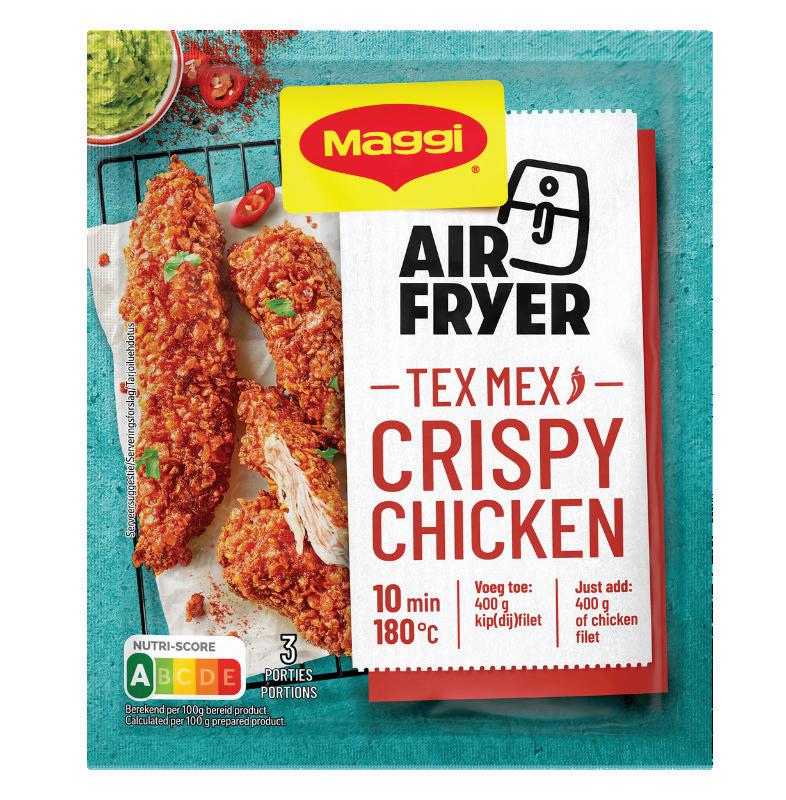
Rockstar Energy
Rockstar Energy has shaken up the energy drinks category with the launch of Rockstar Energy Blood Orange Zero Sugar.
This limited-edition flavour is available in a brand-new 330ml can, designed to broaden appeal and attract new shoppers to the category by offering a more accessible option for non-traditional energy drinkers.
The Blood Orange variant will launch as an initial exclusive to the convenience channel, tapping into a popular summer flavour with its refreshing citrus taste and a key stimulant flavour.

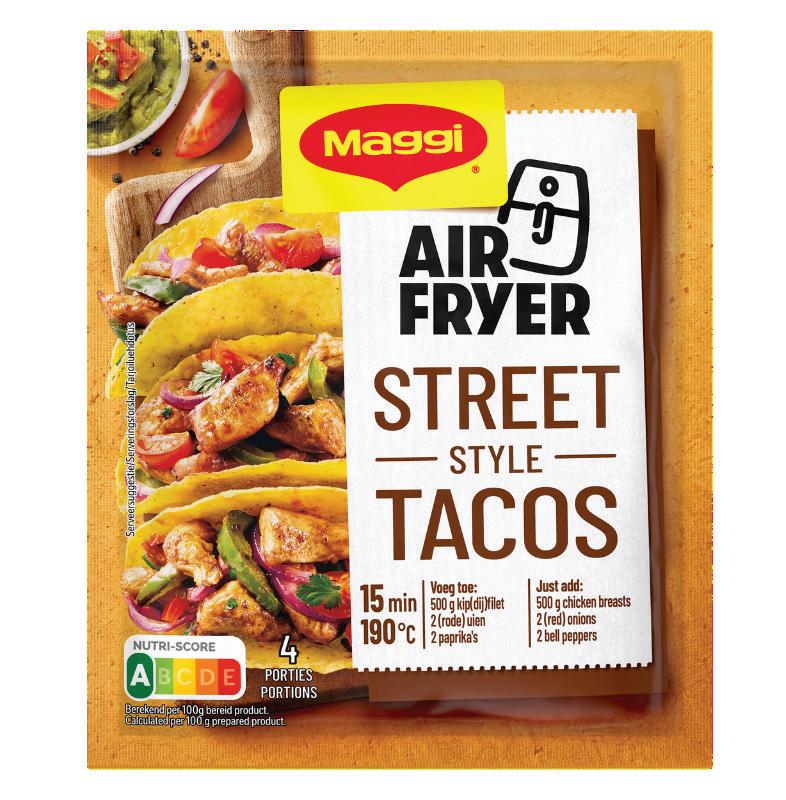
Nestlé
Nestlé has announced the rollout of ambient air fryer cooking solutions across Germany, Spain, Portugal, the Netherlands, Poland, Hungary, Italy, Greece, Finland, Norway, and Denmark.
The company has continued to capitalise on the growing popularity of this modern cooking device, estimating that nearly 30 percent of households across continental Europe now own an air fryer.
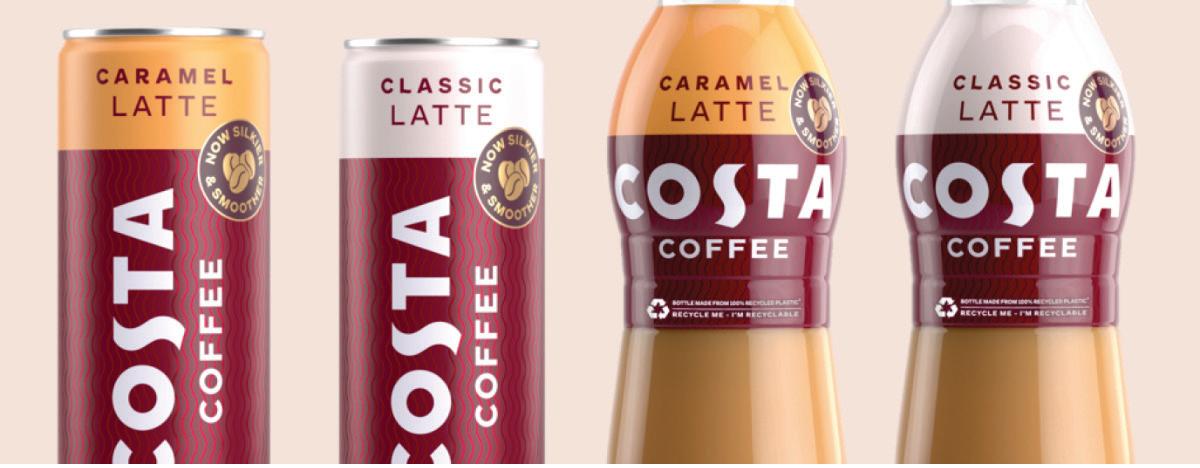
Costa Coffee
Coca-Cola Europacific Partners (CCEP) has reinvigorated the ready-to-drink (RTD) coffee fixture with a bold relaunch of its Costa Coffee ready-to-drink range, rolling out now across grocery, wholesale, convenience and e-commerce channels.
The Costa Coffee ready-to-drink portfolio caters to all consumer needs, offering its vitamin-enhanced Double Shot +, coffee shop classic Latte, and indulgent Frappés.
J2O has rolled out a new look across its core fruit blends range, taking it from a classic favourite to a modern icon.
The rebrand will bring vibrancy to shelves across retail and inject more fun into shoppers’ social occasions, reinforcing itself as a key adult soft drink choice.
The new packaging will keep the brand fresh and relevant for its current audience of adults and families, while also aiming to engage and recruit Gen Z as the next generation of soft drink shoppers.
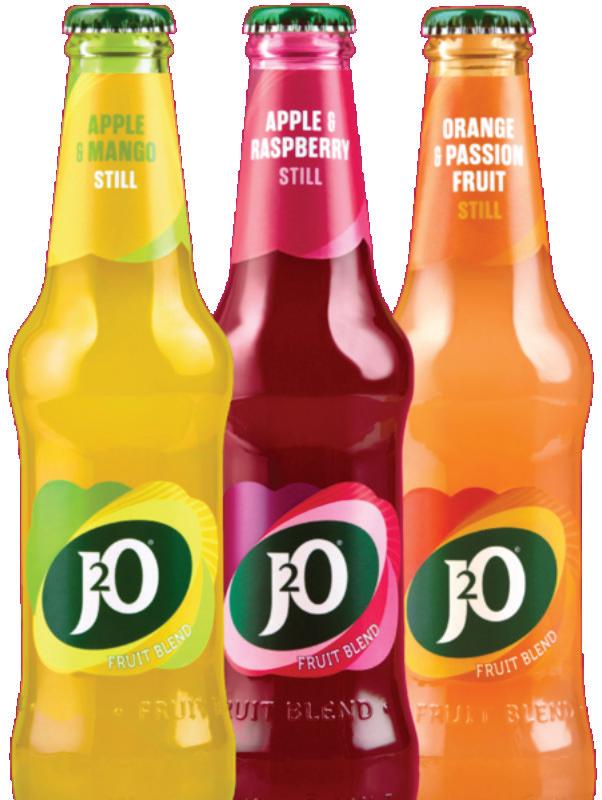





The “JAPAN’S FOOD” EXPORT FAIR - Summer Edition welcomed thousands of global food and beverage professionals to Tokyo Big Sight earlier this month.


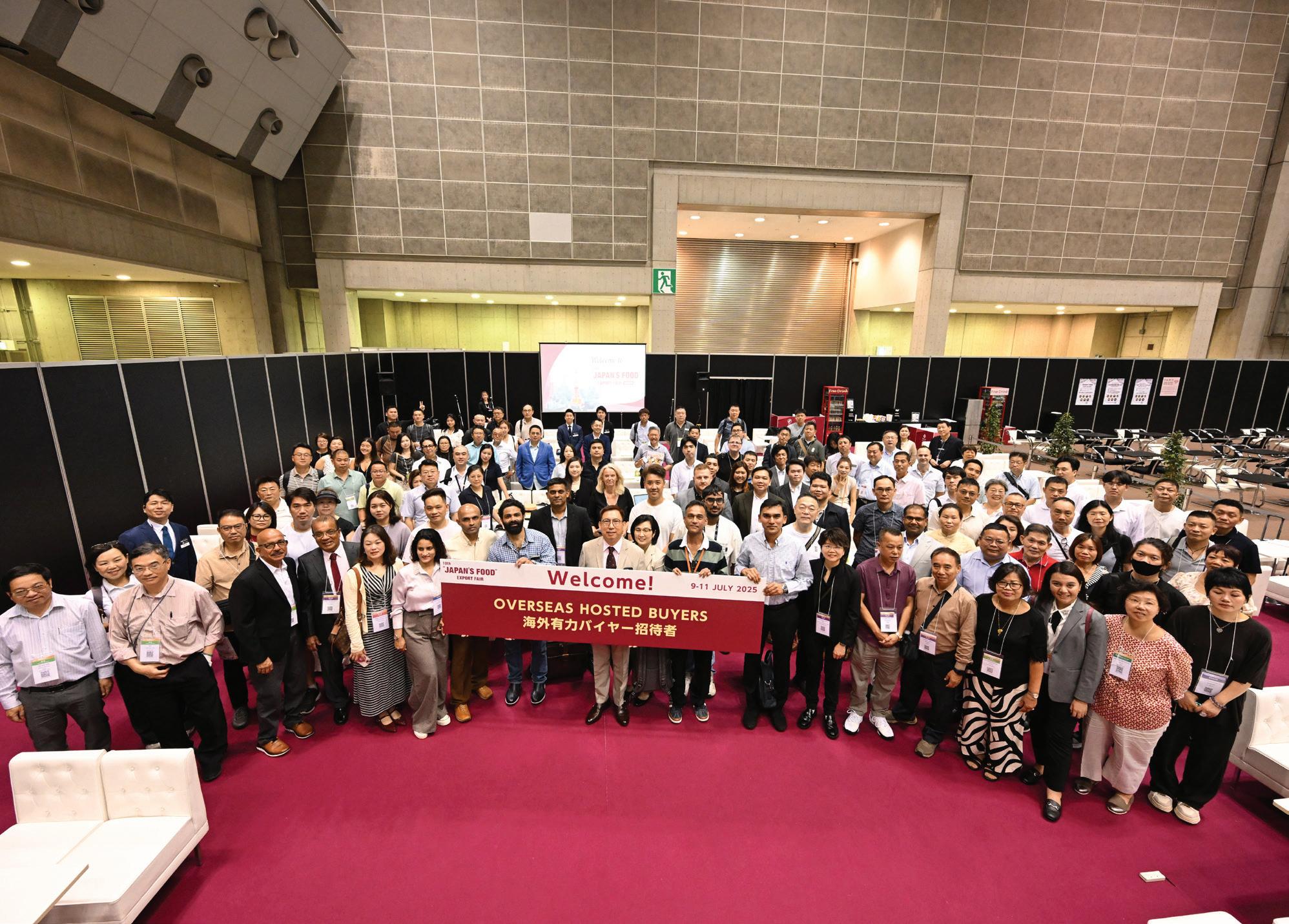
The show delivered three dynamic days of trade, innovation, and cultural connection. This edition welcomed 19,980 visitors and featured 617 exhibitors showcasing the finest export-ready Japanese food and beverages.
Attendees explored an unparalleled array of offerings, from premium sake and meltin-your-mouth cheesecakes to authentic sushi preparation tools and elegant Japanese tableware.
The fair attracted importers, distributors, and retailers seeking to bring a taste of Japan to international markets. It was more than a trade event; it was a celebration of Japanese culinary heritage and craftsmanship.
From business card exchanges to in-depth product tastings, cultural traditions blended seamlessly with business efficiency.
The first day set the tone with eager buyers and exhibitors meeting face-to-face, sampling products, and building initial connections.
The Hosted Buyers programme allowed exclusive access to networking lounges, guided tours, and appointment systems designed to maximise their time on the floor.
By the second day, the aisles were alive with activity as deals were locked in and attendees discovered everything from regional sweet potato cakes to artisanal glassware. There was plenty of indulgence from visitors craving savoury takoyaki or
eyeing picture-perfect taiyaki.
Along with F&B offerings, visitors explored stylish plates, aesthetically designed cups, and sushi okes (hangiri), expanding their sourcing to include more than just ingredients.
The final day concluded with an air of achievement as attendees left with not only new product innovation and insights but also a deeper understanding of Japanese business practices and hospitality.
“JAPAN’S FOOD” EXPORT FAIR continues to strengthen Japan’s role as a global culinary ambassador, creating a vital platform for innovation, exchange, and growth. n





Whole Foods Market opened a new 36,234-square-foot store located at 300 S. 2nd Street in St. Charles, Illinois.
The store’s product assortment includes more than 650 products from the Midwest, sourced with the help of Margie Omastiak, Forager for Local and Emerging Brands at Whole Foods Market.
Opening morning, customers enjoyed complimentary coffee from Big Shoulders Coffee, mini waffles from Evergreen and savoury snack bars from Undressed.
The first 300 shoppers in line were given a limited-edition tote bag and a Secret Saver coupon, featuring offers of up to USD 100 off.
Additionally, on opening morning, Whole Foods Market provided a food donation to HCS Family Services, which makes regular surplus food pickups from local Whole Foods Market stores to help prevent food waste and serve the surrounding community.
“I am so excited to help open the first Whole Foods Market in St. Charles,” said Kristina Malicoat, Store Team Leader for Whole Foods Market.
“The local community’s engagement and anticipation for this new store truly inspires me and my team – we cannot wait to provide this wonderful community with

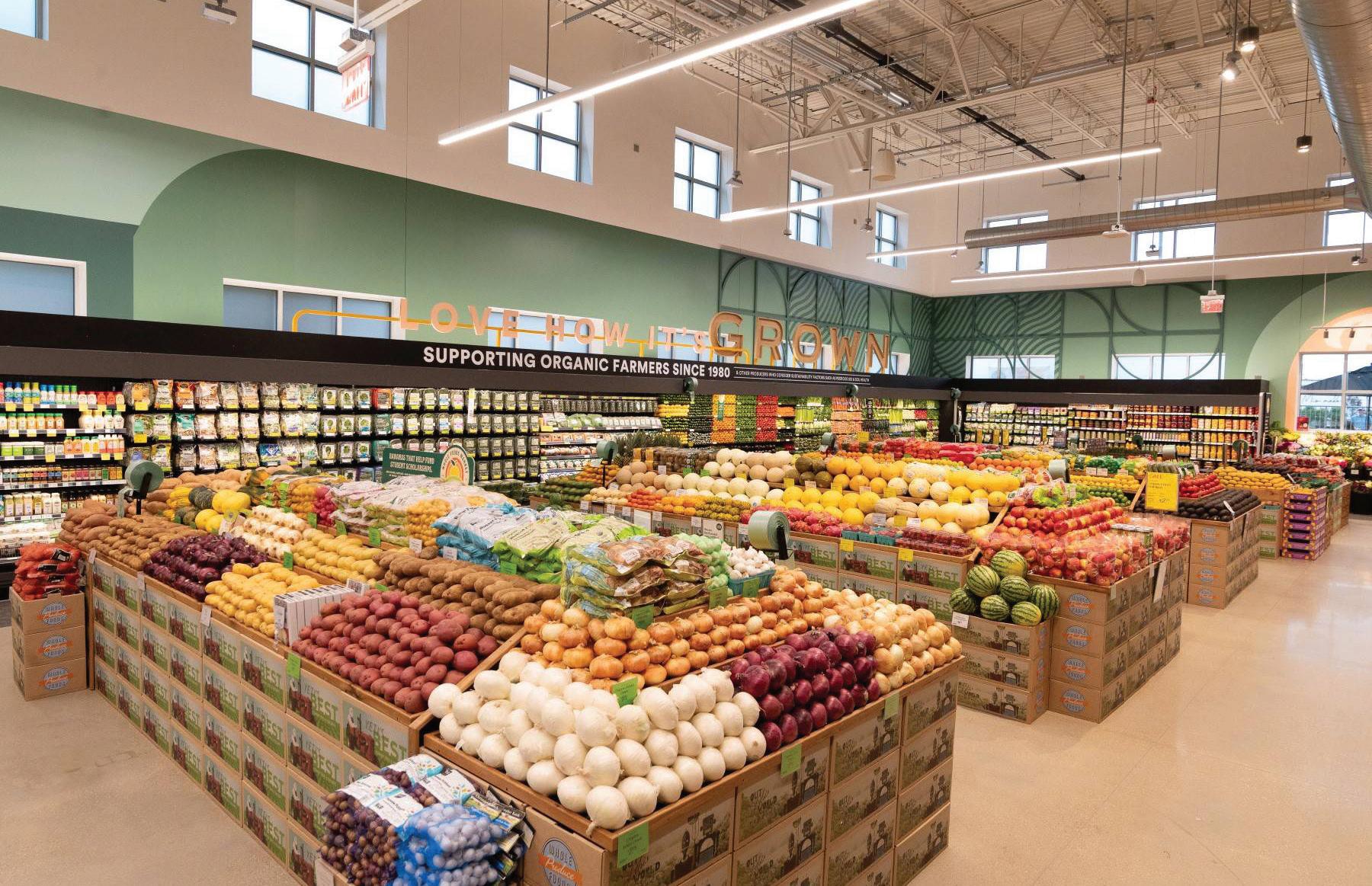
recommendations for any occasion.
• Curated grocery section filled with exclusive brand favourites and local products, including pasta meals from Lazy Food Co., frozen waffles from Evergreen and seaweed snacks from Geem.
excellent service and a wide selection of products that meet our high standards for ingredients and sourcing.”
Features of the new St. Charles store include:
• An array of certified organic, conventional, and Sourced for Good Local offerings includes cilantro from Harmony Valley Farm, Windy City Crunch salad from Gotham Greens, and cherry-on-the-vine tomatoes from Mighty Vine.
• Specialty department dedicated to celebrating cheesemakers and artisan producers. Local items include citrus Gochujang candied pecans from Fortune Favours and spicy nduja from Tempesta Artisan Salami. The department also features a cheese counter overseen by trained cheesemongers who can offer
• Full-service seafood counter featuring only sustainable wild-caught or Responsibly Farmed seafood and a large selection of pre-seasoned and marinated ready-to-cook items. Local options include fresh rainbow trout, rainbow trout spread and salmon spread from Rushing Waters Fisheries. All offerings are either sustainable wild-caught or Responsibly Farmed.
• Full-service meat counter, with butchers available to cut steaks and poultry to order. Features include in-house dryaged meat selections and made-in-house sausage. Local options include boneless skinless chicken breast from Pine Manor Farms and chicken meatballs, burgers and sausage from Amylu Foods.
• Extensive selection of more than 240 craft beers, 180 spirits and 555 wines. Local options include Right Bee Cider, Dovetail Brewery and Judson & Moore.
• A Prepared Foods department featuring fresh pizza, rotisserie chicken, made-toorder sandwiches and sushi made fresh daily from Kikka.
• The bakery department offers madein-house bread, as well as everyday favourites, such as Whole Foods Market’s Berry Chantilly Cake and Brown Butter
Chocolate Chip Cookies. The department also carries a wide variety of special diet items. Local offerings include bread varieties from Sweet Ali’s, Defloured Bakery and Treasure Breads, Inc.
• Whole Body department featuring a wide assortment of wellness, beauty, and lifestyle items. Local products include candles from Bright Endeavours, Kobo Candles and Kalamazoo Candles.
Whole Foods Market will also donate an all-electric refrigerated van to the nonprofit organisation. Both donations are part of Whole Foods Market’s Nourishing Our Neighborhoods program, which aims to enhance the ability of local food rescue organisations to transport surplus food to areas facing the greatest need.
Whole Foods Market will also make monetary donations to area organisations, Lazarus House and Fox Valley Food for Health.
Whole Foods Market also presented Chicago-based supplier Evergreen with a low-interest loan through the Whole Foods Market Lending Program to help grow their operations and support expansion to more Whole Foods Market locations.
Through the program, Whole Foods Market lends money to small-scale, local or emerging producers to help them grow their businesses. To date, the retailer has provided 419 loans, totalling approximately USD 35.7 million in capital to recipients. n




Z’s retail strategy aims to meet the evolving needs of our customers now and into the future. With over 170 sites across the motu the most evident place for us to evolve is across our service station network, which serves over one million customers each week.
The population of Aotearoa New Zealand is highly mobile, and we continue to look at how we best meet our customers’ needs as these continue to change.
For the last two years, we’ve focused on improving our coffee offer – rolling out new coffee machines and providing barista training for our site staff. In 2024 we saw coffee sales increase by five percent which tells us what we’re doing is working. We’ve also just launched a new magic coffee for those serious coffee drinkers, and we look forward to seeing what our customers think of this over the coming months.
Another thing we’re turning our attention to is expanding our in-store product range
to include ‘top-up’ grocery items at a number of Z sites. We’re adapting the range based on customer insights, and different locations may offer different products – for example inner city stations may sell more snacks or personal hygiene goods, and residential areas may sell more pantry topups such as sugar, or milk.
This expansion is being supported by our ongoing store refresh programme to modernise the look and feel of many of our sites. Along with a fresh look and feel, the refresh is about building flexibility into the design and layout of our stores so we can easily adapt to the changing needs of our customers as these evolve.
With the evolution of our Z sites, we felt it was important our loyalty offer continues to benefit our customers and evolves alongside them and their needs. This is why earlier this year, we launched Z Rewards. It’s our new way to recognise loyal customers across more of their spend at Z –
beyond the pump – and our aim is to make it simple, yet generous.
Customers can earn points on a variety of purchases from fuel to coffee to EV charging and when they earn enough, these can be used on a selection of different instore treats - like a pie or a coffee. They also still receive an everyday fuel discount of at least 6 cents per litre, which we knew was important to many of them.
by Tim Bailey, Head of Z Retail

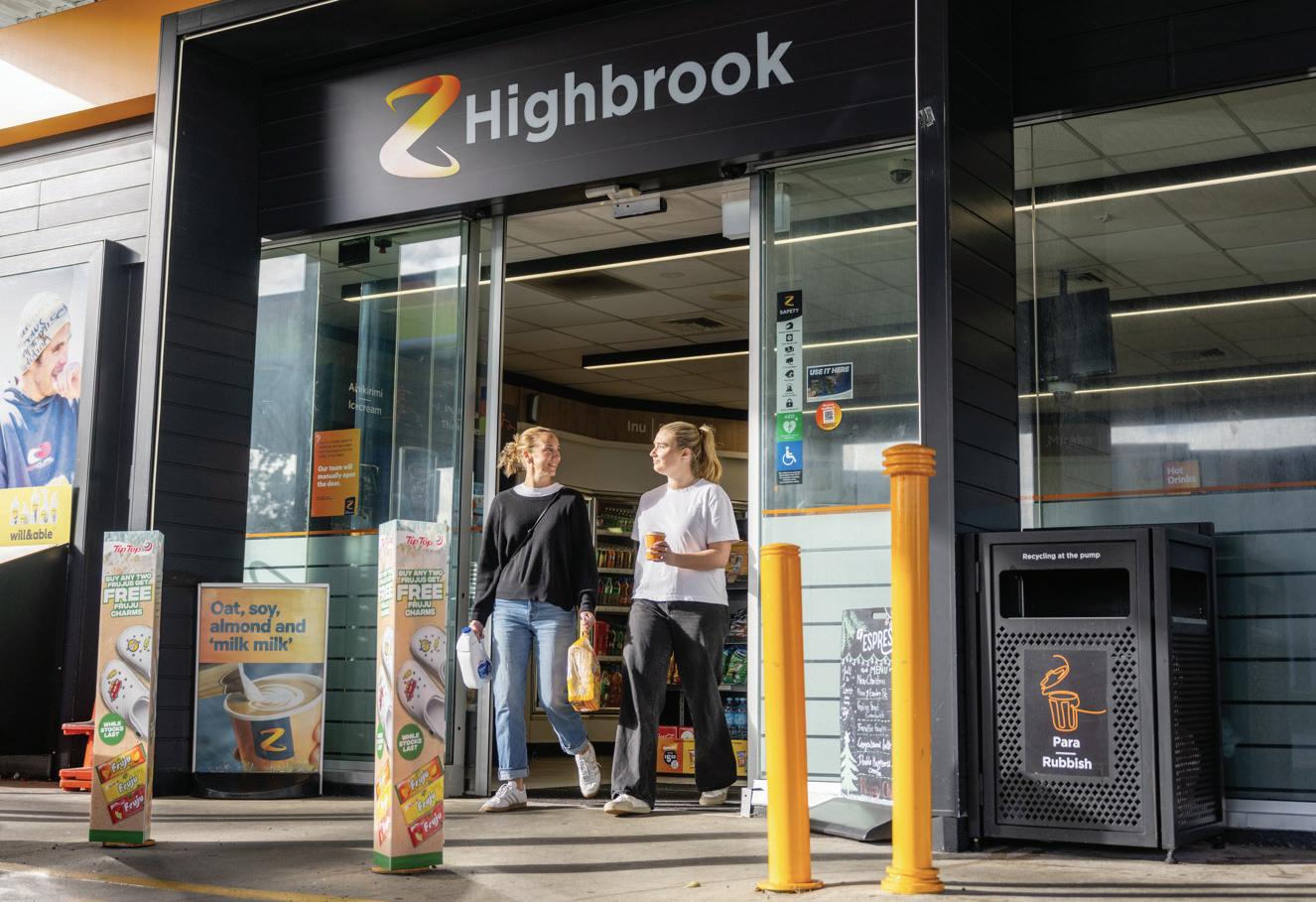
Umall, Australia’s leading online platform for Asian groceries, has officially acquired Asian Grocer Online (AGO), one of the country’s most established digital retailers of Asian food products.
This acquisition marked a key milestone in Umall’s continued expansion. Prior to the acquisition, Umall was already processing approximately 2,000 orders per day, with an average order value of AUD 85, underscoring its strong customer loyalty and operational scale.
As a technology-first company, Umall attributes its rapid growth to deep investments in algorithms, automation, robotics, and AI-powered systems, from smart route dispatching to automated
warehouse workflows. These innovations have allowed Umall to deliver faster, fresher, and more efficient service than traditional players.
During the ongoing transition, AGO’s website is temporarily unavailable while its systems are being upgraded. Customers are encouraged to shop directly on Umall's website, where they will enjoy:
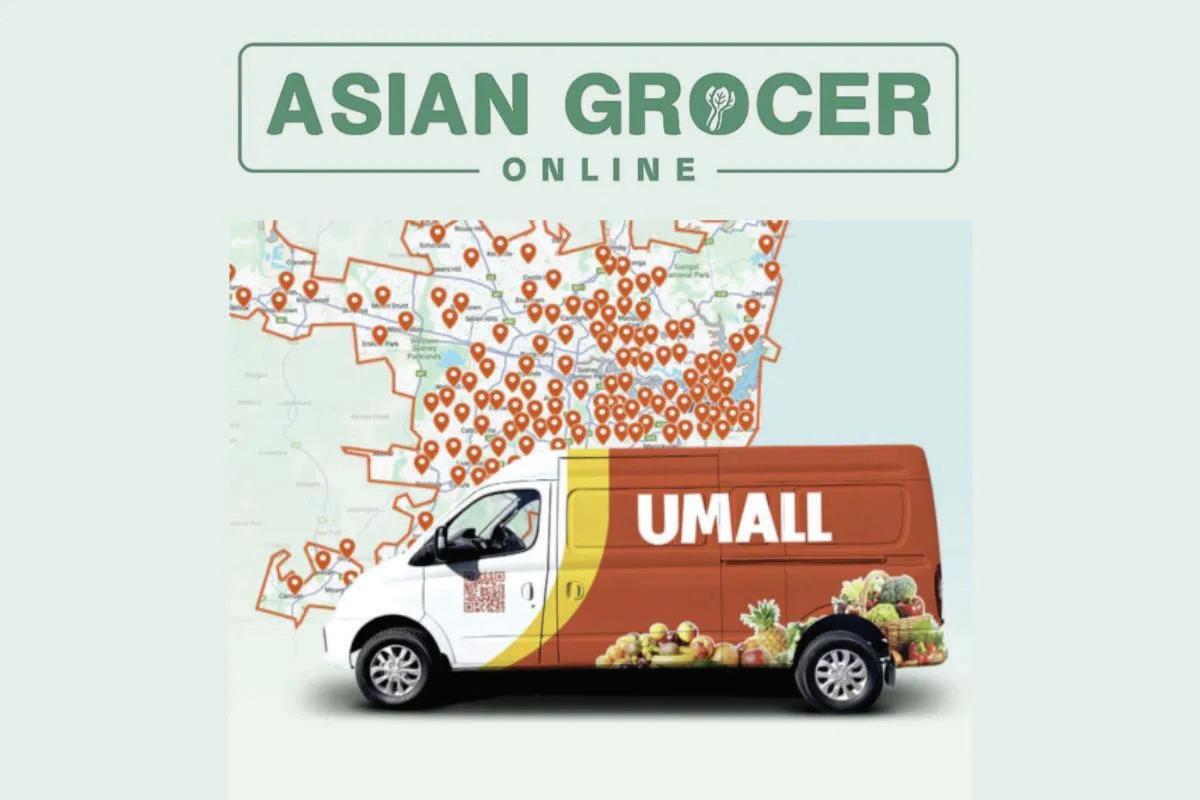
• A fully upgraded unified platform is coming soon, combining the best of both brands.
• A wide selection of Asian groceries and fresh produce.
• Free next-day delivery on orders over AUD 59;
• A seamless, tech-driven shopping experience across web and mobile.
Now, by integrating AGO’s category expertise and loyal customer base, Umall has further strengthened its leadership in the multicultural grocery space and expanded its reach across Australia. n
The Commerce Commission has issued its final decision to reduce interchange fees paid by Kiwi businesses to accept Visa and Mastercard payments.
It costs New Zealand businesses around NZD one billion a year to accept Visa and Mastercard payments, which is often passed onto their customers through surcharges and higher product costs.
The Commission has determined that this cost is too high and has taken action to reduce it for businesses by approximately NZD 90 million per year.
“This is an important step in our continued work to cut costs for businesses and consumers. Our latest decision builds on the initial fee caps set in 2022, which led to NZD 140 million in annual savings to New Zealand businesses,” said Commerce Commission Chair Dr John Small.
“This decision cuts the cost for businesses accepting payments made through credit cards and foreign-issued cards, which are often the most expensive for businesses to accept. We expect our latest decision to see the average small business save around NZD 500 each year in lower fees.

Individual businesses could save more or less, depending on the mix of transactions they accept."
Dr Small added that in making this decision, ComCom was careful to balance lower costs for merchants today with keeping incentives for new fintechs to innovate and challenge the big established incumbents. That meant leaving enough money in the system to keep it competitive and safe from fraud and scams over the long term.
Consumers can expect these cost savings to be reflected in fewer and lower surcharges; however, regulation may still be necessary to curb excessive surcharging.
“We’ll be exploring what regulation may be needed to address excessive surcharging, which we consider to be anything more than the cost businesses face to accept Visa and Mastercard payments," he said.
“We have decided not to regulate the fees for commercial credit card or prepaid debit card payments at this time, based on feedback we received during consultation. We’re looking to understand more before deciding if these payment types should be regulated."
The Commission expects payment providers to support businesses to understand their costs to accept these payment types, so where businesses choose to surcharge, it accurately reflects their cost. n




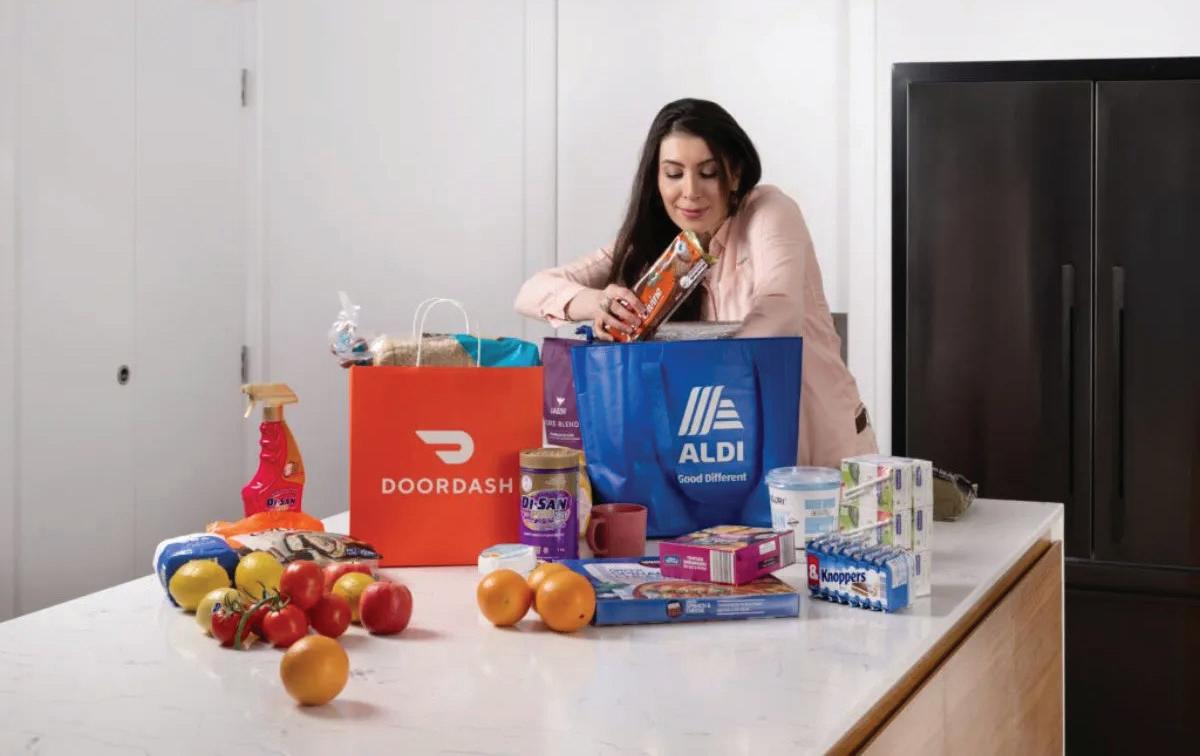
In a first for the supermarket, ALDI Australia is teaming up with DoorDash to trial on-demand grocery delivery starting in Canberra, adding even more convenience to its ‘Good Different’ shopping experience.
From Tuesday, the 8th of July, Aussies in the nation’s capital can shop ALDI’s exclusive range of high-quality products at everyday low prices at the click of a button for the first time ever.
Through DoorDash, Canberrans can now conveniently order from more than 1,800 products, including award-winning fresh fruit and vegetables, meat, seafood, dairy, bread and household essentials, transforming the way they shop with ALDI.
“Since entering the Australian market, ALDI’s mission has been to deliver highquality groceries at the lowest prices for Australian households, and this ambition remains as strong as ever. Through our partnership with DoorDash, we can now literally deliver on this mission directly to Aussies’ doorsteps in an exciting new
way that we know our customers have been seeking,” said Jordan Lack, Chief Commercial Officer at ALDI Australia.
“We’re thrilled that customers in Canberra will be able to shop with ALDI from the comfort of their homes, bringing our ‘Good Different’ shopping experience to more and more people in the tap of an app.”
Canberrans can now skip the supermarket shuffle and get their hands on ALDI goodies by downloading the DoorDash app or searching for ‘ALDI’ on the website. Customers then simply add items to their cart and order on-demand, or choose a delivery window that suits them, with Dashers who shop and deliver straight to their door.
Simon Rossi, Vice President of DoorDash APAC, was thrilled to partner with ALDI to deliver greater convenience, choice and affordability to the people of Canberra.
“We know that value and convenience are top priorities for Australians, and this partnership is about continuing DoorDash’s mission to combine the best of both
worlds. With ALDI’s trusted quality and DoorDash’s on-demand delivery technology, we’re excited to create more seamless and accessible shopping experiences,” said Rossi.
“This partnership with ALDI represents an exciting step forward in how DoorDash is redefining how Aussies can shop for groceries with a range of delivery options from on-demand, same day or scheduled, making everyday essentials easier to access than ever before.”
As of today, all customers within the service area of ALDI stores in the ACT will have access to ALDI on DoorDash. While ALDI’s availability on DoorDash is currently limited to Canberra, the partnership is expected to roll out, bringing this convenient new way to shop ALDI to more Australians across the country.
“We know Australians will rejoice at the news of ALDI taking our first step in offering customers this convenient shopping format. We will be watching our Canberra trial very closely with plans to scale in the near future,” said Lack. n

The Government is making it easier for police to punish shoplifters and is introducing stronger penalties for low-level theft.
Justice Minister Paul Goldsmith said that public confidence in the justice system is undermined if people can steal with apparent impunity. He found it disheartening and said that the government will not sit by while shoplifters rob businesses of their livelihoods.
Currently, the administrative burden can deter retailers from making official complaints, and lower-level offending often goes unreported or unpunished. The government is restoring real consequences for crime, and shoplifting is no exception.
The Proposed Changes Include:
• Introducing an infringement regime for shoplifting in retail premises. For stolen goods valued up to NZD 500, infringement fees will be up to NZD 500. For goods valued over NZD 500, fees will be up to NZD 1,000.
• Strengthening the penalties for theft. The maximum penalties will be one year imprisonment (if the value is approximately NZD 2,000 or less), or seven years imprisonment (if the value is more than NZD 2,000).
Uber Eats said it was making it even easier for customers to access fresh groceries from their favourite local and regional stores.
Uber Eats has recently expanded its grocery delivery service to include new partnerships with the much-loved local brands Big Y and King Kullen in the Northeast, Superlo Foods, Lunds & Byerlys, and Foxtrot in the Midwest and Texas, and Vallarta Supermarkets in California.
This expansion reinforces Uber Eats’ commitment to growing its grocery category with beloved regional retailers, ensuring customers across the U.S. have access to the products they know and love with the convenience of on-demand delivery.
The latest additions build on Uber Eats’ momentum in the grocery space, complementing the platform’s national partnerships with leading grocery groups while catering to regional preferences and tastes.
Each of these retailers brings something
unique to their communities, including Big Y’s commitment to fostering community growth through partnering with local growers and manufacturers, Foxtrot’s modern take on convenience store essentials, King Kullen's legacy as the nation's first supermarket, Lunds & Byerlys’ reputation in premium groceries, Superlo Foods’ daily cut Certified Angus Beef and Vallarta Supermarkets’ extensive selection of Latin American products.
“Uber has been absolutely fantastic to work with,” said James Randall, Officer of Memphis-based Superlo Foods.
“Working through integrations can be difficult, but they meet you where you are, and have the flexibility to adapt to you.”
“Our goal is to provide customers with an unparalleled selection of grocery options, from national brands to the local retailers they trust most,” said Hashim Amin, Head of Grocery & Retail for North America at Uber.
“With this latest expansion, we’re
• Creating a new aggravated theft offence for when the value of the goods is under NZD 2,000 and the theft is carried out in a manner that is offensive, threatening, insulting, or disorderly.
“Harsher penalties could mean up to twice as long behind bars for aggravated theft, and criminals will be forced to think twice before destroying more lives,” said Associate Justice Minister Nicole McKee.
“Our government is focused on restoring law and order, reducing violent crime, and putting victims first in our justice system. I want to thank the Ministerial Advisory Group and its Chair, Sunny Kaushal, for their work shaping this proposal.”
These changes fulfil a commitment in the National/New Zealand First coalition agreement to ensure real consequences for lower-level crimes such as shoplifting. n
deepening our investment in regional grocery partners and making it easier than ever for customers to get their grocery shopping done from the comfort of their homes. We’re excited to continue building on this momentum throughout the year.”
Uber Eats has seen significant growth in its grocery division, with consumer demand for grocery delivery continuing to rise.
The addition of these new regional grocers strengthens Uber Eats’ position as a leading marketplace for grocery delivery, providing seamless integration for customers, efficient fulfilment for retailers, and access to realtime tracking for orders.
Uber Eats’ grocery expansion aligns with its broader mission to provide convenience at scale, helping customers access the best of their neighbourhoods with the tap of a button. By integrating regional favourites into the platform, Uber Eats is responding to growing consumer preference for local and speciality grocery options alongside national brands. n




